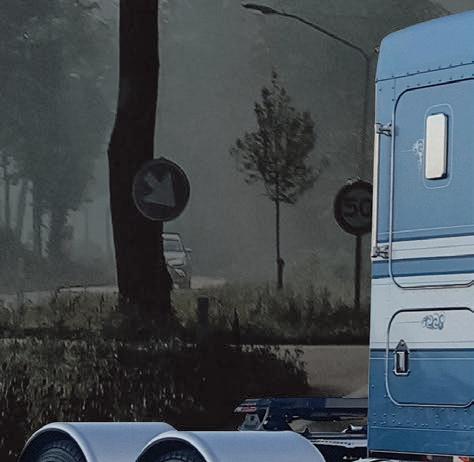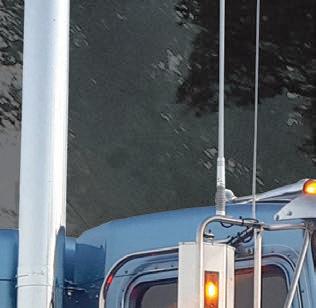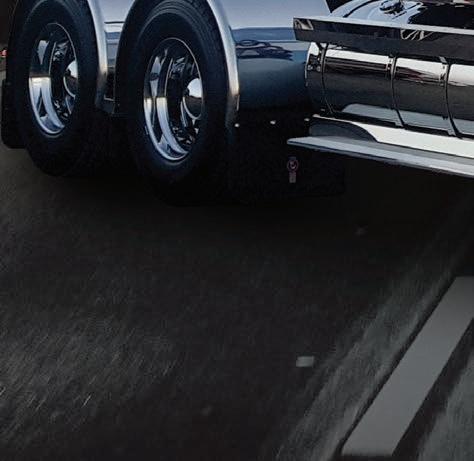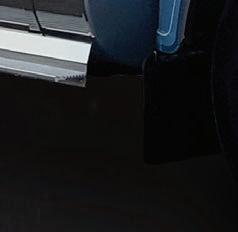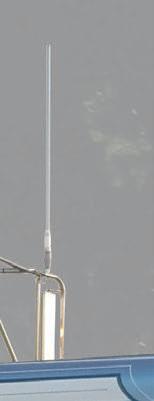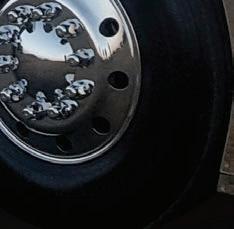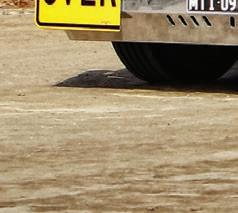









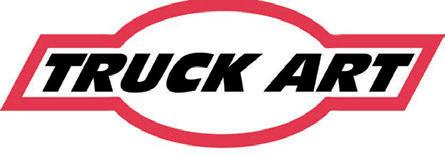









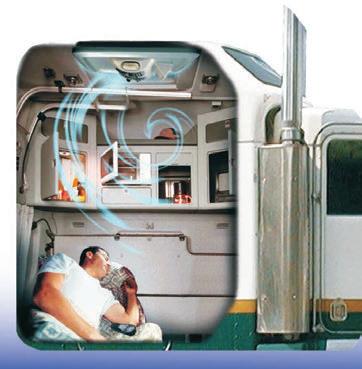
Address:






















Address:
LONG-RUNNING Wol-
longong trucking operator
Barnett’s Couriers has closed, blaming a crippling cyber-attack earlier this year for its demise.
Big Rigs couldn’t reach the company for further comment, but a recorded message on an emergency mobile number con rmed the news.
“As you know, Barnett’s Couriers has been the victim of a cyber incident and consequently our business cannot operate productively,” said the message.
“Although we have been working tirelessly with leading IT consultants to restore our systems, regrettably we have been unable to overcome these challenges and have made the di cult decision to cease oper-
ating Barnett’s Couriers.
“We want to thank you, our customers, for the loyalty you have shown to our business over 40 years.”
e message goes on to relay email addresses for further inquiries – quotes@barnetts. com.au, or accounts@barnetts. com.au.
Both, however, triggered automatic responses similar to the voicemail, with the accounts email adding the below:
“We have a small team who will be nalising all outstanding accounts in the coming weeks. Your patience is appreciated whilst our team also work through the backlog of queries that we have received.”
In a radio interview last week, TWU’s NSW secretary Richard Olsen said he was

deeply concerned to learn that Barnett’s had abruptly closed and was urging the company to provide clarity on the situation and ensure workers are fairly compensated.
Olsen understands that the majority of its truckies were owner-drivers, totally reliant on work through the company.
*12 month average, publisher’s claim October 2022
“What we’re very concerned about is that these people are probably paid on a monthly basis, at best, so there’ll be thousands of dollars outstanding to these owner-drivers.”
Barnett’s truck driver Dave Bailey told the Illawarra Mercury that he was still paying o loans for his prime mover that
he bought last December and now faces an uncertain future at 62.
“I’m not the only one, who’s going to employ us?” he said.
According to the same report, employees were given a payment equivalent to three weeks’ notice, while most of the drivers who worked as contractors, were given a one-o loyalty payment of $1000 during the stand-down period.
Up until the supposed cyber-attack, the company seemed to be in good health, with trucks heading out and returning with full loads. e company had assured drivers that their personal information – including bank account details – had not been compromised during the attack.
A 57-year-old truck driver –who worked for ve di erent transport companies while receiving injury compensation – was caught out after a social media post about his new role as an interstate driver. e driver was sentenced in the Echuca Magistrates’ Court on Wednesday April 24 after pleading guilty to one charge of
dishonestly obtaining nancial advantage by deception.
He has been ordered to repay $73,062, ned a further $10,000 after continuing to claim injury compensation payments while working for multiple transport companies, and also ordered to pay costs of $2000.
e court heard the truck
driver was working as an interstate truck driver when he was seriously injured in a crash in 2014 and began receiving weekly workers compensation payments.
e fraud was uncovered in December 2018 following the social media post.
An investigation found the driver had earned about
$55,000 as a truck driver for ve di erent transport companies between February 2017 and August 2018 while continuing to tell his GP, insurer and an independent medical examiner that he had not returned to work. Return to Work Victoria executive director Jason Lardelli said there was no excuse for this level of dishonesty.

“Our workers compensation scheme is there to help those who genuinely need it to support their recovery and return to work,” Lardelli said.
“ e Victorian public expects us to safeguard these funds and those who actively seek to defraud the system by using it for personal gain will be held to account.”

QUEENSLAND trucking is celebrating one of its biggest wins with news that the federal government is committing $720 million in this year’s budget to help build the Inland Freight Route (IFR).
e future of the 1185km highway between Mungindi and Charters Towers, otherwise known as the Second Bruce, had been in limbo as infrastructure minister Catherine King reviewed a wide range of projects, 50 of which were subsequently axed.
e Albanese government is also sticking with the original 80:20 investment split with the state government, rather than the 50:50 model King put in place following the probe last year to stem $33 billion in cost blowouts and delays on infrastructure projects approved by the previous government.
“We’re thrilled to see that [the IFR has been approved] – it’s the culmination of four years of pretty solid work,” said proud Queensland Trucking Association CEO Gary Mahon
“It’s a great moment for Queensland, and for the association. We’ve really been putting it on the line and making it our

biggest priority for some time.
“It’s progressive for the regions but it’s also positioning the industry so much better for the future.”
Mahon said federal investment funds are available now in the project investment schedule and will roll out over the next six years, along with the state’s commitment of $200 million.
To trigger the rst tranche, all the state needs to do is submit its project plan, said Mahon.
“ e advice I’m getting is that those works will be underway in the next several months.
“ e state has already committed $103 million to that
program of works. e design work, all the project parameters have all been completed over the last few years, so they’re ready to go.”
Mahon understands the biggest chunk of the initial budget-spend will be xing the roughness on the Belyando, in the southern half of the road between Clermont and Charters Towers.
After that, Mahon understands some turnouts, gradients and bridge work will be the next priorities.
“So that basically moves us to be able to start concentrating on access on the Warrego, and a more appropriate treatment for Bremmer River.
“ e Cunningham’s Gap project is coming along quite well, so what we’re seeing forming now is a genuine alternative for big multi-combinations.
“We still have the challenge of bringing that sort of e ciency into Brisbane, because at the moment it’s held up in Gatton.
“But as that Inland Freight Route is further progressed, it’s giving us a genuine alternative for big multi-combinations to head up into the highly productive northern provinces of
northern Queensland, in particular.”
Mahon said it also gives industry added ood immunity during the major weather events that have shut down large sections of the Bruce in recent years.
“ e thing we’re most pleased about is starting to really form a genuine road freight network in this state.
“I also took note that at this stage, there’s no particular announcements about Inland Rail.
“So, I think that further reinforces how important that road connection’s going to need to be from Toowoomba into Brisbane and being able to access the port, the advanced manufacturing and a whole variety of other important facilities along that corridor from Rocklea through to Plainland.
Mahon said that region, along with Toowoomba, is becoming an increasingly vital logistics hub
“You put all those elements together being progressive with this investment [in the IFR] is particularly pleasing news.
“Not only that, it’s such a great boost for Queensland



regions as well. is is critical to an industry which will require the use of diesel-powered trucks for some years while waiting for the progression of zero emission heavy vehicle advancements and infrastructure investment in the state.
Mahon also welcomed the news of an extra $467 million in spending on the Bruce Highway, which included $154m for improvements along the north corridor.

But he understands that the large percentage of the funds will go towards the upgrade of the Pine Rivers Interchange.
“It’s a welcome investment to improve congestion in Brisbane as you roll o the motorway onto the Bruce, but what we want to see more of is investment in the Bruce in the regional areas; overtaking lanes, bypasses of towns, pavement widening, bridge improvements, and rest areas.”



When you choose Ryco, you’re not just buying a filter; you’re buying industry leading quality, round-the-clock technical support, innovative solutions, and unparalleled expertise.
This means that when a truck is serviced utilising Ryco Filters, fleet managers can be confident their New Vehicle Warranty is protected, whilst reducing downtime and maintenance costs.
Contact Ryco to discuss your fleet’s requirements. So, when you need to get the job done, be Ryco Ready.

THE National Road Transport Association (NatRoad) has pointed to a range of funding promises in the federal budget it says are good news for the transport industry Support for low carbon fuels, road safety funding, and power bill and tax relief for small businesses were given the tick by NatRoad, with its CEO Warren Clark stating that the budget delivered a range of positive initiatives for operators.
“A 12-month extension to the $20,000 instant asset write-o will help small businesses claim an immediate tax bene t on new assets through to June 2025,” Clark said.
“ is is something we’ve pushed hard for in a number of budgets.
“Eligible road transport businesses will also appreciate the modest $325 rebate on their power bills.”
Clark welcomed increased funding for the Roads to Recovery and Black Spot Programs too.
“NatRoad hopes that the $10.8 million in 2024-25 for a one-year National Road Safety Education campaign

has a heavy emphasis on truck awareness,” he said.
“ e $21.2 million over six years to improve the reporting of national road safety data via the National Road Safety Data Hub is important and long overdue.
“Whilst we welcome additional road funding where the routes are relevant for freight, ultimately we still need to see all governments, including the states and territories, implement road service level standards so we know our tax dollars are going to the roads which need it, with an increased focus on road maintenance.”
While NatRoad believes the budget delivered “mostly good news”, it did fall short on a
number of areas the associa-
tion had been pushing for.
Among these was the establishment of a $3.5 billion Clean Transport Fund, which NatRoad has been advocating for, for some time. It had hoped that such a move would help the industry tackle decarbonisation and the transition to alternative approaches to heavy vehicles, like electric, hydrogen and low emission trucks.
NatRoad’s pre-Budget submission had also called for a National Service Level Standards Framework, to drive more infrastructure spending, and act as a mechanism to cap future increases to road user and registration charges. It had also hoped for practi-
cal action to reduce red tape, through investment in better heavy vehicle road access with an accelerated roll-out of a national automated access system.
In a newsletter distributed to its members last week, ahead of the Budget announcements, NatRoad said, “Too many operators like you are caught in the red-tape trap of applying to local road managers for permission to access roads and bridges.
“Opening up as-of-right access, and having access maps accessible online, would remove frustrations for operators, boost road freight e ciency and take costs out of the supply chain for consumers.”
A SERIES of road safety programs will receive a huge funding boost, as announced in the 2024-25 Federal Budget.
Programs to benefit from additional funding are the Roads to Recovery Program, Black Spot Program, and the new Safer Local Roads and Infrastructure Program which merges the Heavy Vehicle Safety and Productivity program with the Bridges Renewal Program.
Set to receive the biggest piece of the pie is the Roads to Recovery Program, which supports the construction and maintenance of the nation’s local road infrastructure assets.
Funding for the Roads to Recovery Program, which is available to all local government areas in Australia, will progressively rise from $500 million to $1 billion per year.
Roads to Recovery operates on a five-year funding period.
In the current funding period, from 2019-20 to 2023-24, $2.6 billion was made available nationally. Since the start of this funding period, recipients have delivered repairs and upgrades to almost 12,000 road sites.
From July 1, 2024, a new five-year funding period will commence. The available funding for the Roads to Recovery Program will increase until $1 billion is available per year under this ongoing program.







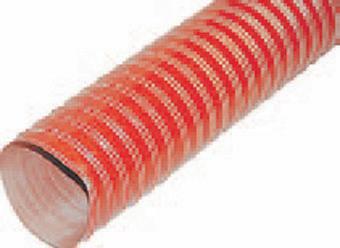
For the Safer Local Roads and Infrastructure Program, the Federal Government has committed at least $200 million each year.
“To ease the administrative burden on applicants, we have merged the Heavy Vehicle Safety and Productivity Program and the Bridges Renewal Program into a new Safer Local Roads and Infrastructure Program,” said a government media statement.
In a bid to improve driver education around safety, $10.8 million will go towards a oneyear National Road Safety Education and awareness campaign, and $21.2 million over six years to improve the reporting of national road safety data via the National Road Safety Data Hub.
“This Data Hub will ensure vital and more harmonised road-safety data can be used effectively by everyone, including decision makers in all states and territories,” a statement said. In addition, $100 million will be invested into a new Active Transport Fund open to states and territories, funding new and upgraded bicycle and walking paths.
While funding for the Black Spot Program will increase from $110 million to $150 million per year. This initiative focuses on safety improvements to road locations where there has been a high incidence of crashes.

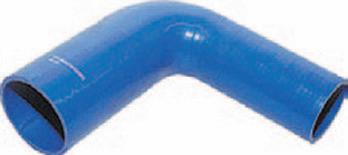



A $10.2 million spend on camera enforcement for truck bans in Melbourne’s inner-west is doomed to fail, predicts the Victorian Transport Association (VTA).
e investment was announced in the recent state budget and touted as a victory for the community and lobby groups, such as the Maribyrnong Truck Action Group (MTAG).
But VTA CEO Peter Anderson believes the argument that the monitoring equipment will solve all the issues in the area is fundamentally awed.
“ ere’s still going to be trucks on the street, this is what they don’t understand ey think that this is going to eradicate all trucks o the streets at all times, and it is by no means going to do that.”
e Victorian Government said it will begin enforcing 24hour truck bans through video analytics technology upon the completion of the West Gate Tunnel Project next year.
Preparations for the 24/7 ban have been underway over the past year with data cameras in operation throughout the inner west, monitoring
the movements of trucks and forming the basis for future enforcement.
But Anderson asks: “What trucks do you want to get o the streets? e garbage trucks? e fuel trucks? e food trucks?
“ e trucks that are moving the concrete to x up the roads and water system? What trucks don’t want on your streets? It’s alright, the people in the inner-west will be living a lovely life. eir property values have gone from $200,000 to $2 million in 10 years. Fantastic.”
Anderson said the noise and pollution issues for residents could have been managed a di erent way.
ose options included the VTA and MTAG-conceived Cleaner Freight Initiative in 2018, which proposed incentives for operators using lower emission trucks, but was scrapped two years later by the Victorian Government before it could get o the ground.
Anderson said other cheaper options include using a RFID system in which you can register a truck going through a certain sensor, and also allo-
cate roads to do certain things.
“ en you could manage them and control them accordingly. ey’re jumping up and down and saying look at all these recalcitrants, but where do you want them to go?
“ ere isn’t a tunnel under the Maribynong yet so where do you want them to go to do the job that they have to do?
“You don’t buy a truck and drive it around for fun. ese people have a job to do and the trucks are made to move between two separate points, Point A and Point B, and they try and do it the most e cient way they can.
“We have to get the trucks through as productively and e ciently as we can and if we’re not going to build alternative routes for them, we have to use the routes that are available to us now, and they’re complaining about that, saying we don’t want them.
“Well, stop buying things.”
Overall, Anderson said the state government had done the best it could with “what they’ve got”.
Highlights include $6.6 billion for road maintenance over
SYDNEY
510 Victoria Street, Wetherill Park NSW 2164
Ph. 02 9756 6199, email: isri@isri.com.au, www.isri.com.au
BRISBANE
3/120 Gardens Drive, Willawong QLD 4110
10 years, and $237 million for works to support regional rail.
e VTA is also pleased that funding commitments have been maintained in what it described as a “di cult” budget for key road infrastructure projects under construction, including North East Link and the West Gate Tunnel projects.
“ ere’s been a lot of money spent on infrastructure and the transport industry can’t complain about that.
“Could it have been better spent? ere’s always di erent opinions and perspectives and that’ll always be like that, no matter what you spend it on.”
Anderson said it’s not always about spending more money, it’s about better managing the money the industry does have.
“Have we managed road maintenance the right way?
And I’ve got question marks on that, not on whether there’s enough money.”
Other VTA highlights include:
• $964 million this year maintaining the state’s road network this coming year.
• $100 million to repair ood-devastated roads, in-

cluding pavements, infrastructure, and xing landslips.
• $17 million to improve metropolitan Melbourne roads and intersections.
• $62 million for upgrades to make regional roads safer and improve freight routes.
• Regional Roads Upgrade Program.
• Western Highway/Dimboola Bridge – structure upgrade.
• Princes Highway East/ Ma ra-Sale Road/Myrtlebank-Fulham Road/Myrtlebank Road intersection upgrade, Myrtlebank.
• London Bridge safety improvements, Talbot.
• Western Highway/Dadswell Bridge – structure upgrade.
• Princes Highway East bridge strengthening of seven bridge structures for High Productivity Freight Vehicles access, Drouin, Warragul, Hernes Oak and Morwell.
• Rutherglen Alternative truck route Roads Package.
• Princess Highway East Duplication Stage 3.
• Hall Road (Skye) Upgrade.
• Bridge Strengthening Program (statewide) for freight e ciency.


Ph. 07 3275 2044, email: sales@isribrisbane.com.au, www.isribrisbane.com.au
MELBOURNE
Unit 1/569 Somerville Rd, Sunshine West VIC, 3020 Ph. 03 9311 5544, email: sales@isrisunshine.com.au, www.isri.com.au
MACKAY , Ph. 07 4952 1844, email: admin@isrimky.com.au, www.isriseatsmackay.com.au
PERTH R , WA 6106
Ph. 08 9362 6800, email: info@mmtisri.com.au, www.mmtisri.com.au
DARWIN
Mobile Sales and Service
Ph. 08 8927 0986, email: info@isridarwin.com.au, www.isridarwin.com.au
ADELAIDE
TAMDELE, 21 Hakkinen Road, Wingfield SA 5013
Ph. 08 8347 1222, email: sales@gitsham.com.au, www.gitsham.com.au
NEWCASTLE/HUNTER VALLEY
Unit 2/13 Hinkler Ave, Rutherford NSW 2320
Ph 02 4932 0600, email: sales@hvss.com.au www.isri.com.au


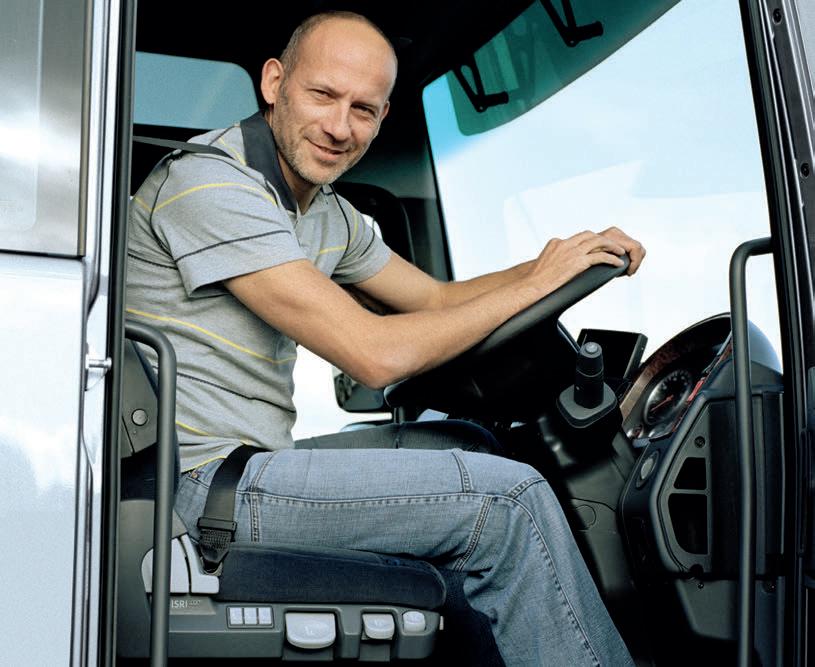
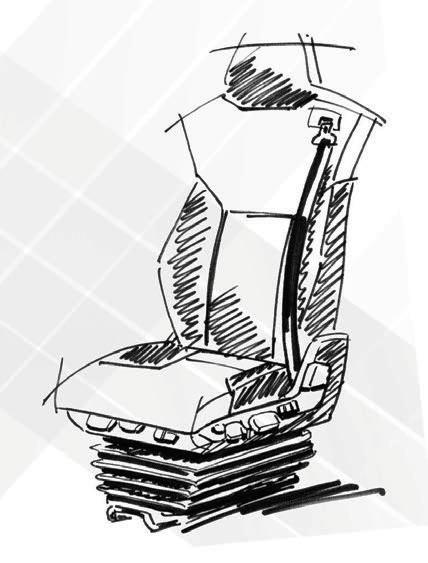










AS part of its 2024-25 state budget, the WA Government has announced a $7.2 million boost to its Heavy Vehicle Driving Operations training program, which will provide an additional 500 program places a year until the end of 2027.
e funding is part of a $195 million spend on training, which aims to build the state’s skilled workforce and help more Western Australians get into jobs.
is latest funding for the Heavy Vehicle Driving Operations program is targeted in WA’s South West. It follows a $3.5 million expansion of the program into the Kimberley and Pilbara, which was announced in last year’s state budget.
During her budget speech to Parliament, WA treasurer and transport minister Rita Sa oti explained that the program had already seen 650 people trained and employed as truckies, with almost 40 per cent of them being women.
She said it was, “An incredible achievement considering women make up around ve per cent of the industry na-

tionally. And this Budget, we are expanding the Heavy Vehicle Driver Training Program to the regions, as part of our overall investment of $1.1 billion for training in regional WA.”
e WA Government has committed a total of $195 million on education and training in its latest budget, with a focus on making training more a ordable and helping more local workers into the “jobs of the future”.
Other elements of the funding package include an $8 million top-up for the Fee Free
TAFE program; $5.6 million for the Skilled Migrant Job Connect Program over three years; and $85 million for initiatives to grow WA’s construction industry workforce.
Since being rolled out at the start of 2023, the Fee Free TAFE program has seen over 62,000 enrolments, with the initiative being targeted towards local industries in need of workers.
e record investment in TAFE infrastructure upgrades has also been increased to $250 million under the Re-
building Our TAFEs program.
“Investing in our training system is fundamental to giving everyone the opportunity to set themselves up for their future,” added Sa oti.
“Having access to free training and job pathways is lifechanging, and we’re proud to continue investing in our highly successful Fee Free TAFE initiative, which has allowed more Western Australians than ever before to train and take advantage of the vast job opportunities available across our economy.”
USING the latest in road safety cameras and technology, the WA state government is expecting to bring in an additional $40 million in revenue from fines over the next four years.
That’s according to details released as part of the WA State Budget last week.
The WA Government is bringing in a raft of road safety technologies. Among this is an extra $6.1 million being spent on new Smart Freeway camera sites on the Mitchell Freeway.
According to budget papers, “Advancements in road safety
technology have created opportunities to address unsafe driving behaviours, including driver distraction and a failure to correctly wear seatbelts.
“Trials on Western Australia’s roads and experience from other Australian jurisdictions demonstrate that investment in safety camera technology will influence positive driver behaviour.
“The latest road safety camera technology, paired with powerful data analytics, will enable targeted and effective enforcement focused on improved road safety outcomes.”










HEAVY-DUTY truck sales’ records continue to be set in 2024 with the 1550 sales recorded for the month of April smashing the previous April record of 1295 sales in 2023.
Volvo leads the charge and is building a strong lead in the heavies category of the latest Truck Industry Council (TIC) T-Mark database report o the back of its 353 deliveries in April.
ose sales put Volvo 155 sales ahead of its closest competitor, Kenworth, for the year so far – 1141 to 986, in a segment that has delivered an impressive total of 5338 trucks to market this year.
Across all of the truck sales categories, including
heavy-duty, medium-duty, light-duty and commercial vans, 4043 sales were recorded for April, an 11.9 per cent increase on the 3,613 sales recorded for April 2023.
For the year to date, 14,387 vehicles have been delivered across all of the sales categories, up from 14,071 sales for the same period in 2023, reecting overall growth of 2.25 per cent.
In the medium-duty segment Isuzu continued to dominate in the April results, with its 347 sales bringing it to 1272 sales for the year and accounting for 53 per cent of the sales in the segment so far in 2024.
e nearest competitor, Hino, sold 189 medium
trucks in April, hitting 683 sales for the year and 28.5 per cent of the category.
A total of 2400 medium-duty trucks were sold in Australia up to April 30, 8.75 per cent up from the 2207 sales in the category reported for January 1 to April 30, 2023.
On the light-duty front it was another win for Isuzu, and a drop in sales overall for the category.
Of the 1148 little trucks sold for April, Isuzu sold 523, followed by Hino with 199 sales, Fuso on 162 sales and Iveco with 97.
For the year-to-date in the little truck market, Isuzu’s 1943 sales saw it account for 45.4 per cent of the light truck
deliveries made so far this year. e overall category yearto-date sales result of 4277, fell well short of the 5199 sales achieved in the rst four months of 2023 – a drop of 17.73 per cent.
Category summaries: Heavy-dutry
A total of 5338 heavy-duty trucks have been sold in Australia so far this year, up 8.71 per cent on the 4910 sales records for the same four months in 2023.
For April, the top 10 brands in terms of sales results are: Volvo (353), Kenworth (285), Isuzu (220), Scania (145), Mercedes-Benz (88), Mack (84), UD Trucks (78),

Fuso (71), Hino (67), and DAF (57).
Medium-duty
A total of 659 medium-duty trucks were sold in April 2024, an improvement of 50 trucks from April 2023 when 609 trucks were sold. In the past month the top 10 brands in terms of sales in this category were: Isuzu (347), Hino (189), Fuso (73), Iveco (12), UD Trucks (11), Hyundai (9), Volvo (9), Man (4), Mer-
cedes-Benz (2) and DAF (2).
Light-duty
April 2024 saw 1148 light-duty trucks delivered to the market, a decrease of 129 trucks when compared to the results for April 2023. e top 10 brands, by sales volume for April 2024 in this category are: Isuzu (523), Hino (199), Fuso (162), Iveco (97), Fiat (75), Mercedes-Benz (47), Hyundai (23), Foton Mobility (8), Ford (7) and Renault (5).
THE National Road Transport Association (NatRoad) has launched a new set of resources to help operators play their part to help achieve the nation’s net zero emission targets.
Unveiled earlier this month at the TruckShowX 2024 event in Victoria, the Get Fleet Fit initiative for small- to medi-
um-sized operators outlines five practical steps to enhance fuel efficiency, reduce operational costs, and decrease carbon emissions.
“The trucking industry is a significant and irreplaceable arm of the nation’s freight hauling sector. Australia cannot run without trucking, and we will
fail to achieve emissions reduction from road freight unless the transition is cost effective,” said NatRoad CEO Warren Clark.
“Transport customers are increasingly looking to reduce their supply chain emissions, which will increase the need for trucking operators to be able
to understand their own emissions and the different strategies for emissions reduction.”
“It is these members and operators who are best placed to make the decisions and changes required to ensure they remain viable, while making a real contribution to emissions reduction. That’s the purpose
of these resources, to help guide and advise them.”
The Get Fleet Fit initiative offers truck operators the tools they need to succeed in a changing economic landscape, said NatRoad.
This is the first phase of the project, with further detailed guides being provided for each
step over the coming months. “Our aim is to not only assist our members to transition to lower emissions, but to also encourage a collective approach among all stakeholders in the industry,” Clark said.
To download a copy of the Get Fleet Fit guide, please visit natroad.com.au.
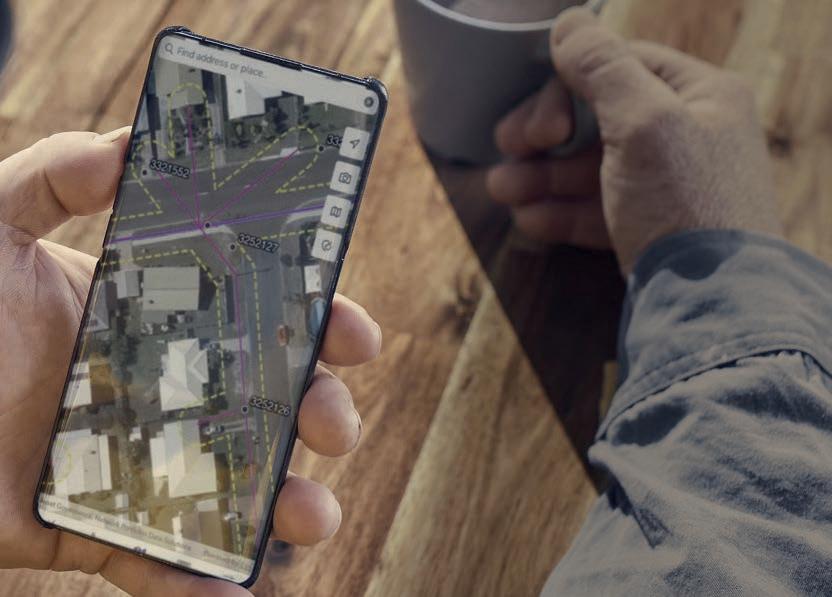
 EDITOR JAMES GRAHAM
EDITOR JAMES GRAHAM
HUGE congratulations to CEO Gary Mahon and all the team at the Queensland Trucking Association for the biggest federal budget win of all for industry, the confirmation that the feds will stump up with more than $700m to help build the $1bn Inland Freight Route.
The QTA’s tireless lobbying behind the scenes for the last few years has helped secure a massive productivity win for trucking that will play out for many years to come.
It’s just a shame there wasn’t more to celebrate on other industry fronts.
Yes, there is increased funding for local roads and black spots, but talk to any operator out there and they’ll tell you that money won’t go far enough.
The extra $467 million for the Bruce Highway is welcome, but it doesn’t reach far enough into the regions, or offer any more for rest areas. And where are the incentives for operators to play their part in helping Australia reach net zero emissions?

I AM writing with my full support of Nicholas Hales’ letter to you that was published in your last issue.
I have forwarded an email to you that I sent to an industry representative in August last year [see edited extract on right] voicing my concerns with safety issues running eastwest interstate.
I am 54 and have more than 28 years of transport experience. I have run ‘ e Paddock’ for a long time, mainly solo driving, and back in the early 1990s when everyone, and regulations, were still a bit loose, when it was mainly single trailer work east-west and evolved into the B-double and road train era. We were probably the last of ‘old school’ era, the last of that generation that was
taught the ‘old school’ ways. e trucks were quick, some real quick. e unwritten industry rule of thumb was Perth - Melbourne solo - 36 hours; Perth - Sydney - 44/46 hours solo driving.
If you couldn’t consistently do these times, you probably wouldn’t have had a job on wages driving interstate unless you were an owner/driver.
e camaraderie on the road was second-to-none. Many of my closest friends today are from being on the road in that era. ere seem to be less accidents; we never had to worry about who was coming at us, or if they were over the centre line.
It was common courtesy to move to the left fog line for an oncoming truck and it was al-
ways returned, even if we were sitting on a ‘dollar-thirty’.
As unregulated as those times were, and a lot of things not by the book, there was an etiquette that you followed on the road that bred mutual respect.
Drivers got taught how to restrain loads properly by the old boys that had done it for years. We are all particular about knots, neatness, tucking buckles up, and who had the best tarp job. It was almost like a competition, there’s no way any decent operator would be seen down the road with loose ballooning curtains, or tarps looking like parachutes!
You just don’t wake up one day with this knowledge. It’s gained only by hands-on experience and taught by those that have the experience.
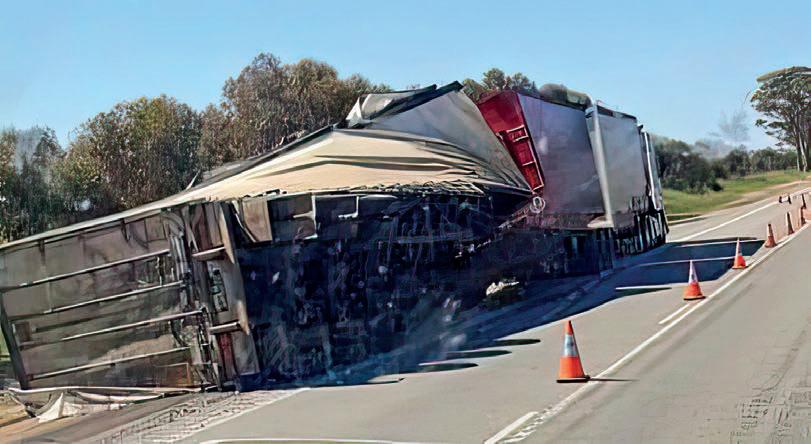
Email from August, 2023: I want to make one thing extremely clear and it’s the opinion of ALL decent, respectful, responsible heavy vehicle drivers and operators here in the west: this IS NOT a race issue – it’s a SAFETY ONLY issue.
Every time the issue around a certain cohort of overseas drivers is raised and the lack of experience they have, especially driving multi-combinations, someone pulls the race card.
But it’s going to end in tears unless someone in prominence in transport has the guts to speak out and to somehow find a resolution.
This is purely about if you’re experienced enough to safely and competently operate multicombination heavy vehicles on our city roads and highways Australia-wide with other day-to-day road users so we can ALL return home safely to our families and loved ones.
We are having two or more rollovers a week here in the west and there have been weeks of more than two.
These rollovers, side swipes, headons and running off the road just don’t happen on rural WA roads, these are a common occurrence on Tonkin and Roe Highways in Perth city.
Grain haulage within WA is the biggest issue currently with grain trucks accounting for the majority of rollovers.
One of our major grain haulage contractors have lost 11 combinations this year alone.
There is also an attitude issue that’s nearly at boiling point out on the
highways where experienced drivers are getting abused over the UHF & returning it.
In just about every transport yard I’ve been in over here that has overseas MC drivers doing pick-ups or deliveries they can’t reverse a B-double or back a trailer and dolly.
If you are an MC driver this is a skill that is part of your job and part of the reason we hold an MC license to start with.
The Northam and Wubin road-train assembly areas are an absolute comedy show on Tuesday and Friday night and it doesn’t take long before tempers are frayed, and the facilities end up gridlocked.
Along with the lack of experience there is a massive lack of commonsense or common courtesy with trailers getting backed into, trailers dropped on the ground, A-frames constantly being bent, and tearing around like they are in a race car, high beams and spotlights up.
It is well known the industry is short of drivers and the big companies are desperate to put bums in seats, but surely not at the expense of others lives and safety?
How can this issue be publicly raised in a diplomatic way and resolved in a timely manner?
I consider this to be one of THE biggest issues currently facing the transport industry today.
Cameron Deans Corrigin, WA









THE co-owner of a driving school based in Canberra has claimed some truck driving schools in the ACT are just out for a “money grab” and don’t care about the quality of training or assessment they provide.
Kate Beck, who operates Beck’s Transport Training with her husband Anthony, said the truck driver training industry in the ACT is far too unregulated and inconsistent with other states.
“ ere are so many driver trainers that are just ticking and icking,” she said.
“ ey don’t care about safety or the quality of drivers they are putting out on our roads.
“ ere is also no minimum number of hours that you need to complete for a licence upgrade in the ACT.
“ ere is no consistency between the states and it’s very frustrating.”
Beck said her driving school has never been audited in the ACT in the four years since they started their business.
“We operate in NSW and the ACT, and we’ve only ever been audited in NSW,” she said.
“We have actually asked to be audited in the ACT and it still hasn’t happened!
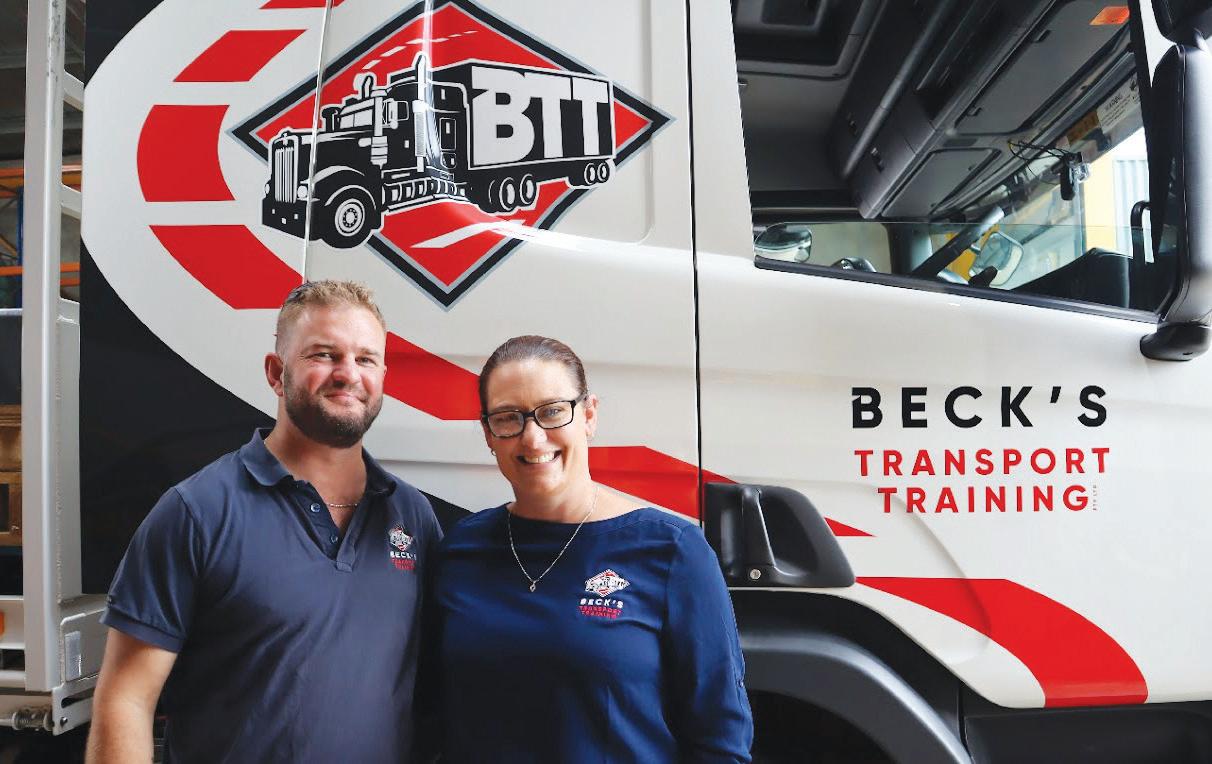
Beck said she’s heard many “horror stories” of what goes on at other truck driving schools.
“We have heard stories of local providers who will sign o on competencies, but when you question the student, they haven’t been taught those things.
“And these are important competencies, like load restraints and coupling and uncoupling trailers.”
Beck and her husband are
frustrated because they are trying to do the right thing but claim others just “don’t care”.
“We’re battling against these organisations that will o er a shorter cut or a cheaper rate,” she said. “We can’t drop our rates because we’ve got to put a roof over our heads.
“We’re not willing to damage our reputation just because people want a quick, easy x.”
She shared a story of one stu-
dent who came in expecting to be given his licence even though his skills weren’t up to scratch. He had an international licence and needed to change over to an Australian licence.
“He failed the assessment in a couple of areas, so we couldn’t pass him. He then wrote a letter of complaint to us and left us a bad review online, saying, ‘Why couldn’t you just turn a blind eye?’
“He said he had already told his employer he passed, because he was too embarrassed to say that he failed.”
Beck said she and her husband couldn’t live with themselves if they knew they were allowing unsafe truck drivers to head out on the roads.
“My husband is an ex-driver, so we have experience of both sides of this,” she said.
“I was the wife waiting for my husband to come home, petried something would happen.
“Whenever there is an accident, the rst thing that goes through our heads is ‘Was that one of our students?’
“We have a responsibility and a duty of care, and unfortunately you can’t instill that in every driver trainer.”
Beck would like to see the auditing process for RTOs brought under the jurisdiction of the NHVR. “ e states don’t want to relinquish control, but the NHVR is meant to be the national regulator – it makes no sense that they have no power in that area,” she said.
She also wants to see nationwide consistency when it comes to licensing rules.
“At the moment, people are changing their address on paper and coming to Canberra to get a truck license easier, and
that has got to stop. “ ere needs to be one Code of Practice for all trainers and assessors nationally, and minimum training hours for every state.
“Finally, there needs to be more auditing of trainers and assessors to make sure they are actually doing what they say they are doing.”
ere are currently 40 heavy vehicle assessors accredited in the ACT. According to an ACT Government spokesperson, “You must be accredited to teach and assess heavy vehicle learner drivers in the ACT.” Access Canberra is responsible for accrediting driving instructors and the regulation of heavy vehicle assessors. “ is includes assessing complaints and safety concerns.”
e spokesperson added that Access Canberra has a team of ve auditors responsible for auditing heavy assessors, motorcycle assessors, and accredited driving instructors. “All complaints received are assessed in consideration of the Access Canberra Regulation, Complaint and Investigation.
“Concerns regarding road safety in the ACT can be lodged using the Access Canberra website feedback and complaints form.”
“YOU hear all these issues about the drivers on our roads but at the end of the day they’re giving licences away willy-nilly,” said truck driver, turned driver-trainer and assessor John Skinner.
Following in the footsteps of his father – who was a truck driver his whole working life –50-year-old Skinner spent over 30 years doing everything from local to interstate road trains, before health issues forced him to give it up.
“I became a show kid at about 16, so I left home and got into trucks. I started out driving trucks on a car licence, then got my truck licence at 21 and MC at 28. Due to my health issues, I had to give up driving interstate so I got my licences and certificates and became a driver trainer and assessor four years ago,” explained Skinner.
He says that his move into driver training was a real eye-opener – and not in a good way.
“I just thought, this isn’t right. Don’t get me wrong, there are a lot of good trainers out there. Then there’s those who got their truck licence recently or years ago then become trainers or assessors, with no industry experience, but it says you must have five years industry
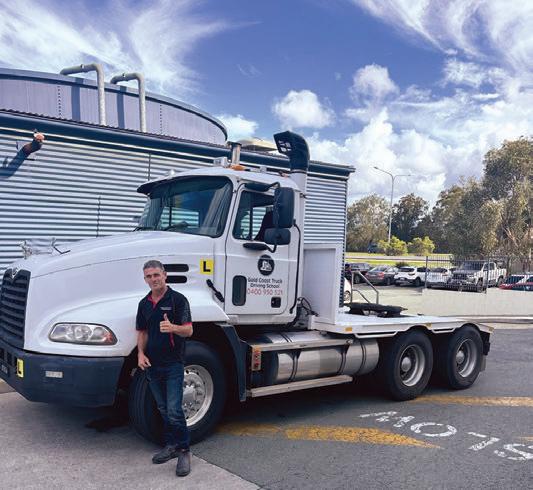
experience to be a trainer or an assessor,” said Skinner.
“You’ve got all these people blaming the drivers but at the end of the day, they’re coming through our system.”
Skinner spent around three years working for another truck driving school, before going out on his own and opening Gold Coast Truck Driving School in January 2023.
Since moving into training and assessing, he says, “I’ve heard of other assessors signing everyone off for their licence
and never failing anyone.”
One of the biggest issues with driver training, adds Skinner, is that many trainers are “only teaching truck drivers how to drive in a straight line”.
“You’ve got these truck drivers who get their licence and then we say look at these idiots, they can’t even back the trailers. But they were never taught!
“When I was doing MC training and passing students, I had most of them learning how to back around corners. Some struggled with that but

met the standard of reversing in a straight line, so at the end of the day, I’d have to pass them because they passed all the protocols.
“I’ve been pulled up in the past and asked why I wasn’t just doing everything as per the standards – but that I was doing a good job because I was teaching them how to reverse. So they said just keep doing what you’re doing.”
Since opening his own training school, Skinner claims he’s had multiple phone calls from people asking: “Is this the
school where everyone passes?”
His response: “I say no mate, I don’t do that! But I know there are training providers where that’s happening.”
Skinner believes in some cases it’s more about the paperwork than actual skills. “I know of one particular trainer who’s just a good businessman. He has no industry experience, he’s now training trainers who have no industry experience and the person doing the testing has no industry experience.
“You need to have experience to be a trainer or an assessor,
but I know a good percentage don’t have that experience. It’s not enforced, it’s not checked. It’s an absolute joke that this is even happening.
“Even some of the Queensland transport government workers have no industry experience at all and they’re doing the testing and deciding who passes.”
According to Skinner, “There are too many people sitting at desks – and they’re good at the paperwork – but they don’t really know or understand the industry.”
He says safety standards just aren’t where they should be.
“When I was young, I could go out with my old man, and that was some of the best training you could ever get. Now we’ve got this shortage of drivers because we’re not getting the next generation coming through like we used to. But we’ve still got all this freight that has to be moved. And that to me, is the biggest glaring issue.
“You could have your car licence, then get your HR licence with me tomorrow and then 12 months later go for your MC. So you could effectively go from car licence to MC in one year and one day, and then go and transport a loaded B-double from Melbourne to Sydney.”























STRAPS

•Keep your load safe.



•Available in Coaming Hook, Rave Hook and Tie Rail Hook configurations.






•Silver Strap only. $14













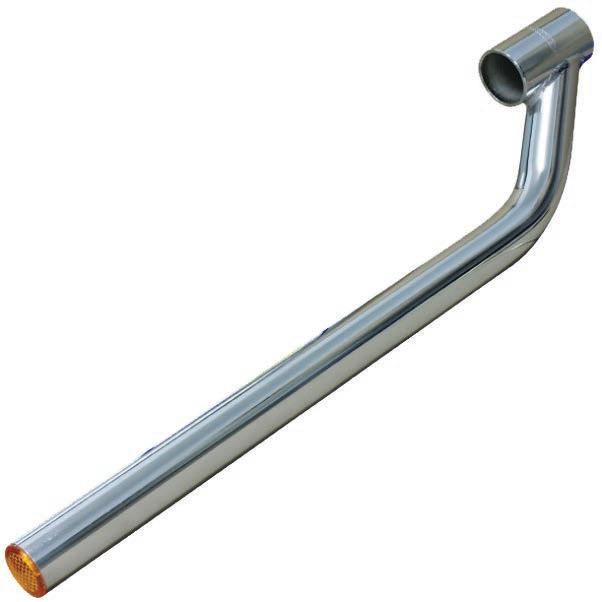

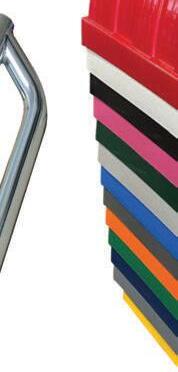


MUDGUARD PACK SPECIAL.
•1x Mud Guard in your choice of colour.
•4x Adjustable Guard Bracket.
•2x Mudguard Poles w/reflectors

KRUEGER 11M WINCH STRAP.
•50mm x 11m Strap.
•Rated to 2.5T


•Comes with quality Hook & Keeper.
• Comes








The first of 150 Kenworth C509s featuring autonomous technology have arrived in the Pilbara, ready to be put to work in coming months, hauling up to 330 tonnes of iron ore.
They were transported via drop deck trailers, making the 1280km journey from Perth to Onslow, over two and a half days.
The trucks will be used to support Mineral Resources’ (MinRes) Onslow Iron project.
They will travel on a 150km dedicated and fenced haul road running from Ken’s Bore mine site to the MinRes Transhipping Terminal at the Port of Ashburton.
Over $24k raised
When long-time truckie Warren ‘Woz’ Acott was diagnosed with MND, he decided he wanted to try and make a difference, launching his Mow Down MND campaign.
He set off on a gruelling 11day, 772-kilometre trip from Victoria to Canberra on his ride-on mower in a bid to try and make MND a notifiable disease.
He was able to raise $17,098 for MND Australia and $7577 for MND Victoria.
A petition was also launched to make MND a notifiable disease, which collected a total of 13,845 signatures.
Fearless truckie
A fearless truckie was singled out by police for helping them arrest five alleged car thieves in Cairns earlier this month.
The truckie reportedly assisted to stop a stolen Range Rover and also aided officers to detain the offenders who scattered after crashing into his trailer on Lyons St. Detective Inspector Kevin Goan said they were part of a larger group who went on a house break-in and car stealing spree through Mount Sheridan, Edmonton and Brinsmead.
Officers from the Cairns Property Crime Unit with assistance from the Tactical Crime Squad, Dog Squad and Rescue 510 helicopter charged a total of nine teenagers between the ages of 14 and 17 with 104 charges in relation to allegedly stolen vehicles in Cairns in the week leading up to this arrest.
Blindsided
Truckie, politician and transport industry advocate
Clynton Hawks says he was completely blindsided by his party’s decision to drop him, just six months out from the Queensland election.
The 25-year-old was told he would be disendorsed by the Katter Australia Party (KAP).
“It was rough,” he said. “I definitely wouldn’t have guessed it after five years of advocacy not only in the transport space, where we had a big win with AdBlue, but also with the cost of living.
“And it wasn’t even in a faceto-face meeting, which was pretty disrespectful and rude.
“This was my job, as well as driving a truck at the same time and juggling a young family – and it’s not like I wasn’t doing anything, I was out there campaigning every day.”
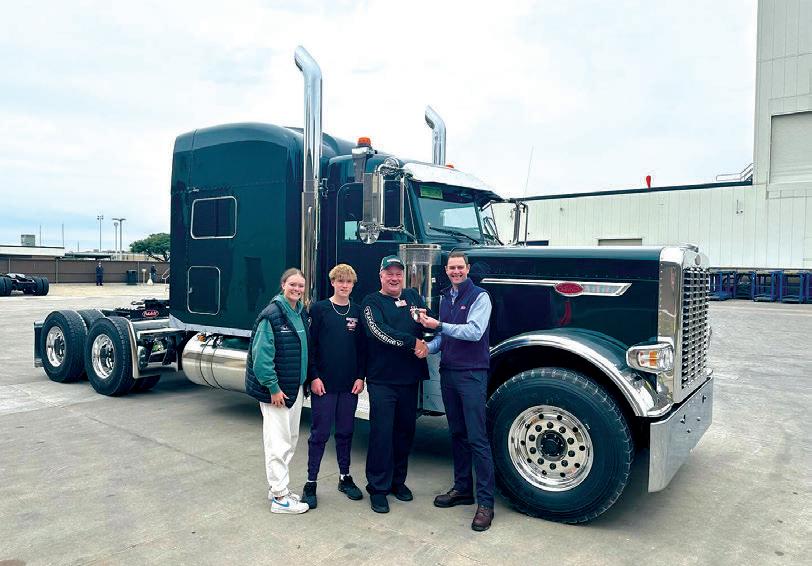 BY DANIELLE GULLACI
BY DANIELLE GULLACI
ORDERED three years ago, this special limited edition Peterbilt 389X has nally arrived on Australian shores just in time for its owner’s 60th birthday celebrations.
When Craig Membrey of Membrey’s Transport and Crane Hire ordered the ‘Green Dream’ – a limited edition Peterbilt 389X – he didn’t expect it would take as long as it did to arrive down under.
But as it hit home soil –arriving at Adelaide port on May 3 – it was a very welcome sight.
Peterbilt’s popular model 389 was rst introduced in 2006 and will cease production by the end of the year to make way for the new model 589.
e brand released 1389 units of the limited edition 389X model and Craig was lucky enough to snap one up.
“It’s a birthday present to myself,” said Craig, who cel-
ebrates his 60th on June 7. “ ere are six 389s coming into Australia but mine is the only limited edition one.”
Based in Melbourne, Membrey’s Transport and Crane Hire was started by Craig’s father Jack Membrey in 1962 – with Craig taking the reins in 1989, putting in the hard yards to grow the business into what it is today, with over 250 pieces of gear.
He well and truly lives by his motto of ‘make it happen’. “How lucky am I to have the only Peterbilt 389X in the country!” he said.
Craig was actually handed the keys to his new beast in May 2023. He and his kids Leah (19) and Jack (16) headed over to the Peterbilt factory in Denton, Texas, for the occasion. ey were lucky enough to have timed the trip to coincide with the new truck coming o the production line.
At the time, Craig expected it would take no longer than three months to get his
newest toy home – but due to shipping delays, it was a whole 12 months before he laid sight on it again. ough it isn’t Craig’s only Peterbilt – there are two oth-
IT’S A BIRTHDAY PRESENT TO MYSELF... THERE ARE SIX 389S COMING INTO AUSTRALIA BUT MINE IS THE ONLY LIMITED EDITION ONE.” CRAIG MEMBREY
ers in his eet – this is the rst one he’s purchased brand new.
e Green Machine is truck number 1029, in honour of his son Jack’s birthday on October 29. ough he’s still at school, he looks set to eventually follow in his father’s and grandfather’s footsteps.
“I was lucky to get the serial number 1029 for Jack’s birthday, obviously in America they ip the month and date around. I have two limited edition Kenworths in the eet – a Legend 900 and Legend SAR which are both number 29. I couldn’t get number 29 with the Peterbilt but was lucky enough to
get build number 1029,” explained Craig.
Before Craig gets to take the truck for a spin on Australian roads, it’ll be converted from left-hand to right-hand drive, along with being highly customised – or “Membreyised” as Craig calls it – with all the “bling and shine”.
Craig has enlisted Truckworks in Adelaide to do the conversion and once complete, the truck will make its way home to Melbourne.
“I’ve been to the Peterbilt factory four times now and kept dreaming. Now I’ve put it all together. But there’s things you’ve got to do so it’ll probably be a few months until I get it on the road.
“For a long, long time, a new Peterbilt has been on my bucket list. Peterbilts are the Lamborghinis of trucks.”
While much of Craig’s eet is put through its paces in some of the most demanding jobs, that won’t be the case for the Green Machine. It will be more of a show truck, though Craig says he’ll still be doing the odd job with it too.

FOR Queensland based transport business, R & K Bulk Haulage, several trucks serve as moving billboards for causes close to the owners’ hearts.
Based in the small town of Jondaryan, Queensland, R & K Bulk Haulage is a family owned and operated business, started by Russell and Karen Strasburg in 2005. Its 44-strong truck fleet stands out in the crowd, with many of the truck and trailer combinations sporting vibrant colours and/or impressive airbrushing.
But it’s the latest addition to the fleet, a purple Kenworth T909 and matching A-double set of trailers that’s been turning heads.
Dedicated to epilepsy awareness, the new truck’s theme is in honour of Russell

and Karen’s daughter Skye Strasburg – with purple being the international colour for epilepsy.
March 26 each year is Purple Day, a global initiative dedicated to raising epilepsy awareness, dispelling myths and furthering support for those living with epilepsy.
Now 29 years of age, Skye was diagnosed with epilepsy

when she was seven years old. R & K Bulk Haulage is very passionate about making some of their trucks moving billboards to promote awareness for various causes. The purple epilepsy truck joins a pink breast cancer awareness truck, and a light blue prostate cancer awareness truck, a disease which Russell has himself been battling.
Skye says she absolutely loves the new truck. “I think it is beautiful and am so thankful that my sister Brandee put forward the idea to have a truck done up for epilepsy. She continued, “I am extremely thankful to my mum and dad for doing it. This helps bring awareness to the four states the truck will be travelling in. They asked me what I
wanted written on the side of the bonnet. ‘Tiny is loving it all’ comes from my nickname and the company motto of ‘loving it all’. The fact that you must enjoy every day because you never know if it will be your last, as epilepsy unfortunately takes people’s lives.”
Russell added, “This truck is special to me, as not only has epilepsy affected us as a family but it has also affected my daughter’s life daily, along with her two daughters and partner. To spread awareness across the country is something special and can have a huge positive impact on people suffering with epilepsy.”
The purple epilepsy truck, which is driven by company driver Brad Hoadley, travels across various routes through Queensland, South Australia, Victoria and New South Wales.













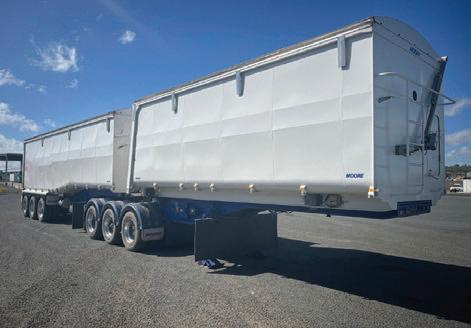
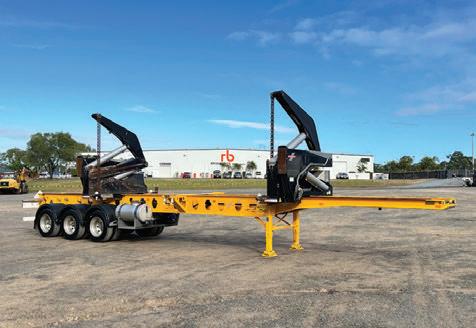













It may now be a publicly listed company, but the ‘family’ ethos forged in those early years of operation runs deep for a loyal band of drivers.BY GRAHAM HARSANT
THE history of Lindsay Brothers, and its successor, Lindsay Australia Limited, has been well documented over the years. Established by Tom and Peter Lindsay at Co s Harbour, NSW in 1953 with a couple of second-hand tray trucks, the brothers initially transported local fruit and veggies to the railway for shipping to the Sydney markets. e business grew to encompass fuel deliveries and many other areas of the transportation business.
Shortly after Peter Lindsay’s sudden passing in 1998, the company was listed on the Australian Stock Exchange and continued growing into the hundreds of red and white liveried Kenworths that we have all seen traversing our highways.
To the drivers of old however, the friendships, the camaraderie, the respect, the loyalty and the ‘family’ ethos came from those years between 1953 and 2002 when Lindsay’s was a family-run business.
And so, when Tracey Lindsay, daughter of Peter, decided to organise a reunion at Sawtell, NSW – just down the road from Tom and Peter Lindsay’s rst depot at Co s Harbour - some 160 former employees of Lindsay Brothers gathered from around the country to share memories of
those long-ago years - to reminisce and catch up with old mates and their families.
ere have been Lindsay Brothers reunions in the past on a smaller scale including one last year which Tracey attended.
“ at was also in Sawtell and I just happened to be home, so was able to attend what was a great night and realised how much fun it was,” said Tracey.
“A couple of my boys – the older ones that I grew up with when I was 5 to 10 years old, weren’t travelling too well so I realised that in another couple of years they might not all be around.
“ at was the incentive to try and gather as many of the ‘family’ together as we possibly could.
“When I decided to do it, I rang Gimmy (Warren Gim) and Frankie orn to see if they would help, at the same time warning them that I’d constantly be on the phone or in their faces for the next eight months. Of course, they didn’t hesitate.”
In sending out invitations, Tracey and the crew asked if anyone happened to have photographs of old workmates who had passed on. is resulted in a poignant four minute ‘Vale’ video featuring dozens of the Lindsay Brothers family no longer with us. e silence in the room was ‘deafening’ as the video played, fol-

lowed by sustained and heartfelt applause.
To the delighted surprise of the guests – some money was put behind the bar by Graham Sebbens of Brown & Hurley to get everyone in the mood.
From there, and throughout the evening, the function room at the Sawtell RSL was a cacophony of sound as old friends caught up and reminisced – pausing only to watch another two video presentations played through the evening.
A ra e was drawn with painted drums on o er, as well as Kenworth du el bags emblazoned with the Lindsay Brothers Reunion 2024 logo.
A drawing by Brad Truck Art of an early Lindsay Bros Ford, purchased by old time subbie,Terry ‘Red Bull’ urwood was presented to Tracey in recognition of her e orts.
ere was also an amazing quilt made by Tracey and emblazoned with old Lindsay Bros photos which was ttingly won by the oldest attendee, and only one from the 1950’s, Col Jones.
Walking around the room throughout the evening, the most commonly used words were ‘family’ and ‘respect’.
“Peter and Tom could be hard-arses,” said more than one attendee. “But after you got kicked up the bum it was always a case of, that’s done and dusted, let’s move on.”
“Great, fantastic, top, thumbs up, great e ort, wonderful evening, great team, special and sensational”, were just some of the plaudits offered at the end.
“I’ve been going for three days and there is still one to go,” said Gimmy, referring to the Last Man Standing to take place at the Sawtell Hotel the following day. ere’s been a lot of good stories dredged up from the past and it’s been fantastic catching up with old mates, some of whom I thought were dead”
Terry urwood met Frankie orn in Bundaberg on a Friday over a drink in the 80s and they have been mates ever since. “ ere was a lot of drinking going on back then,” said Terry.
Terry usually ran across the Hay Plains, but on this occasion was in New England and it was snowing buckets.
“I’d never seen snow before and I rang Frankie, who I knew was in the area and said, ‘what’s the deal with this snow, mate. I can’t see a bloody thing’,” he recalled.
“Frankie’s only advice was to put my seatbelt on and hang on for dear life! So, I did, and I’m still here, which I thought I mightn’t be at the time. Loved those Hay Plains ever since!”
“I think our boys are pretty unique,” said Tracey, who was backed up by Colleen Foster who said, “Over the years there was never anybody like Lindsay Brothers.”
Tracey’s brother Rod encapsulated the family’s feelings when he said, “Dad and Tom started the company. You guys built the company. ank you very much.”
Loyalty to an employer is something earned by the employer, not the sta . It cannot be bought by money, it is certainly not made by threats or cajoling.
It is gained by respect, honesty and being treated as a person, not a number. It is gained by recognising that your success has only been achieved by those who work with and for you.
It was obvious throughout the evening that Peter and Tom Lindsay worked tirelessly to earn that loyalty from their ‘family’, as evidenced by the turnout this night.
Congratulations to Tracy, Gimmy, Frankie and everybody else involved with the event. It was humbling to be there and to witness the love in the room.




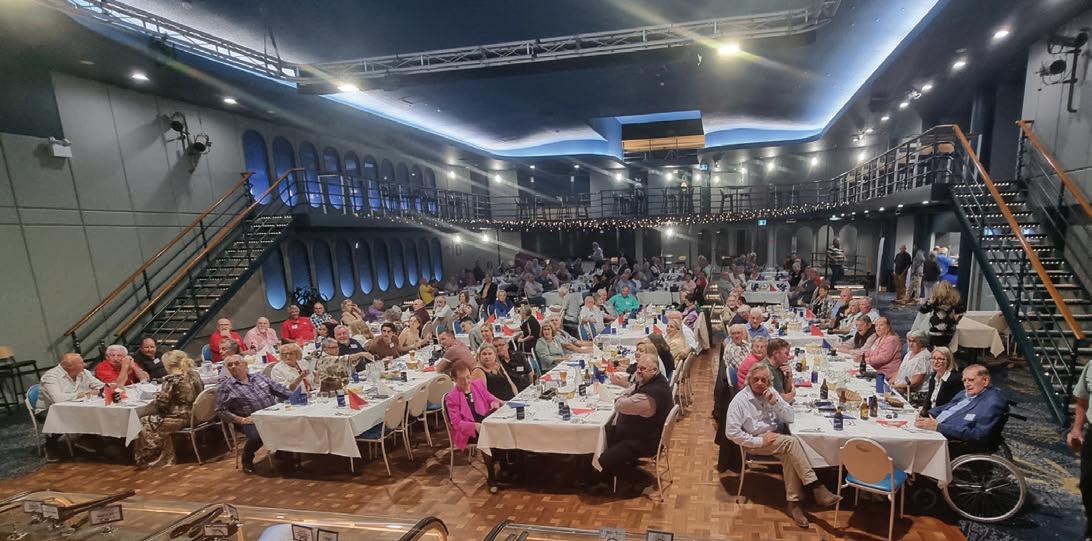


David and Kevin Murada have sworn by Kenworth trucks since 1979 and are delighted to be honoured as Kenworth Legends.
 BY KAYLA WALSH
BY KAYLA WALSH
EVERY so often, you come across some real characters in trucking – and David and Kevin Murada are prime examples.
e 66-year-old twin brothers, who have run Wollongong-based operation Metal Transport Industries for the past 45 years, were named this year’s Kenworth Legends at the ATA’s national conference in Canberra.
ey started out carting scrap metal for BHP, which is now BlueScope, but as time went on, they moved into heavy haulage – carting up to 90-tonne loads.
Although David and Kevin are well-known and respected in the transport industry, they don’t take themselves too seriously.
“ e heavy haulage side gives you challenges, and I still love the challenge,” Kevin said.
“When you’re out west and you can’t drive at night with an oversize load you get to go to a lot of hotels.”
His brother added, laughing: “Kev could write a book on the pubs.”
e Muradas said you have to have your wits about you when the loads get heavy and wide and high.
“ ere’s a bit of pressure on you when you’re up and down the highway, especially with narrow bridges,” Kevin explained.
“ ere are so many damned if you do, damned if you don’t decisions that you have to make.”
David chimed in: “We dodge a lot of power lines. We wouldn’t have pulled any down, of course...”
David and Kevin originally set up their business with their brother Peter, who sadly died in the early 1990s.
“We were triplets, and Pete was with us in the business for about ve years,” David said.
“ en he moved to Sydney, and he was into a few things, trying to make some money.
“He passed away in ‘92, which was pretty sad.
“We were always hoping he would come back to work with us, but that wasn’t to be.”
e heavy haulage side of Metal Transport Industries came about organically, as word got out that they knew how to move big machines.
“At one stage with the scrap, we were hiring our dad’s machines to do our jobs,” said David.
“He had excavators with shears on them to cut scrap, and a loader machine that you put a magnet on, to lift the scrap.
“Because we moved machinery, we had people ringing us up to come and move their machinery, so the heavy haulage side slowly grew.”
BlueScope was one of the company’s very rst customers, and they still work at their Port Kembla steelworks –though not directly for them.
“We still do one job inside BlueScope and we move 3500 to 4000 tonne a day, 365 days a year, 12-hour shift, carting slag, which is a by-product of making iron and steel,” David said.
“We don’t work for Blue-
Scope anymore, we work for Australian Steel Mill Services, who look after the slag material.
“ at’s a hard job. We cart 70-tonne, 80-tonne loads, going around and around in circles with o -road, minespec Kenworth trucks.”
David and Kevin have sworn by Kenworth trucks since 1979 and are delighted to be honoured as Kenworth Legends.
“We’re both very passionate about the Kenworth product,” David said.
“It has proved itself over and over again.
“It’s built here in Australia, and you get to pick what you want on the trucks – you can have one fuel tank, two fuel tanks – you can have six fuel tanks if you like.”
Although the brothers had 40 trucks in their eet at one stage, they are now back down to 21.
“ e more trucks you get, the more problems come with it all,” David said.
“We had 40 trucks but after we got out of a big contract, we sold 20 of them.
“Like most companies, our eet goes up and down, but
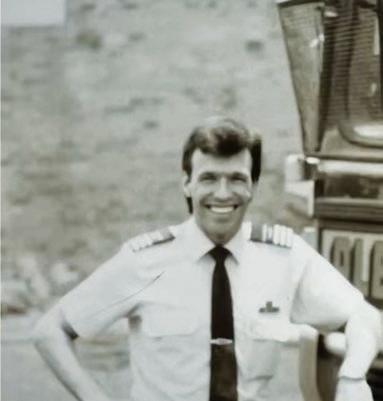


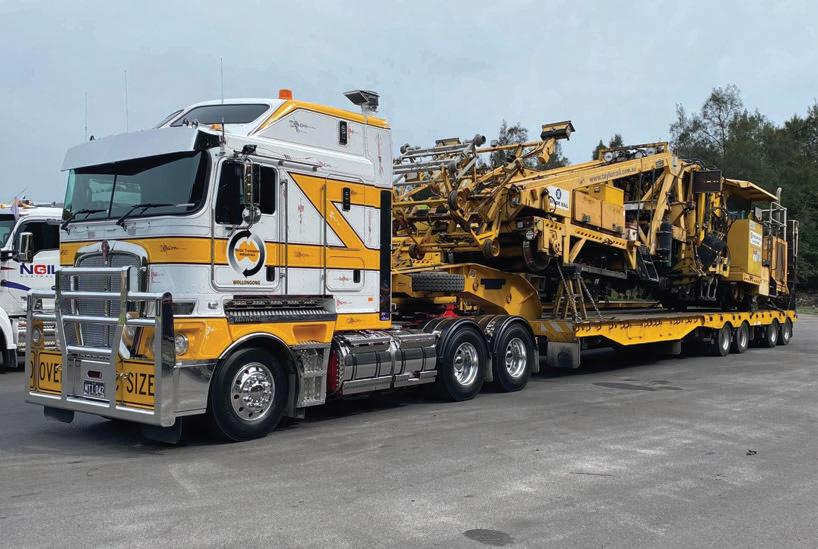
we’re pretty comfortable.”
e eet is set to increase slightly again as David and Kevin gear up to collect two new Kenworths – a C510 and a K200. Kevin was also getting his new 909 tted out as we were going to print with this story.
e K200 will hit the road, while the 510 will head to the BlueScope steelworks, joining the ve 509s they already have there.
“ e 510 has a Cummins engine, 600 horsepower, with 1400 tyres,” David said.
“In the 509s we would break springs and new bolts because we were pushing the six rod with what we were carting.
“In the 510 there’s a di erent suspension, you can put 50-tonne on the drive and it can handle the weight.”
Kevin still gets out and about in a truck most days, and said he is de nitely not an “o ce person”.
“I think I did a little bit in the o ce in the ‘90s and then we employed another bloke and I’ve mostly stayed out since then,” he said.
“Dave will answer the phone and I’ll quote jobs and we’ve got a good system going.
“I don’t mind jumping in and helping the mechanics or whatever. I just do what needs doing.”
David joked: “You can probably guess how well Kev’s little o ce stint went.”
e twins have seen a lot of changes in their four decades in transport, but they think most of them are for the better.
“In NSW, the RTA makes us put the trucks over the pit every 12 months,” David said.
“We struggled to get used to that idea at rst, but now we think it’s for the better.
“It evens the playing eld and makes sure everyone’s truck is roadworthy.”
ough they are as passionate about trucking now as they were when they started out, they have concerns about the current driver shortage and the future of the industry.
“It is a sad indictment that we can’t get the young guys to come through,” David said.
“If you drove around in the 80s, trucks were going pretty damn quick.
“Now we’re driving 100km/h and we think that’s fast, but insurance companies
are still making it so expensive to employ someone under 25.
“I think they could let that rule go and make it easier to hire young people.”
ey may be coming up on retirement age, but the twins don’t think they’ll be hanging up the keys to their Kenworths any time soon.
“Our wives bring it up quite a bit,” David laughed.
“But no. In saying that, we do take our holidays.”
“If I had to pass on one message to anyone in the trucking game, it’s that you should always take your holidays!”
Despite seeing each other almost every day at work, David and Kevin’s holidays are almost always spent together too.
“We work together, and we play together,” Kevin said.
“We’ve got a good connection between us.”
After leaving his brother hanging for a moment, David agreed: “...Ah no, we do.
“We live in the same suburb, and we have the same mates. We’re always together.”
He added: “We’ve been around for a long time, we’ve survived, and our Kenworth trucks are here to stay.”





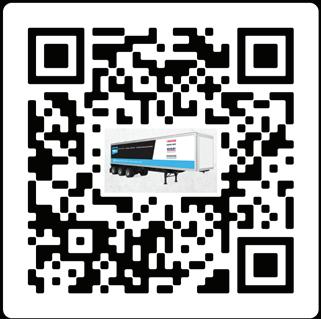
AFTER 63 years in business, this Cairns-based truck body builder and trailer repairer will shut up shop.
Founded in 1961 by Malcolm Beattie, 88, and operated alongside his sons Darryl and Gary Beattie for decades, B-T Industries became a much loved and respected family business in Far North Queensland.
Over the years, the business developed a solid reputation based on their high levels of workmanship and exceptional customer service.
“We’re pretty well known up here. We’ve been around for a long time now and are a bit of an icon up here,” said Darryl.
Both he and his brother Gary worked by their father’s side for over 40 years.
Gary did his apprenticeship at B-T Industries in the early 1970s, while Darryl did his apprenticeship with a major ship building company, before joining the family business in 1980.
When Gary retired a few years ago, Darryl, now 64 and his father, who is now 88, kept the business going – with Darryl in the workshop and Malcolm in the o ce.
e family had hoped to sell the business so it could carry on its work, but it was unfortunately to no avail.
“We did try to sell the business because we did have a very good business and a good reputation, but I think up here we just don’t have the volume so couldn’t nd a buyer,” explained Darryl.
“ ere were a few younger people interested but they couldn’t get the nance. So it’s a real shame that all this knowledge and everything we’ve built up over the past 60+ years is just going to go.”
When Malcolm rst started his business in 1961, he was actually involved in steelworks for homes, producing things like handrails and the like. at progressed into repairs for earthmoving equipment, before moving onto truck bodies.
“ ere was nobody really
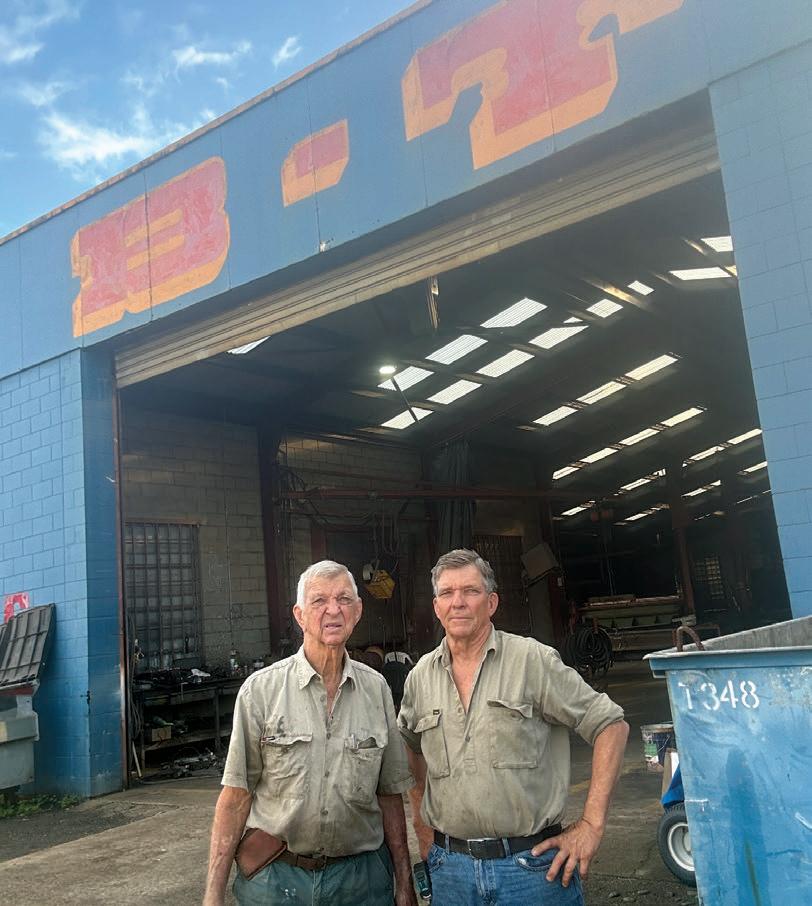
thing was a lot smaller than what they are now – they were all single axle. As the industry grew, we were able to grow with it. Even though we didn’t start out as engineers, we were able to grow and develop an understanding as designs changed and progressed.”
It was in the 1970s and 1980s, when the gold and tin mining boom hit Far North Queensland, that B-T Industries hit its peak. “At that point we were building about 100 bodies a year. at was a pretty big deal for us up here in Cairns – the population was only about 120,000 at that stage,” recalled Darryl.
“ e most sta we ever grew to was eight, but we were lucky
tandem trucks, then dog trailers came into the market so we designed and built dog trailers too. All of a sudden it went from a single axle dog trailer to tandem and then three axle dog trailers, then they went to four axles.”
Before long the business had outgrown its workshop, so the family had a choice to make – expand their business or cut back on the new trailer builds.
ey chose the latter option.
“Everything was getting too big for us and the workshop wasn’t big enough to handle the bigger trailers so we decided to scale down instead of going bigger,” said Darryl.
“We would’ve had to do a big expansion because our work
2017 and we moved into repairs and maintenance.
“In 2017, we also decided it was going to solely be a family business so we scaled back and it was only Gary, myself and my father up until Gary retired. at was hard work and long hours because we were trying to keep all our customers happy.”
at move kept the business going strong, thanks in part to the strong relationships built with major trailer builders such as Shephard Transport Equipment, Hercules Engineering and Hamelex White, who entrusted the Beattie family with warranty work for operators within the area.

B-T Industries had customers coming in from Townsville down south through to Moss-
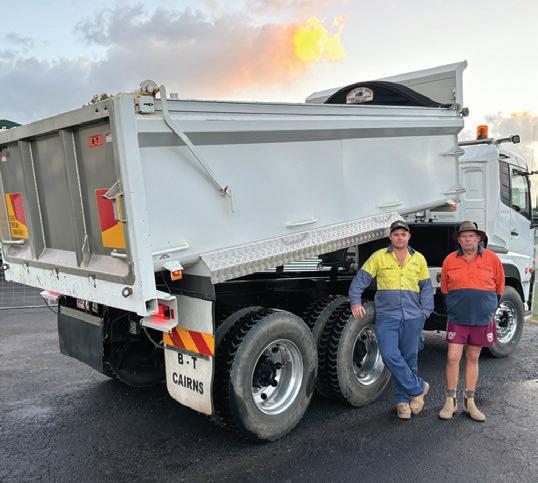
ing tarps, among other things,” Darryl added.
“At that point we were so at out with work – and we’ve been going at out ever since. We’re only a small company but we have a good reputation. I can honestly say the biggest thing we’ve tried to do is get operators back on the road as soon as we could – because when their equipment is in here getting xed, it isn’t making them any money.”
And Darryl says they put in the hard yards to get the job done – whether it meant opening the doors early or staying back late, as many customers can attest.
Howard and Andrew Plumb were among B-T Industries’ loyal customers, having turned to the business for its truck body needs for decades. ey also purchased the very last body manufactured by B-T Industries seven years ago.
ey said they were saddened to hear B-T Industries closing its doors. “We have been a customer for only 30 years but during that time, Malcolm, Daryl and Gary Beattie have been the benchmark of what excellence is.
“ e Beattie family have well and truly earned some time o , after dedicating their careers to the people of Cairns and others who have come because of word-of-mouth recommendations.
“Malcom and the boys had
myself needing one and, in my mind, it was a B-T body or none. No other builder comes close to what B-T Industries can build and I’ve owned and seen plenty of others in my 30 years with trucks.
“Seven years ago, after months of nagging, they nally caved, and I am proud to say my family owns the last body they built. Our son bought the truck that that body is on from us. He knows the condition of buying the truck o us, is that when he is ready to sell that truck, the body stays in our family, until we too are ready to retire!” ough B-T Industries will o cially close at the end of July, Darryl says he’s not ready to give it up completely just yet.
“I’m sort of retiring but still keeping a nger in the pie,” he said. “We’ve come to a stage where it’s become too much. I’ve enjoyed the industry and it’s the same with my father but we’ve been in it a long time, so we’ve decided to bow out gracefully. We would have liked to sell the business, but it wasn’t to be.
“I’ll keep doing blue plate modi cations certi cates and will be involved in advising companies up here on how to do any modi cations that may need to be done on any truck or trailer. I don’t mind doing a bit of part time work – Dad is retiring but for me, it’s a change
































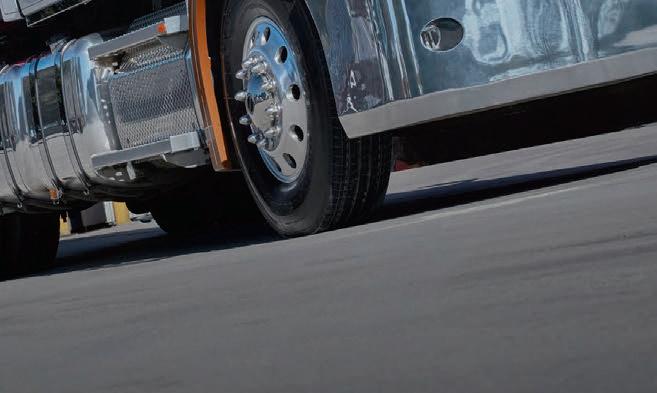









Our writer hitches a lift in an eye-catching rig for the final 100km stretch of this year’s Crawlin’ the Hume from Melbourne to Albury.
BY DAVID VILE“WELL, I don’t think those fellas that sell AdBlue will be getting much business out of this lot today,” said Malcolm Leech with a big grin as he red up the Cat Diesel in his Peterbilt 379.
‘ is lot’ was the diverse contingent of around 300 historic heavy vehicles that were taking part in the 2024 Crawlin’ the Hume in early April, which made its way from Melbourne to Albury running the old Hume Highway.
In an event that drew participants from as far a eld as Queensland, Malcolm had kindly o ered me a lift on the roughly 100km stretch northbound from the lunch stop at the Winton Raceway near Benalla to the end of the run at the Albury Racecourse.
Hailing from Newstead, near Castlemaine in Victoria, Malcolm and his family operate Fouremile Trucking, with the company trucks running all manner of general freight across the country.
e eet comprises of three Peterbilts, two Western Stars, two Ford Louisvilles and a couple of Kenworths, and Malcolm’s 379 has been a faithful servant for over 20 years.
“She’s a 1988 model, ex-Freestones, I believe it was bought out as a glider kit. It’s been a colossal truck - she has had a couple of whacks and a bit of cosmetic surgery, but she still holds together.
“ e motor seized about 12 years ago and we put a new head on it and have swapped the 13-speed out for an 18 double over box. She only tares around 9 tonne full of fuel. I wouldn’t have a clue what mileage it’s done over the years, but she still works each week, it’s got good legs and its good on fuel.”
With the Cat rumbling Malcolm eased the big Peterbilt out through the gates of the Winton Raceway past the ruins of the Winton Roadhouse and onto the old part of the Hume, bound for Glenrowan.
e old Hume is a long way removed from the double-lane freeway of today and as we headed along Malcolm reminisced about his rst forays into trucking many years ago.
“ e rst truck I bought with my brother was an F8000 Ford which we did with Cubico work to Sydney, and then I got a 1968 Diamond T with a 6/53 GM in it – I could hardly hear myself think in it!
“I bought it from a wrecker’s for about $3000. It had been working as a log truck, so I shovelled the dirt out of it and got it working.”.
Along the way he has also had stints driving for ompsons and Parsons Transport and then taking the plunge again as an owner-driver working for Col-



in Rees (CRT) - with the blue CRT colour carried over to the Fouremile eet.
Heading up and over the current Hume Freeway the convoy wound its way into Glenrowan and with the town famous for all things bushranging, it was no surprise to see the six-metre-tall statue of Ned Kelly with shotgun drawn overseeing the passing procession through the town. e new Hume in a lot of places runs parallel to the older version and saw a number of towns including Kilmore, Broadford, Seymour, Euroa and Wangaratta all progressively bypassed.
Today the modern Hume could be regarded as somewhat of a boring drive with Malcolm having experienced what many would consider the best era of the Hume in the 1970s and 1980s, which saw faster trucks and a greater spirit of adventure amongst those making their way up what was fondly known as ‘Sesame Street’.
“It was really good on the old road, but you had to be on the ball and be across what you were doing. e towns used to break it up a bit too, coming through places like Benalla and Wangaratta you had to slow down and then get going again. We used to travel in groups of 10-15. You would be yacking on the CB radio and before you knew it you were at Holbrook” he said.
With the convoy heading into Wangaratta the lineup of trucks making their way through numerous sets of tra c lights allowed many people to enjoy the slow-moving procession, and also provided Malcolm with only his second visit to the regional city since the bypass was completed in 1993.
Fast forward 31 years today and it is hard to imagine the once constant ow of trucks changing down and making their way through the town centre at all times hours of the day and night. With plenty of chatter over the radio and the

Peterbilt building up speed we picked up the ‘new’ Hume highway out of Wangaratta headed towards Springhurst and Chiltern.
Along the way we pass Malcolm’s daughter Haley headed southbound behind the wheel of one of the company trucks, and with Malcolm’s son Joel and brother also driving for the Fouremile operation, it’s a real family a air.
Back at home Malcolm is restoring his father Gary’s 1969 AT-4 Dodge which is a labour of love.
“She used to go real well on the old road. It’s got a 6/53 in it, which he did interstate with. Once you got her wound up she was good for about 78 mile an hour (125km/h) so she was pretty quick.”
With the Jake brake slowing the Peterbilt, Malcolm wheels o the Hume once again and into Chiltern, a town that has embraced its Highway 31 heritage with one of the largest turnouts of people to wave and greet the trucks headed through
town with the crowd spilling out of the Telegraph Hotel and Conness Street.
With a few blasts on the horn to the people waving and aiming their cameras at the trucks passing, Malcom shook his head in wonder at the number of people.
“For the whole event it’s been awesome with the turnout of people - it has been massive right along the way.”
Slowing through Barnawartha, the last of the small towns that used to be on the old Hume, once again the new Hume is crossed over as we approach the Murray River and the end of the trek at the Albury Racecourse.
“ at’s one thing I remember about Albury on the old road, there were a lot of sharp left and right turns,” said Malcolm as we turned onto the Lincoln Causeway, known to many as the ‘Mad Mile’ linking Wodonga to Albury.
Indeed, there was, with many trucks coming to grief at the infamous ‘Rollover Corner’ at
the Viscount Motel. e 17km internal relief route through Albury, after having been rst put on the drawing board in the 1970s was nally completed in 2007, in the process removing around 18 sets of tra c lights for trucks heading through to negotiate.
Once again navigating the corners and tra c lights, one nal right turn puts us onto Fallon Street which signals the end of the trip and a dinner and social gathering with no doubt many stories to be told well into the night.
For Malcom, the trip has been a great day out and he is looking forward to the next one in 2026.
“I reckon there will be some thirsty people here tonight,” he smiled before continuing.
“You don’t get the full grasp of how big this event is until you see them all sitting on the pad there ready to depart Melbourne this morning and here again now. is was my rst Crawlin the Hume, and I will be de nitely doing it again.”
Enrol in the Hydrogen Fuel Cell Electric Vehicle Training program

Hydrogen energy has the potential to cut Australia’s greenhouse gas emissions to onethird of current levels by 2050. Developed in collaboration with industry experts, these future focused Microskills pave the way for a greener, more sustainable future. Equip workers with the fundamental knowledge and skills to safely operate and integrate Fuel Cell Electric Vehicles. Upskill online, on-demand in less than 2 hours.

Microskills for a macro impact
Our Microskills focus on three key areas that lay the foundation for a sustainable future:
1. Hydrogen Energy Fundamentals
2. Introduction to Hydrogen Fuel Cell Electric Vehicles
3. Refuelling of a Hydrogen Fuel Cell Electric Vehicle
In collaboration with:
What started as a tidy-up wound up as a complete $55,000 rebuild of this 1987 Ford LTL workhorse that was once part of the Lindsay Brothers’ fleet.
 BY KAYLA WALSH
BY KAYLA WALSH
FARMER and diesel mechan-
ic Mitch Underwood is by no means a man of expensive taste – but when it comes to restoring old trucks, he’s not too worried about going over budget.
“I don’t have a sports car or a yacht on a harbour, but I love old trucks and old machinery!” he laughed.
“If it’s a worthwhile project, I’m happy to spend a bit of money on it.”
Mitch, who comes from the small town of Arcadia in Victoria, spent 18 months and about $55,000 restoring a 1987 Ford LTL.
He tried to stay as close as possible to the original model and is delighted with the results.
“If you went back in 1987 and said ‘I want this sort of truck’, the truck I have now is that bloody close to it you
wouldn’t notice the di erence,” he said.
“We kept the lights traditional; we kept a lot of things traditional.
“I spent more than I budgeted, but that covered new tyres, new batteries, everything.
“I’m really happy with how it’s turned out, it’s gone over and above what I ever expected.”
Mitch bought the truck secondhand for about $30,000, with the idea to “tidy it up a bit”, but he ended up taking the project a lot further.
“ e truck started its life as a Lindsay Brothers truck, and it was kicked around a few farms in central New South Wales.
“I bought it o a guy called Gary in Jerilderie who does restoration work, but just didn’t have the time to put into this truck.
“I got it with the idea to tidy it up and have it as a bit of a

classic, but also to work as a farm truck. I went to town to get a bit of rust and a few things tidied up. e original quote was just $6800. And then I went to ‘Oh my God, let’s actually pull the whole thing apart and redo the whole thing!’”
Mitch worked with various di erent suppliers over the course of the restoration and praised them for their fantastic work.
“I took the truck in to some chaps in Shepparton called Cundari Bros. Joe and Dom did a wonderful job in pulling it apart and repainting it, repairing it and doing work on it. I did some of the little things while it was in with them too.
“Cundari Bros did such a good job, the truck went from looking OK to ‘Woah, have you seen this thing?’
“ at being the case, it’s

been easier for me to justify doing more bits and pieces.”
He continued: “Randall in Custom Care in Seymour polished the tank and brackets and stu for me, and Northern Chrome did a great job with the chrome grill.
“Getting the grill done was probably one of the more worrying parts, because it was broken, and he was able to nd a guy to repair it.
“Craig and his crew did a great job resetting the grill and doing all that.”
Mitch sourced most of the parts he needed from Universal Truck Wreckers and Graham ompson Motors in Shepparton, as well as Just Louisville in WA.
“I’ve been collecting all the parts from them along the way. Universal Truck Wreckers told me ‘I think we need to get you a desk and chair mate, you’re in here so often!’”
He also used his own knowl-

edge of mechanics to do some repair work on the truck, as well as some t outs, setting up the turntable and re tting all the hydraulics.
“Where possible I’ve been involved, doing what I can,” he added.
Mitch uses the truck on the farm mostly during harvest time, when it pulls a tipping trailer and carts grain and fertiliser back and forth from the farm to Melbourne and Geelong.
He says he’s never allowed to sell it, because his 13-year-old son Jamie would be devastated.
“Jamie just loves that truck. He actually framed a picture of it and gave it to me for Christmas, it’s hanging on the wall in our house!”
His next project is the restoration of another vintage truck – a 1985 Kenworth SAR.
“ e SAR mechanically now is pretty A1, and I’m going to redo the paintwork and a few
details along the way.” His advice for anyone who might want to try restoring an old truck? Don’t take no for an answer!
“You just want to be motivated to follow through. I always liked old trucks, and what you pay for an old truck, compared to what you pay for a modern-day truck. ey take a lot more looking after. Once the old trucks are xed up, they haven’t got the modern electronics that create gremlins along the way.
“I could never a ord a new or late model truck, but some of the older trucks have a bit of character in them. I’m an old school mechanic, and I’m more comfortable with the old trucks because that’s just the era I grew up in.
“I don’t do a lot of kilometres, I’m only a small operator. I just said I’ll buy this truck and come up with something a bit special.”














AS far as truck drivers go, Ash Farmer is as fair dinkum as they come.
Living out in Horsham he works his Sterling hard carting his tippers from point to point.
First time I photographed Ash through Ararat he was rapt to find his image on my Truckspotting Ararat page and we’ve become good mates since.
Ash has been in the trucking industry going on five years now and enjoys what he does and to be honest, it shows with the pride he takes in his truck and trailers.
When it comes to his truck, he always had a desire to own a Sterling and that’s exactly what he did, pulling the tippers dayin, day-out with plenty of work keeping him busy.
It’s a 2008 Hx9500 workhorse with ‘Odd One’ emblazoned on the bug deflector and the names







of Ash’s three children – Evie, Taliyah and Ruby – on the side.
“The ‘Odd One’ was the first name that came to mind when deciding on a name,” said Ash.
“The goal was to be out there and different to the normal trucks on the road both by make and colour scheme, and it was originally the only Sterling in a fleet of five Kenworths before I got her.
“I have the names of my children on the side so they’re with me in spirt when I’m away and also for the future when I get older and can pass the truck down.”
Growing up, Ash had his mind set on becoming a truck driver.
Ash states it was always his dream to get into the industry and now he’s kicking plenty of goals doing what he loves.
While on the road I know
drivers don’t have all that much to choose from when it comes to tucker so I always try and get the truckies favourites and for Ash, it’s hands down the Ballan roadhouse for their pizza.
Be safe and don’t think you know it all, are his words when it comes to advice for the upcoming generation.
“Take the time to listen to the blokes that have done it all their life and never be afraid to ask for a hand or just say G’day.”
When Ash isn’t driving his Sterling, he is spending time with his family, loves his deep sea fishing and in all honesty it’s just nice to be off the road and enjoying what matters in life.
In the background, Ash tells me he’s working on a Kenworth T610sar as a future project.
And with that, it’s a wrap on this edition’s Truckies through Ararat.


VETERAN truckie and radio presenter Tim Abra, 71, may have just retired from the airwaves but he’s still got many miles on the road ahead of him yet.
Tim became a familiar voice in the Redland City in Brisbane, with his regular country radio show airing on community radio show Bay FM 100.3 for 31 years.
ough his career in trucking extends even further, with over 50 years spent on the road. For Tim, his foray into trucking started very early on, sparked by a chance encounter with a truck driver in his early teens.
“I was down in Bendigo and saw some trucks parked up, so I jumped in one of the cabs and started talking with the driver – it all just went from there,” he said.
“When I was 15 I used to wag school and go down to Rutlands Transport in Bendigo to wash shitty stock crates. So I learned to drive the trucks around the yard and back them in until I got my licence at 18. en I spent a few years with Rutlands, carting livestock.” Originally from Tasmania, Tim spent many years living in Victoria before making the move to Brisbane in the late 1980s, where he currently
resides, working for Simon’s National Carriers, based at the Wacol depot.
He’s now been with Simon’s for over 20 years, doing local work throughout Brisbane as well as occasional runs into the regions.
Over the years, Tim has worked in various driving roles including livestock, tankers and general freight, along with a 15-year stint driving tour buses across the country.
“I’ve driven all sorts of trucks, starting out in the Accos and Atkinsons and that sort of stu . I’m a local bloke now and have cut back to three days a week, so now I’m in Volvos, Macks and
Ivecos,” explained Tim.
“I’ve been on the local runs since I started with Simon’s, which I love because you’re home every night. When you get to my age, when the sun goes down, so do I!
“I had lots of di erent driving jobs in between. When I was driving the tour buses, it was based in Wangaratta and we went to Brisbane, Sydney and occasionally across to Perth. It was that job that brought me here, when I was transferred to Brisbane.” irty-one years ago when Tim started on the radio, he was 40 years old. And as he explained, he’d spent his days on the road and then put together his radio program
when he got home.
And up until his last show, he would go into the station with a suitcase full of CDs.
As much as he loved the show, he knew the time was right to give it up.
“I used to do the Sunday morning show. I still miss it but I don’t miss sitting in my room after work preparing for it,” he laughed.
“ ere are a lot of new people coming through the radio station, I met a new partner and we’ve had a motorhome sitting in the shed for over 12 months, which he haven’t had a chance to use because I’ve had to be home on the weekend for the show.
“It was hard to leave the
radio show though. My last show was pretty emotional. All the other presenters came in to help me get through it.”
In addition to a few trips in the motorhome over coming months, Tim is also hoping to make more use of his historic truck collection which includes two early Transtar 4070s, a 1978 big cab Atkinson and an Acco Butterbox among others.
“I try to always attend Lights on the Hill and the Brisbane Convoy for Kids. But now that I have more time, I’m hoping to get to more shows with my old trucks. I can even get one of the old trucks and take them for a run on the weekends now too.”


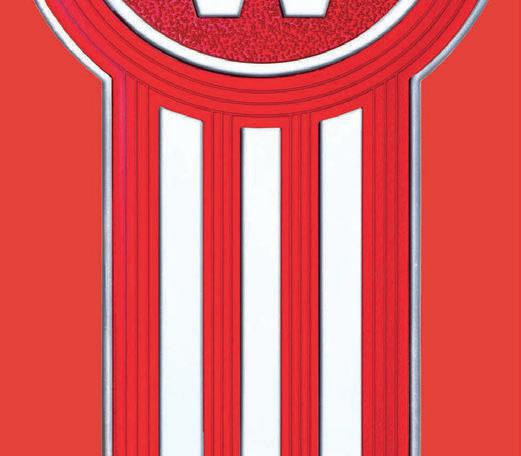


 BY KAYLA WALSH
BY KAYLA WALSH
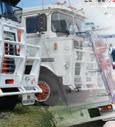





THERE are so many great truck shows and events coming up soon – here are some dates for your diaries.
Transport Women Australia Ltd – Living the Dream Conference
May 30– June 1, 2024 Essendon Fields, VIC transportwomen.com.au/ events
e conference kicks o with a pre-conference tour of Paccar, which includes lunch, and a concurrent session with Healthy Heads in Truck and Sheds. Cindy Parker (director of operations at Americold LLC) has been announced as a keynote speaker. Ellen Voie, founder of Women in Trucking from Wisconsin, will also be speaking at the event. An awards dinner is on June 1.
JUNE Alexandra Truck, Ute & Rod Show
June 9, 2024 Alexandra, VIC alexandratruckshow.com.au
e Alexandra Truck Show is back on the long weekend in June this year, with a Sunday Show ‘n’ Shine on the town’s main street, as well as live mu-
sic, a Victorian woodchop tournament, exhibitions, trade displays, kids’ amusements and a ra e. Come down on Saturday for the local markets, a convoy and truck drivers’ memorial service at 2pm and sponsors’ dinner at 6pm. For more details email trucks@alexandratruckshow.com.au or phone Gordon Simpson on 0409 577 212.
JULY
Camp Quality Adelaide Convoy for Kids
Jul 6, 2023 Victoria Park, Adelaide, SA fundraise.campquality.org.
au To celebrate National Female Truckies’ Day this year, WiTA and Camp Quality are teaming up to host a day “for the little kids AND the BIG kids”. Supporters will cheer on Camp Quality’s rst ever Adelaide convoy, as they travel a 40km route around Adelaide and Port Adelaide, starting and nishing at Victoria Park. e event venue will also host a free family fun day, packed with entertainment and experiences including food vans, kids’ rides, face painting, live music, and more. Attendees can check out the trucks and motorbikes on display at a Show ‘n’ Shine after the convoy.



AUGUST
Casino Truck Show
August 3, 2024 Casino, NSW casinotruckshow.com.au
e Casino Truck Show is back – with over 600 trucks expected from all over Australia. Truck registrations ($30 each) will take place from 6am to 9.45am. e street parade is at 10am, and award presentations will take place at 3pm, with over 70 trophies up for grabs. Entertainment will include Mossy Rocks and the Tony Q Band, who will be rocking out from two separate stages. For more info email info@casinotruckshow.com. au or Darren Goodwin at dt-
goodwin1@yahoo.com.au or phone (02) 6660 0300.
SEPTEMBER
American Iron Echuca Truck Display
September 7-8, 2024 Echuca Rotary Park, VIC campaspe.vic.gov.au
All makes and models of trucks are welcome at the American Iron Echuca Truck Display. Attendees can look forward to modi ed tractor/mini tractor pull demonstrations, on-site camping and catering, club merchandise and trade stalls, as well as live music by Van-yt.
MEGATRANS
September 18 -19, 2024

Melbourne Convention & Exhibition Centre, VIC megatrans.com.au
Leaders from across the supply chain will gather in Melbourne to discuss the future of the logistics industry at MegaTrans, an integrated trade expo and conference reserved for companies o ering advanced technologies and services. Experts will discuss the issues that are shaping the future of the sustainable supply chain, including workplace diversity and real estate planning.
OCTOBER
Wauchope Yesteryear Truck & Machinery Show
October 5–6, 2024
Wauchope, NSW Facebook: e Wauchope Yesteryear Truck and Machinery Club is year’s Wauchope Yesteryear Truck & Machinery Show has been moved to October, with plans to make the event bigger and better. ere will be no Saturday night dinner this year, but there will be additional food outlets and a bar in operation. Set up and a tractor run will take place on Friday October 4. For more info email wytmc.inc@hotmail.com.
Lights on the Hill
Memorial Convoy
October 5–6, 2024
Gatton, Queensland is year’s Lights on the Hill
event will see twin convoys leaving from Brown & Hurley Toowoomba and Mica St, Carole Park in Brisbane on October 5, converging at Gatton Showgrounds. A memorial service for truck drivers who have lost their lives will then take place on October 6 at the Lake Apex Memorial Wall. Outside of the memorial aspect of the event, attendees can look forward to live music, kids’ rides, markets, trade and food stalls.
NOVEMBER
Illawarra Convoy
November 17, 2024
Illawarra, NSW illawarraconvoy.com.au e Illawarra Convoy is celebrating 20 years in 2024, so this year is going to be a big one! Attendees can expect a colourful convoy, live music, kids’ entertainment, food, a ra e and more. All funds raised will be distributed via the Illawarra Community Foundation to charities and families in need within the Illawarra and South Coast regions. Have you got an event you’d like included in the next Save the Date? Email all the details to kayla.walsh@primecreative. com.au
• Have you got an event you’d like included? Email details to kayla.walsh@primecreative.com.au.
SYDNEY’S “truck show drought” was washed away, with visitors pouring into the inaugural Sydney TruckFest from May 3-5.
While the rain pelted down, it wasn’t enough to keep avid truckies and families away with 4700 fans filing through the gates of the Hawkesbury Showground in Clarendon.
Organiser Brendon Ryan says locals showed up in full force over the three days, despite the weather. “For its first ever run, we were completely surprised,” he said.
Despite the initial nerves, they were pleased with how everything turned out, with 70 trucks lining up at the gate.
Created by Brendon and
Bruce Gunter, the duo say the show was created amidst a “truck show drought” in NSW.
“There’s no truck show in Sydney anymore, nothing even truck related,” Brendon said.
“Everybody always has to travel around if they want to go to one, so we found the little hole in the market and tried to fix it.”
Sydney hasn’t seen a truck show of this size since The Working Truck Show in Penrith over 20 years ago, which sadly ended when the organiser passed away.
Sydney TruckFest combined the best of the industry, with a special focus on new vehicles, trailing equipment and services dedicated to the road transport industry.
One of the drawcards of the
Hawkesbury Showgrounds was the Yennora Woolsheds, famously used to play host to the industry for years. They were transformed into a time capsule with period specific vehicles, hay bales, plastic sheep and more.
“The display was just amazing. I have never seen, and don’t think there has ever been a collection of trucks like this all put together,” Brendon said.
Another amazing display was seen in the truck entries, with the rigs battling it out for the top three trophies.
The Show ‘n’ Shine was open to all trucks of every size, shape, year and model, with a first, second and third place awarded. Judging was solely up to the public, with QR codes scattered around the
grounds to cast votes.
The Silverback Armour ‘Beast of the Show’ was taken by Pace Drilling and their Kenworth T909.
Closing in on second was Matty Bowler and his Kenworth 409 SAR, with the third place trophy going home with Mark Galea and his Peterbilt.
“We received great feedback overall. The camaraderie was felt everywhere, and everything was so fantastic,” Brendon said.
With the success of the event evident, this truck show is here to stay.
“We are looking at doing it every second year, opposite to the Brisbane Show,” he said.
“We’ve already pencilled in dates with the venue, aiming for March 2026.”


























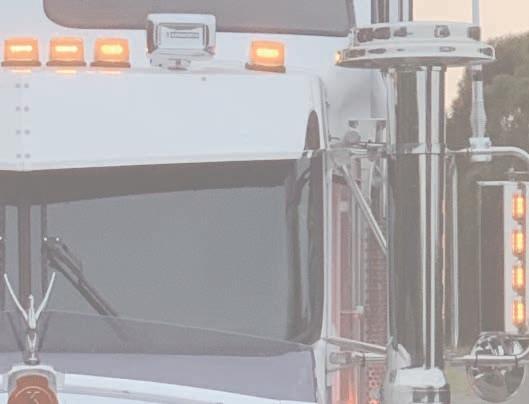































SHELL Rimula has partnered with Big Rigs in a big way – so there’s even more reasons to send in your best truck shots.
Each month, the Big Rigs team will choose a #PicOfTheMonth, with the lucky winner receiving a $500 Shell Coles Express Gift Card.
Keep an eye out for our regular posts on the Big Rigs National Road Transport Newspaper Facebook page, calling
for your best truck photos and add yours in the comments, or email them to kayla.walsh@ primecreative.com.au.
Don’t forget to include a brief note about the truck and where the photo was taken. We’ll feature some of the best photos in each edition of Big Rigs Newspaper, with one winner announced each month. Keep those amazing truck pics coming!


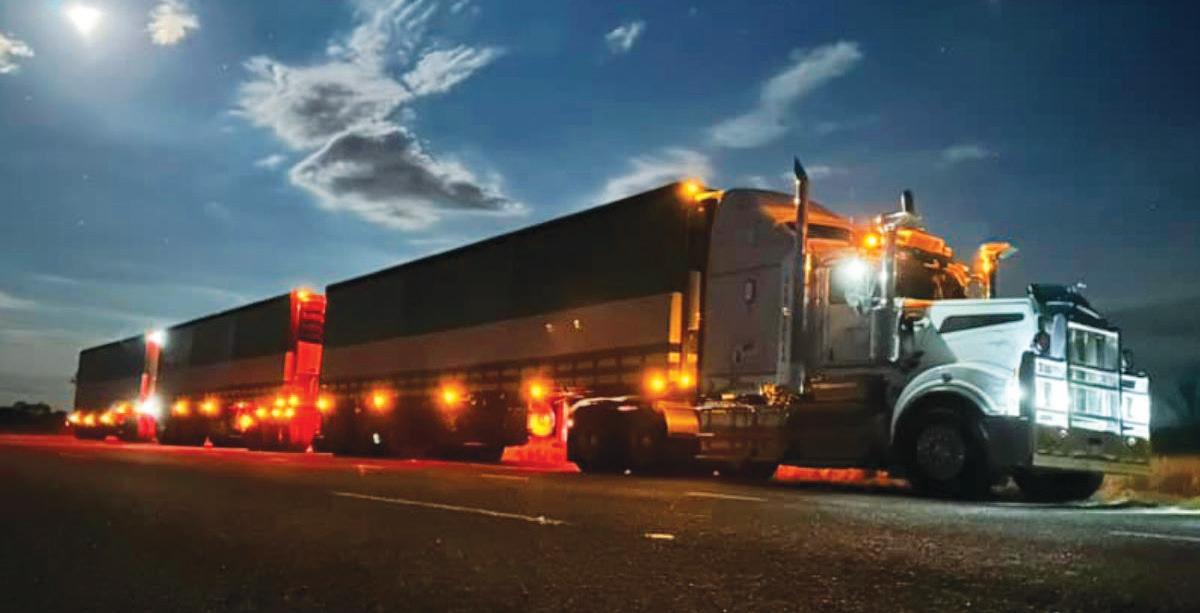
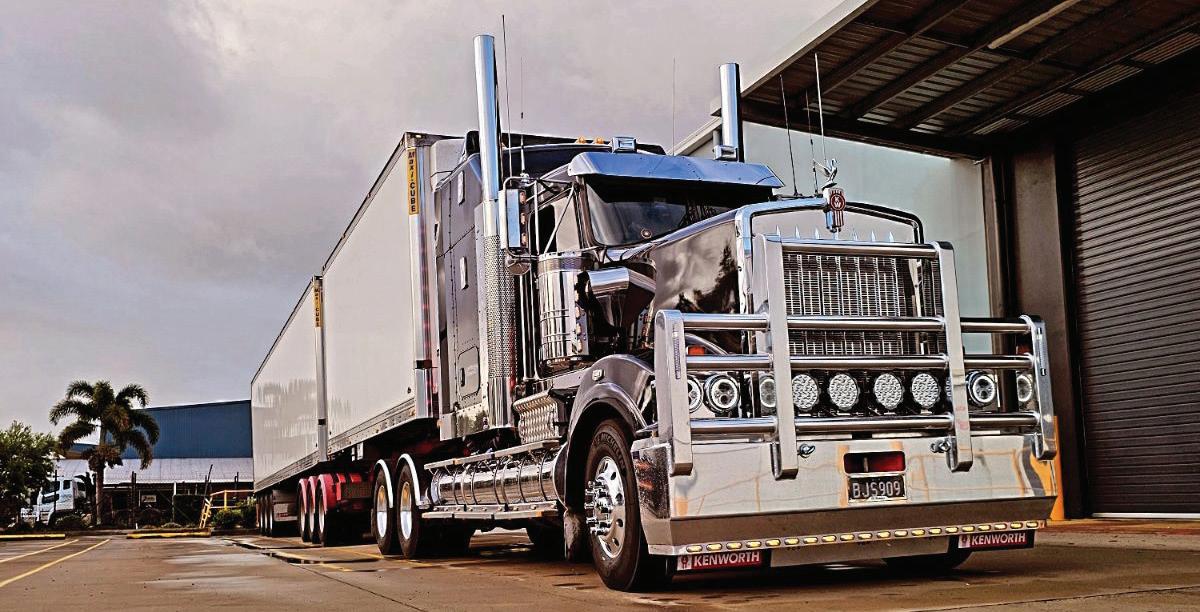
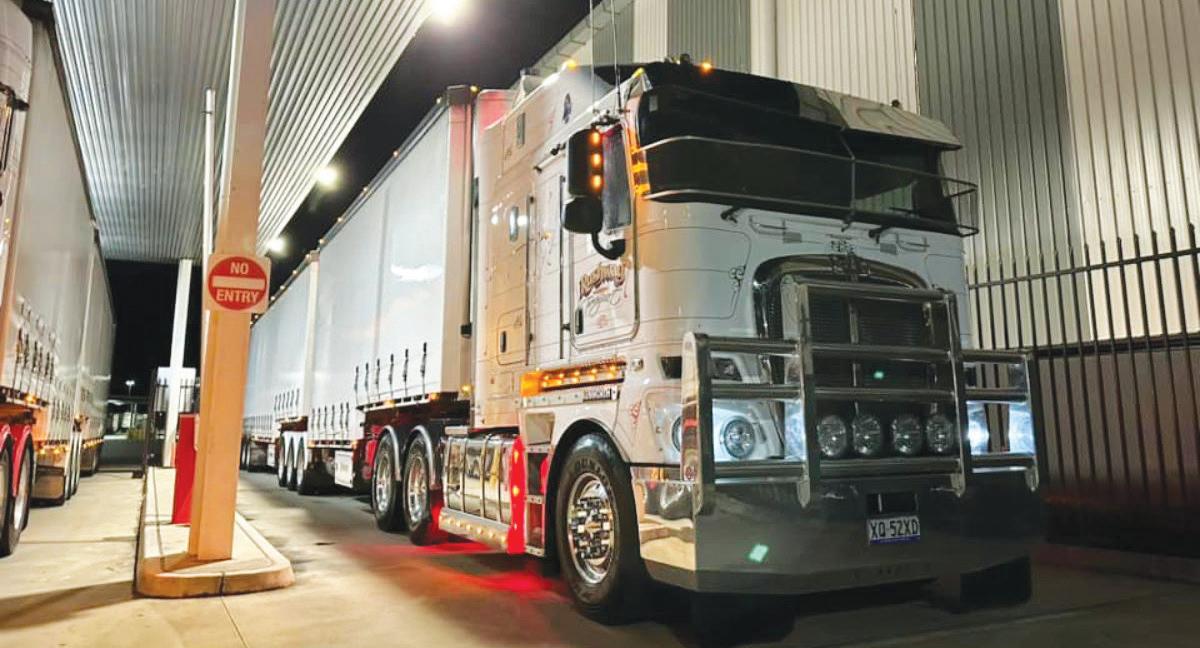

When the going gets tough, truckies keep everyone going
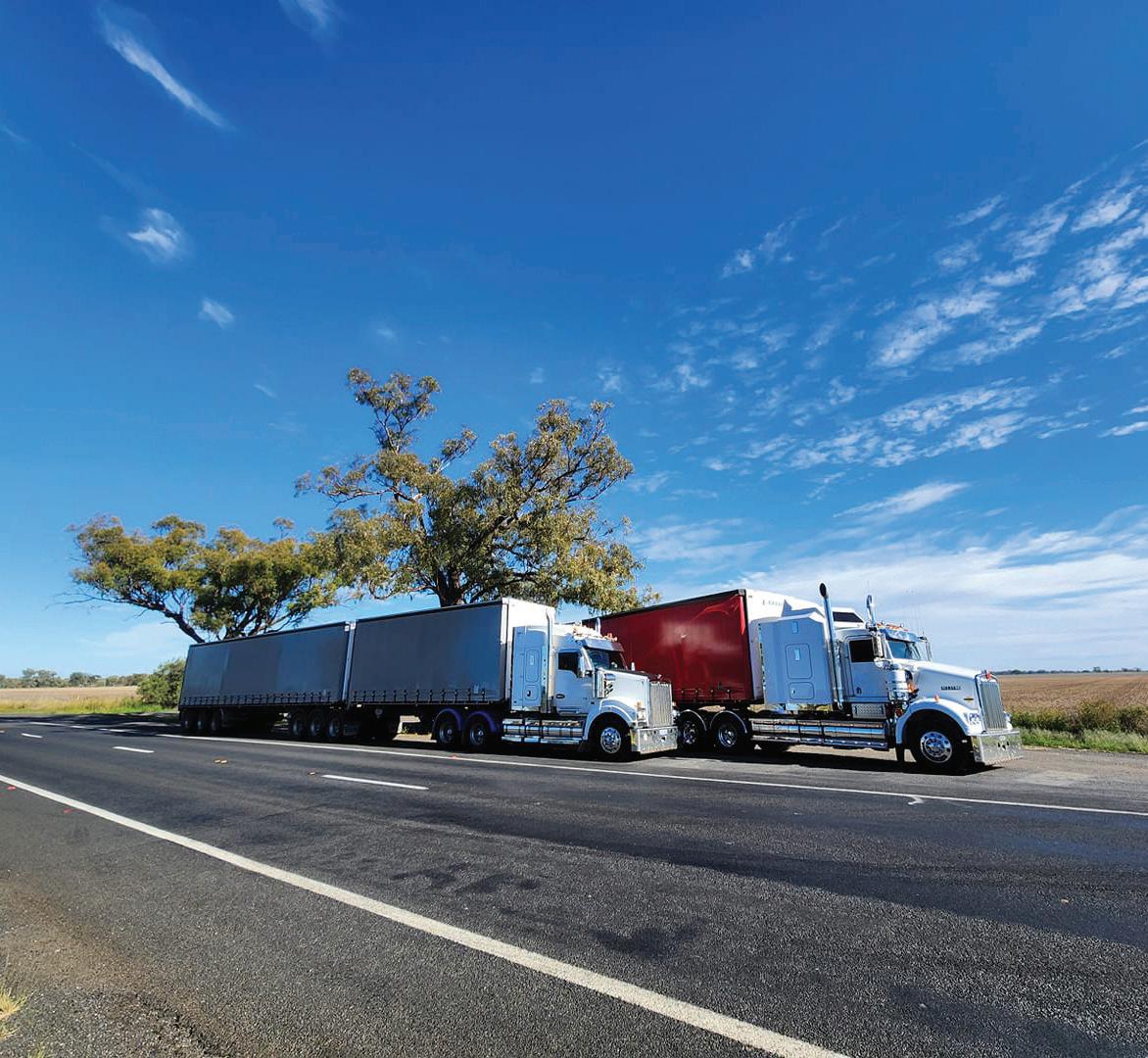



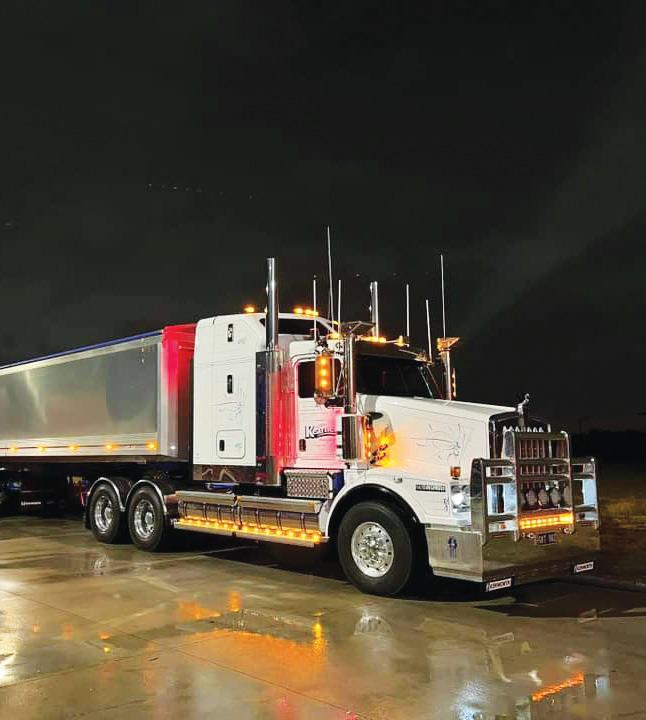



AUTOMATED lubrication systems supplier, Lubecore, has returned to the Australian market through its new master dealer Lubecore Australia.
After years spent working side by side at Equipment Direct International (EDI), Shane Chestnut and Ben Patrick have established Lubecore Australia in Yatala, Queensland.
is comes after they signed a contract to become the master dealer in Australia for all Lubecore Inc. products, which are fully Canadian manufactured.
e signing of this agreement makes Australia the eighth country outside of Canada with a Lubecore presence.
“ e presence of Lubecore in Australia dropped by the wayside during Covid, when it became really hard to bring
the product into the country,” explained Ben. “But now Lubecore is back. We’ve got the rights to import the Lubecore systems from Canada and set up distributorships all over the country.”
Lubecore is a family-owned Canadian company that was started in 2008 by husband and wife team Jan and Linda Eisses, who are joined by their four sons.
In revealing the brand’s returned presence in Australia, Jan said, “We are delighted to announce that we have found committed partners in Ben Patrick and Shane Chestnut, who have invested in a master distributorship for Australia. Ben and Shane have proven successful track records, and we have full faith in their capabilities.”
He continued, “Our family is in it for the long haul with
our Lubecore ‘next generation’ Automated Lubrication Systems.”
Shane and Ben both have extensive experience in the earthmoving, mining and transport industries.
Using their already broad contact database, they intend to grow a network of dealers throughout Australia to supply, service and support the next generation of automated lubrication systems throughout the country. “We’ve already appointed our rst agent in south east Queensland, which is Equipment Direct International (EDI) – and we’re in contract negotiations with several other locations including Western Australia, Victoria and New South Wales,” Ben said.
Lubecore’s current on-road systems include both pneumatic and modular options.

e brand’s Pneumatic Single Line 210 system enhances preventative maintenance by keeping greaseable components in excellent condition, thus ensuring safe and reliable equipment performance.
Its innovative pump design lubricates critical points such as pins, bushings, lift cylinders, and articulation joints.
Equipped with a timing system, it allows customers to adjust the system’s runtime, a ecting the total grease output. e system also provides real-time electronic performance data, including exact pump pressure, low-level alarms and trigger times.
Lubecore’s Modular Progressive Automated Lubrication system is designed for versatility, so it can be used in various applications.
Its modular pump is designed for easy maintenance,

allowing quick access to vital components for part replacement and repair.
Featuring a fully submergible potted timer, which is moisture and dust-proof, safeguards it from environmental factors like dust, corrosion, salt and vibration.
e timer features LED indicators for power and ground connections, aiding testing and troubleshooting; while the automatic low-level shuto prevents the grease pump from operating when the reservoir is empty, avoiding potential issues from extended empty operation.
Both Lubecore’s pneumatic and modular lubrication systems are available with the Korilla Premium Lining – an ultra-durable, heavy-duty lining that minimises line repairs and utilises a simple connection system.
As Ben explained, “Lubecore manufactures a high quality product that’s well suited to the Australian transport, construction and mining industries. e systems are fully manufactured in Canada – and a lot of their values are very similar to Australian values.
“You might pay a little bit more for our lubrication systems but you know you’re going to get a high level of quality – and now we’re working to build a growing support network for our customers too. We’re going to provide the best possible service that we can and try to be a step ahead of the rest.”
He added, “ e Lubecore product is very durable and it’s already stood the test of time in Australia, having been put to the test in some of the toughest conditions.”











RELIABLE PERFORMANCE
Lubecore’s Pneumatic Single Line 210 system ensures safe and reliable equipment performance
It provides lubrication for critical points such as pins, bushings, s-cams, and suspension components

ADJUSTABLE RUN AND PAUSE CYCLES
Our innovative timing system allows flexibility in runtime
Adjust the system to meet your specific needs and change the total output of grease

REAL-TIME ELECTRONIC PERFORMANCE MEASUREMENT
Measure exact pump pressure at any date or time
Detect low-level alarms and track when they were triggered
Hold mechanics accountable for optimal system performance

BRASS SUPER INJECTORS
All Single Line 210 systems come with high-quality brass Super Injectors
Prevent rust and corrosion, ensuring durability

KORILLA PREMIUM LINING OPTION
Equip your Lubecore system with Korilla Premium Lining
Ultra-durable, heavy-duty lining that eliminates broken line repairs

TYPICAL APPLICATIONS
Highway trucks
Street sweepers
Dump trucks
Cement trucks

WHY LUBECORE?
Reduced system inspection time
Guaranteed residual value of greasing system
Pump built to outlast equipment

Environmentally friendly (suitable for biodegradable lubricants)
• Heavy-duty Deutsch® electrical connections
TRUCK drivers will know our Australian roads are managed by various authorities, who dictate the mass limits for certain routes, the time of day they can be used, and more.
is all depends on whether they’re local roads managed by local jurisdictions or state and national highways managed by the state governments.
One tool businesses can rely on is regulatory programs, speci cally Smart On-Board Mass, or Smart OBM, which assures road managers that heavy vehicles are operating within the prescribed limits of their permits or enrolled scheme.
Where it works in operators’ favour is that by knowing the exact weight of each vehicle in real-time, the business can maximise the payload to increase productivity, while also operating at higher mass limits. Furthermore, they can gain access to roads or routes they might not have otherwise
been able to use without the data Smart OBM provides. For a driver, this could mean getting to a destination within their fatigue schedule, making more runs, operating more e ciently, saving fuel, and reducing wear and tear on the truck.
Sometimes, however, Smart OBM is still shrouded in mystery – what is it, what can it do, and can you mix and match di erent solutions on one heavy vehicle combination?
Smart OBM 101
Smart OBM works in tandem with the Telematics Monitoring Application (TMA) to provide drivers and their vehicles access to parts of the network that would otherwise be o -limits. It allows higher gross vehicle mass and, perhaps more importantly, gives operators insight into how much their load weighs and whether it has been distributed safely and correctly.
Smart OBM scale systems connect to the vehicle’s telematics systems using a physical cable, ensuring high reliability and robustness.


ere are several providers of Smart OBM systems, meaning you have a choice as to who you go with and what system you use.
e technology is essentially a set of digital scales integrated into the axle group of each vehicle.
Like all other commercial scales, Smart OBM systems must be calibrated on installation and periodically recalibrated to ensure accuracy. While the recalibration intervals vary between suppliers, they are generally around 12 months. Recalibration is important for compliance, so it’s not something that can be put o .
Each Australian jurisdiction has di erent requirements regarding regulatory programs, including schemes like Smart OBM. ese di erences are based on business and industry requirements and are designed to meet the needs of those involved and ensure they bene t not just the business but the industry and the wider community.

In some cases, Smart OBM is required to utilise specialty vehicles, known widely as Performance Based Standards, or PBS vehicle con gurations. Alongside this, the introduction of low – and zero-emission vehicle schemes is starting to be seen in Victoria and South Australia to allow higher mass limits for those



vehicles with alternate fuel capabilities and their unique builds.
For drivers, Smart OBM is not only a great tool for understanding the mass and loading of their trucks. Still, it is also a regulatory requirement when it comes to operating in di erent jurisdictions across Australia. And with
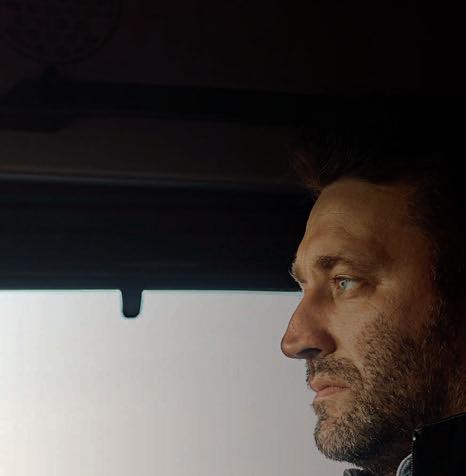





many drivers regularly crossing borders on their runs, understanding what rules apply and when something is important for safety and legal compliance.
You can learn more about Smart OBM by visiting teletracnavman.com.au and searching “on board mass monitoring”.



GREAT fuel e ciency, reduced running costs, exceptional performance and reduced total cost of ownership combine to make Detroit’s stable of engines a winning choice.
Whether Detroit’s DD13 engine or the DD16 – which is the biggest, most-powerful truck engine ever built by Detroit – the brand’s range of engines are built to go the extra mile, even in the most trying conditions.
Released in 2021, the popular DD13 Gen 5 builds upon its previous iterations, bringing further improvements in fuel consumption and an increased compression ratio.
Penske is the authorised distributor of Detroit engines across Australia and New Zealand.
As Detroit business manager at Penske Australia, Bob Gowans, explained, “Each new generation of the DD13 has seen a 2-3 per cent improvement in fuel consumption. Additionally, with each iteration of that engine, we’ve been able to improve the driver experience and reliability even further.
“ e DD-series of engines are a very advanced platform. Rather than being a modication of an existing engine platform, the DD13, 15 and 16 were engineered from the

ground up, with fuel economy being a major factor in its design.”
When the engine range was created, it was designed to future-proof against future emissions standards, exceeding the then latest EPA10 standards.
“At Detroit, we built an engine to cope with the newest emissions requirements but we also had visibility of what the future would look like in terms of reducing emissions further,” added Bob.
“ is made it possible to create an engine platform that didn’t just do what was legally required, but also delivered greater driveability and class-leading fuel consumption.”


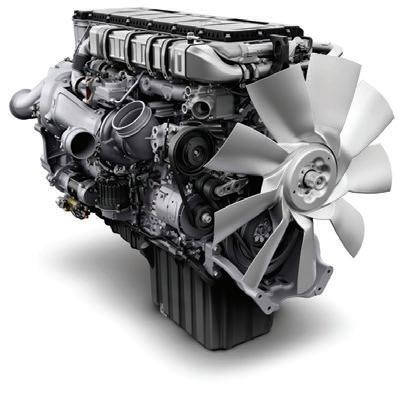
Detroit’s engines have already proved they can last a long time out in the eld, delivering great fuel consumption even in very harsh conditions.
“More low speed torque provides the ability to hold gears on hills as well as better launch acceleration. Coupled with the right axle ratio, the side e ect of that is that the engine is turning slower than previously, reducing friction and fuel consumption further,” explained Bob. When it comes to emissions, Detroit doesn’t just look at the regulated emissions – NOx and particulates – but also at greenhouse gas emissions, which is becoming more and more important to
its increasingly environmentally conscious customers.
“Put simply, the less fuel you burn, the less greenhouse gas emissions there are, so we are already in a great position with our range of engines,” Bob said.
Every Detroit DD engine is also compatible with renewable diesel such as hydrotreated vegetable oil (HVO), without a ecting the engine’s maintenance requirements and with no modi cations needed for the vehicle. “ at’s as standard on every single DD-series engine.”
Fuel isn’t the only liquid cost operators face; “We’re meeting the latest emissions requirements without using a huge amount of AdBlue,


typically 3-4 per cent of fuel usage. e latest iterations of the DD13 and DD16 engine also have hugely increased operating periods between regeneration and reducing the time taken to complete one while driving – in many operations, customers will save downtime by never having to do a stationary regeneration.
All of Detroit’s engines have an integrated Jacobs engine brake, which o ers engine brake performance of more than 550hp in the DD13 and 650hp on the DD16 – reducing the reliance on service brakes, thus keeping them fresh for emergency usage. “It avoids unnecessarily wearing things out,” said Bob.
“In order to keep the engine reliable and for a longer fruitful life, Detroit engines are designed so they don’t need a mid life rebuild or refresh.
ey are designed to last.”
But when the time does come to replace engine parts, Detroit recommends always going for the genuine option.
“Whether that’s due to damage or maintenance requirements, at Detroit we tell customers about the advantages of using genuine parts wherever they can,” said Bob.
All Detroit engine spare parts have a one-year, unlimited kilometre warranty. ese parts aren’t just de-
signed to t the engine, they are the exact same parts that are used to build the engine at the factory, with the same quality control.
In addition to that, Detroit o ers its own range of coolants and oils, which are designed to meet Detroit engine requirements and are suitable for other engine makes and models.
“Detroit’s range of genuine coolants and oils are engineered to help protect parts of the engine from premature wear and keep it running a long time into the future,” explained Bob.
“ ey are speci cally designed for Detroit engines in Australia. Our engine oils and long-life coolants have been tested extensively in Australian road trains in some of the harshest conditions to be certain that they can protect Detroit engines in our unique operating environment. e latest FA-4 oil is factory ll across all trucks currently tted with a Detroit engine, and o ers a signi cant fuel saving over older CK-4 oils.
“Likewise Detroit PowerCool coolants are thoroughly tested in Australia and designed to prevent any internal corrosion over their whole life, which is absolutely critical in protecting the range of metals in a modern engine.”









INSTALLATION of Central
Tyre In ation (CTI ) creates improved safety outcomes and savings. Management of tyre pressures is a crucial factor. Not all CTI systems work the same way!
e Australian owned and made AIR CTI system incorporates air ow limiters between the left and right hand tyres. is means if a fully loaded truck is travelling a road where one side is higher than the other or driving around long curves, forces of the load cannot push tyre air to the opposite side, away from where the working pressure is most needed.
Being able to manage pressures from the cabin gives the driver con dence that even if they pick up a slow leak somewhere, they can successfully complete the day’s journey. e AIR CTI system’s isolation of wheels provides exceptional bene ts for
safety. You can deal with tyre problems under safe, controlled conditions, keeping you moving.
e ‘right’ in ation pressure is unique to each vehicle and set of operating conditions and needs to be explored for safety and savings with the type of load, speed and terrain travelled. Tyre pressures vary when the vehicle is stationary with ‘cold’ pressures compared to when travelling with ‘hot’ pressures. Tyre pressure monitoring (TPM) systems do not in ate the tyre, they are simply a warning system. AIR CTI is a Central Tyre In ation system containing the same as TPM systems, however it provides positive air pressure to the tyre allowing consistently maintained in ation pressures, from the cab on the y. e AIR CTI system controller is uniquely designed to be robust, have longevity and is
easy to use, allowing real time pressure readings with a press of a button from the cab to adjust pressures to your driving requirements, which is a considerable advantage, giving ultimate control for maximising safety and savings.
How do jack knifes happen?
Jack knifes happen when the drive tyres lose traction, and the trailer pushes them ofine. Trailer swing happens when the trailer tyres lose traction and slide outwards. Both conditions happen when the truck is braking heavily, or when the traction level is low. Loss of traction on one set of tyres is the underlying cause.
Bad brake balance, that over brakes one or the other set of tyres and or poor loading are the main causes. Over in ated tyres increase the risk.



An example of poor loading is a tip or dump truck towing a plant trailer with an excavator. A heavy trailer, with no weight on the over-in ated truck drive tyres is a common site on most roads – and it can be a recipe for disaster.
Almost all cases happen on empty trucks, where braking is overpowering, on severely over in ated tyres, that provide minimal grip or traction. Because of the heavy weight and long lengths of semi-trailer rigs, the potential damage is enormous.
Modern electronic braking systems virtually eliminate these accidents, although stopping distances increase considerably.
Optimal tyre pressure would substantially improve both cases, while reducing stopping distances. Safety is paramount to any successful enterprise. Being able to manage pres-
BEING ABLE TO MANAGE PRESSURES FROM THE CABIN GIVES THE DRIVER CONFIDENCE THAT EVEN IF THEY PICK UP A SLOW LEAK SOMEWHERE, THEY CAN SUCCESSFULLY COMPLETE THE DAY’S JOURNEY.”
sures from the cabin gives the driver con dence that even if they pick up a nail somewhere, they can successfully complete the day’s journey. ey can deal with tyre problems under safe, controlled conditions, without exposure to other vehicles.
Similar problems happen to trucks with other styles of trailer, like dog, pig, or road trains.
Spud Murphy’s Kenworth travels through Kalgoorlie. Images: AIR CTI The AIR CTI Gen 7’s compact display size allows flexibility in placement in the cab.“ wheels.” We’ve heard it hun dreds (if not thousands) of times.

trucks, we’ve had wheels that need to be polished. It is part of driving a truck or owning a eet, and it is the status quo that has never been questioned. However, it takes around 30 minutes, on average, to polish a single truck wheel. And when you multiply that by the total number of wheels on your rig, and then by the number of trucks in your eet… that’s a whole lot of time spent scrubbing wheels just to keep
ink about the opportunity cost. Polishing wheels means the downtime of vehicles.
Downtime of your vehicles means they’re not on the road. Not being on the road means your business is not making money. It’s simple. e knockon e ect is real and costly. at time and e ort should be going elsewhere. In a world where we have GPS helping us get to destina-
It’s time to question the status quo.
e good news is it doesn’t take any fancy technology, high-powered washers or expensive systems. It doesn’t even require big upfront costs or ongoing fees. It’s as simple as switching to chrome wheels.
Chrome wheels are resistant to stone chips, gravel and dirt scratch marks and are designed
ments. More than that, each chrome wheel can be cleaned in about 40 seconds. at means hours back in your day, dollars back in your pocket and a rig that can meet high presentation standards every single day, no matter what you’ve put it through.
If it sounds too simple, that’s because it is.
Superchrome started provid ing chrome wheels to truck drivers and eet owners over 20 years ago to help them improve business e ciency and costs. No one who tries chrome has ever gone back.
Kel Lawrence from Lawrence Transport shared the cost and time-saving impact of chrome wheels:
“Since we’ve been using Superchrome, the amount of money and time saved is unbelievable. Our trucks are in and out of the wash bay in no time. You get a shine in a matter of minutes.”
Superchrome’s use of the latest technology in chrome steel and alloy truck wheels guarantees top-quality wheels that have surpassed stringent quality control testing and extend the working life of your wheels.
When it comes down to it, the chore of polishing truck wheels is more about the mo-
notony of the task. It’s the time wasted that could be spent doing something more valuable, the wasted earning potential and the knowledge that no matter how hard you polish, eventually, those wheels will lose their shine.
At Superchrome, we’ve made it our mission to ensure you stay on the road longer while turning heads along the way with wheels that never stop shining.
See how much you could save by making a switch from polished to chromed alloy wheels by checking out our Lifetime Savings Calculator. Head to superchrome.com.au/life-savings-calculator and see how much you could save today.


















































































AS the owner of Tom Laing Transport Dubbo (TLT Dubbo), every day is di erent. I nd myself all over the country, out west travelling rough country roads or in the east tackling the hills and previously, being stuck in mud and on slippery slopes while moving livestock across the country.
Excessive tyre wear, tyre and vehicle damage and high main-
tenance costs were the norm in these environments.
e continual thumping over hundreds of kilometres of dirt and corrugated roads took its toll on the truck – and me – every day while on the go.
Around 12 months ago, Truck Art Trailers tted the latest VIGIA NM464 auto tyre in ation and de ation system to the drive wheels of my Kenworth 659 prime mover. I really needed to do something about
tyre wear and reducing shock to the truck and myself while on rough and corrugated terrain.
e ability to push a button to in ate and de ate tyres to suit the terrain, the ease of use and in-cab display panel combined with the proven dependability of the Vigia system made the decision easy.
Recently, without tractor assistance, I was able to get out of a situation where I would have normally been stuck due

to mud and a greasy incline. I was lucky enough to be able to simply push a button to lower the tyre pressures and I slowly drove out. I may not always be this lucky however, the ability to lower the tyre pressures quickly and then also rein ate with the push of a button worked well this time around.
I have set four di erent tyre pressures in the system to gain traction, to give a smoother ride on rough roads, to settle the prime mover over corrugations and for when loaded/unloaded. It’s just good to know every day you go to work you have the insurance of the correct tyre pressures taking one less stress factor o the job.
Travelling the backroads, I am exposed to high numbers of kangaroos and other wildlife, none of which have caused any form of damage to the Vigia system. is has surprised other drivers as they thought the system may have been vulnerable to damage.
Changing tyres with the Vigia auto in ate/de ate system is simple and I have had to do it far less often than previously. I have also noticed far less wear and damage to the tyres since tting the Vigia auto in ate/ de ate system.
I use the Vigia Tyre auto inate/de ate system every day and I am extremely happy with the results. It’s simple to use, I can set the tyre pressures for each condition and it provides

a level of exibility I have not previously experienced.
I will de nitely have Truck Art Trailers t the Vigia auto in ate/de ate system on my next truck too.
e Vigia system has been a great investment for TLT Dubbo as we transport livestock across the country, and I would recommend it to anyone in the transport world.
WHEN it comes to operating a truck in Australia, regardless of the size of the eet, safety across the entire supply chain is of paramount importance.
State government initiatives such as the NSW goal of achieving zero fatalities by 2050 saw the development of the 2026 Road Safety Action Plan; focusing on reducing road trauma and creating a safer environment for all road users.
Regulators like the NHVR and industry bodies such as the HVIA provide an information base that allows operators to access relevant information to safety, standards and policy.
e Australian transport industry as a percentage is 4.7 per cent of GDP and as of August 2023 employed over 300,000 people in road transport alone, as published in the Australian Infrastructure and Transport Statistics Yearbook 2023.
e Australian road freight task moved an estimated 241.8 billion tonne kilometres, showing how critical the industry is to the Australian economy in ensuring goods are delivered to just about every corner of the country.
Truckmate Australia has had a long history within the trucking industry, supplying products aimed at ensuring

operators and eet managers alike can be con dent that when it comes to spray suppression their equipment is covered.
A common misconception when referring to spray suppression is that it’s just the brush that is tted on mudguards or along the body. But spray suppression is a collective of parts designed to reduce road spray from a vehicle – and in some cases, the spray suppression is the body of the vehicle itself.
e University of Newcastle has positioned itself as a top institution, rank-
ing in the top 200 of world universities. ey boast an impressive array of research facilities covering sustainability, technology, minerals, and their partnership with transport-focused iMove. Truckmate sought to align itself with a partner that could provide a long-term research bene t, making the University of Newcastle the logical choice.
In 2023 Truckmate Australia embarked on a collaboration with the University of Newcastle to establish the most e ective combination when it comes to spray sup-
pression. As a business, Truckmate wanted to bring back awareness of the importance of having adequate spray suppression.
“ e bene ts of having adequate spray suppression have profound e ects on the safety of other road users,” said Truckmate BDM Ross Granger.
e research project utilised several resources including ADR 42/05 mandates and key information from NHVR publications to ensure that each area had been ticked o . All con gurations were simulated in the University of
Newcastle wind tunnel using a 1:12 scale model, allowing each one to be measured under controlled conditions and deliver accurate results.
e research project delves into the intricacies of spray suppression systems, focusing on the development and testing of various wheel guard con gurations. ese con gurations, ranging from baseline setups to those equipped with advanced features like spray suppression arches and loop kits, were meticulously examined using a combination of wind tunnel experiments and computer simulations. e ndings o er valuable insights into the e ectiveness of di erent strategies in mitigating wheel spray and enhancing road safety.
One of the standout revelations from the study is the e cacy of Con guration 2, which includes full-wheel guards, spray suppression arches, and loop kits. is con guration emerged as a frontrunner in suppressing spray, signi cantly reducing water plumes. Such outcomes underscore the potential of integrating advanced technologies and innovative design approaches to tackle road safety challenges head-on.
Furthermore, the study emphasises the importance of compliance with regulatory
standards, such as the Australian Design Rule 42/05, which mandates the use of wheel guards for heavy trailers. By navigating these regulations while simultaneously optimising wheel guard designs for maximum e ectiveness, operators can strike a balance between compliance, and road safety.
“We could not be happier with the results that we received from the university, it reinforces the importance of how the parts work together. It is truly a great time to be a part of the road transport industry, with advances in technology and the opportunity to contribute to safer roads,” added Granger.
As we navigate towards a future of safer roads, it is imperative to build upon the insights garnered from such research endeavors. By leveraging innovation, collaboration, and a steadfast commitment to road safety, we can pave the way toward achieving the ambitious goal of zero fatalities and serious injuries on our roads. e strides made in spray suppression technologies serve as a testament to the power of innovation in creating safer roadways for all.
To discuss your spray suppression needs or collaboration, contact Truckmate Australia on 02 9725 2777.
A display vehicle showing the tyre Inflation system at the 2024 LBRCA Annual Conference in Wagga Wagga. TLT Dubbo loaded up and ready to hit the road. Images: Truck ArtDRIVER safety is essential at Goldstar Transport, and is why it ts JOST’s JSK 37C fth wheels and sensor units across the entire eet.
Goldstar Transport was ocially started in 2004.
“We had trucks a little bit before that, but 2004 was the year we decided this is what we were going to do. We were going to be very serious about it, and now it’s come up to 20 years,” said managing director Sean Carren,
Predominantly Western Australia-based, the company covers most of WA, focusing on essential services in the areas of fast-moving consumer goods, dangerous goods, container transport and mine site supply.
Goldstar Transport prides itself on is its dedication to its employees, which Sean says are the top priority.
“When I’m asked to talk about the business, I’d rather talk about the people. ey’re the key to it.”
Goldstar Transport now runs 250 trailer combinations consisting of road trains, pocket road trains and B-doubles, 60 rigids and 150 prime movers.
All new prime movers are now tted with JSK 37C fth wheels and Sensor Coupling systems from JOST.
“When the eet got over the 100-truck mark, JOST became a really important sup-

plier to us,” said Sean. “As we tried to make our operations safer, and as we standardised our eet so that the guys are dealing with the same turntable every day, JOST really became part of making it simpler and easier for them.”
roughout Goldstar Transport’s frequent and fast-paced operations, such as daily trailer swaps in various distribution centres, Sean says JOST turntables and sensors give operators extra peace of mind by removing any doubt of whether or not a trailer is hooked up properly.
e Sensor Coupling system does this by detecting irregularities in hook-ups using three

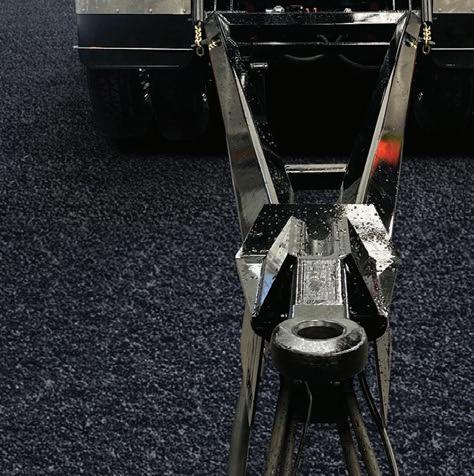
sensors tted to the turntable – one on the plate surface to detect whether or not the skid plate on the trailer is in contact with the fth wheel plate surface, one in the centre to detect the kingpin and ensure the lock jaws are secured around it, and one on the handle to ensure it is in the fully locked position. If any or all of these sensors detect an irregularity, the system will alert the driver that something is wrong and that the coupling process needs to be revisited.
“It just ensures that we’ve done all that we can do,” Sean added. “You need all the tools that you can get, and it certainly helps. We put a safety
chain on our turntables as well, so we add another step to the process.”
When it comes to ensuring safety, Sean says it’s about providing employees with the best resources to do the job, including the available technology and innovation.
“JOST is part of that. We also run a high level of telematics management systems. Our trucks have got a lot of cameras on them to protect the driver, and the implementation of cameras across our eet allows us to better understand what’s happening when something does happen. “We use technology and innovation as much as we can, and a lot
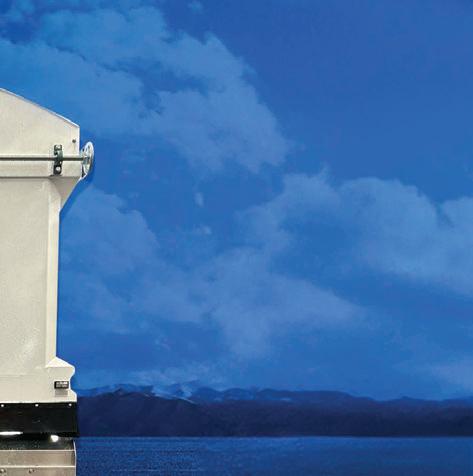



more than most, to make it a better working environment for our people and the public.”
According to Sean, the product support JOST o ers has always been a major contributing factor to his eet’s continued business.
When Goldstar Transport accepted a major contract to deliver to over 200 supermarkets across the Perth metropolitan area, for example, JOST was there to assist.
“JOST was key in giving our vehicles the right level of safety in order to perform those tasks,” Sean said.
“We bought a large amount of new trucks in one hit, all tted with JOST turntables.
“You hear about some people who sell you something and then you never see them again. JOST has certainly not been like that.
“ ey helped us originally with the piece that we needed, and they’ve been there with the training and the backup since.
“As we’ve brought on a new eet, they’ve also been there to help us make sure that there’s a level of consistency so that our guys expect the same thing no matter what truck they drive.
“So, from a people perspective, the JOST people are doing the best job to make sure that the Goldstar people get the best result.”






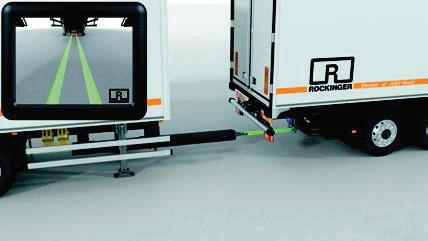


FOR renowned Queensland trailer builder Moore Trailers, quality and durability has always been key – and that goes right down to every last detail of each build that comes out of its workshop.
Ensuring a top quality end product means relying on suppliers with those same values –and that’s why Moore Trailers has turned to Hendrickson for much of its suspension needs for the last few decades.
Moore Trailers currently produces around 500 units each year, proudly boasting the widest range of trailers and dollies of any Australian manufacturer.
Moore Trailers founder Lionel Moore has spent a lifetime building trailers, with his career in the industry starting at just 14 years of age. Lionel started the business alongside his sons Grahame and Shayne Moore in the late 1980s but has now taken a step back from the company’s day to day operations.
Shayne Moore is now managing director and Grahame is chief operations o cer, with the brothers continuing to drive the business into the future.
Moore Trailers is currently in the process of expanding its manufacturing facility in Pittsworth, a rural town 40 kilometres from Toowoomba. e company moved to a new purpose built $15 million site

in 2020, which doubled its trailer building capacity. A further $7 million expansion is in the works to consolidate all production divisions onto the one site. e company is hoping the expansion will be complete and fully operational by late 2025, bringing production capacity up to about 750 units a year.
Shayne says having trust in the company’s suppliers is paramount, along with the backup support to go with it. And Hendrickson certainly stands by its product.
“We started using Hendrickson suspensions in the late
1990s and now we use their product on about 50 per cent of the trailers we build,” said Moore Trailers joint managing director Shayne Moore “We want to build a product that’s going to last and have that longevity. We recommend Hendrickson suspension because of the quality of the product along with their 1.2 million kilometre/ ve-year wheel end warranty, which is the best in the industry now,” Shayne added.
“Hendrickson isn’t the cheapest suspension on the market, but with that long life, the support they put behind their
product, and their weight savings – as they’re one of the lighter options available – it all stacks up to give our customers an end product that is going to last and go the distance.”


As Shayne explained, their current Hendrickson representative – state manager for Queensland, New South Wales and the Northern Territory, Matt Huigens – has been working with the Moore family for over 15 years. “ ere’s always been a great relationship with every Hendrickson rep we’ve worked with and now with Matt, we’ve developed a great business relationship and a friendship on a personal level too. So our relationship with Hendrickson just keeps on building,” said Shayne.
“We like to provide a product to our customers that lasts, so having suspension that has one of the best warranties on the market and dealing with people who have the same sorts of values in business as what we do is important.
“At Moore Trailers, we stand by our product no matter what – and that’s very much the same at Hendrickson too.”


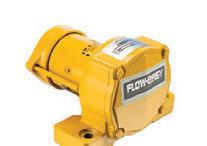

 Moore Trailers has been using Hendrickson suspensions since the late 1990s.
The company moved to a new purpose built $15 million site in 2020, with a further $7 million expansion in the works.
[L-R] Shayne, Lionel and Grahame Moore. Images: Moore Trailers
Moore Trailers has been using Hendrickson suspensions since the late 1990s.
The company moved to a new purpose built $15 million site in 2020, with a further $7 million expansion in the works.
[L-R] Shayne, Lionel and Grahame Moore. Images: Moore Trailers

KRUEGER, renowned for its excellence in trailer manufacturing, introduced its dry van series, the KVan, back in 2021. After incorporating years of customer feedback, Krueger is proud to announce the launch of a dedicated range available for order, slated for construction in late 2024.
Combining quality and innovation, Krueger’s latest release upholds its stellar reputation. e company consistently pushes boundaries in the transport industry, and the new Dry Van series
epitomises their dedication to excellence.
“Our initial KVans, Dry Vans, have yielded positive results,” noted Grant Krueger, re ecting on the series’ success.
e new Dry Van series is an engineering marvel, boasting innovative designs that optimise performance and durability. A standout feature is its lightweight yet robust construction, achieved through advanced materials and manufacturing techniques. is allows for increased payload capacity without compromis-

ing structural integrity.
“In addition, we’re integrating our newly engineered dock impact protection designs into the KVan,” Krueger continued, “ensuring longevity, durability, and great resale value.”
Managing director and founder, John Krueger, asserts that the Dry Vans are synonymous with the Krueger name, being dependable and durable. “Krueger chassis are manufactured with Australian-made high tensile steel,” he stated. “Our Dry Van builds also feature heavy-du-
ty ooring, threshold plate options for forklift and pallet trolley loading.”
“Our commitment to quality is evident in every aspect of our Dry Van builds,” John

emphasised. “From the use of Australian-made high tensile steel in our chassis to the heavy-duty ooring and threshold plate options, we ensure that our Dry Vans are not just dependable, but also built to last.”
Moreover, the new Dry Van series prioritises driver comfort and safety. With Krueger’s RFS Mark5 suspension and KHitch’s million kilometre warranty axles, a smooth and secure ride is guaranteed, even on long hauls and Australia’s challenging terrain.
“As a new feature, we will be adding a ve-year chassis warranty,” added Krueger CEO, Kevin Dennis. “We stand by the durability of the product and this warranty proves this to our customer.” e launch of the KVan range underscores Krueger’s ongoing commitment to innovation and customer satisfaction. By listening to customer needs and leveraging technological advancements, Krueger continues to set the Australian standard for excellence in the transport industry.



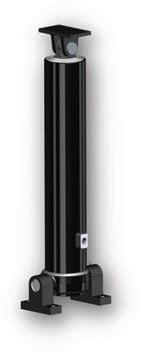




PROUDLY Australian family owned and operated, Trailer Gates Australia (TGA) has become a trusted name – producing a high quality made-to-measure product for some of the country’s biggest trailer and truck body manufacturers.
Made in Australia, from premium locally sourced steel and aluminium, TGA has been supplying product to the likes of major trailer and truck body builders that include MaxiTRANS, MaxiPARTS, Drake Group, NE Engineering, Midland Engineering and Shepparton Body Builders.
As owner of the business Duncan Stewart explained, there is no job too big for TGA, with a recent sizeable order for a major player in the transport space being testament to this.
He said, “TGA was proud to be associated with the delivery of over 1000 trailer gates for a very large order of 150 trailers, which a major Melbourne trailer manufacturer provided to one of Australia’s largest supply chain companies,” he said.
“At TGA, we’re ready and willing to take on orders, no matter how big. We’re all systems go and ready to take on work enthusiastically
to meet the demand of the major trailer manufacturers and truck body builders.”
TGA is based in suburb of Thomastown, strategically located just o the M80 Ring Road in Melbourne. But its customers stretch near and far, with the brand working with customers throughout Victoria, NSW, Queensland and South Australia.
Currently, TGA is shipping out hundreds of trailer gates Australia wide, each week.
TGA employs a team of highly quali ed master welders, who specialise in galvanised steel and alloy, producing trailer gates to ex-
ceptional standards. eir expertise helps to ensure quality is maintained through every stage of the production process.
Since he took over the company in January 2023, Duncan says he has remained committed to sourcing the best quality raw materials, with TGA’s suppliers being Australian Bluescope Steel and Capral Aluminium.
Duncan says that TGA can custom make any sort of gate for trucks and trailers from heavy duty load racks to lightweight alloy gates, or at tray tautliners.
Although TGA’s truck and trailer gates are typically made to order, TGA also o ers a range of o -the-shelf gate sizes too, with no wait time.
TGA provides a complete eet solution for companies requiring a di erent range of trailer gates.
And TGA stands by every gate that comes out of its factory, o ering a 12-month warranty on all its products.
In addition, TGA o ers an installation service too. TGA provides gate measure-ups and installation services at its omastown factory, and can also install its steel or alloy gates at its clients’ Melbourne metro locations if required, at a competitive price.
“ is service is great for busy people, and saves a lot of time for owner-operators, as well as transport companies. We
also do bulk eet trailer gate evaluations and measure-ups on-site if required,” Duncan added.
Adding to its comprehensive service, TGA also supplies its customers with a complete range of Australian-made rollers, suspending straps and associated parts.
With the client base at TGA
continuing to grow, thanks to a great quality product, coupled with exceptional customer service, Duncan says he very enthusiastic about what the future holds for his business.
For more info, please call Trailer Gates Australia on 03 9465 3225 or head to trailergatesaustralia.com.au.

THE National Heavy Vehicle Regulator (NHVR) has released its ‘Removing Roadblocks to Reform’ paper, calling for swift reform of the Performance Based Standards (PBS) scheme.
NHVR chief safety and productivity o cer David Hourigan said the paper called on industry and government to work alongside the regulator to create positive change for the road transport sector.
e regulator wants to see urgent amendments to the Heavy Vehicle National Law (HVNL) to allow for mature and proven PBS vehicles to transition to the prescriptive vehicle eet. Unlike PBS vehicles, the prescriptive eet is not subject to safety performance assessment.
“ is will help us accelerate the transition to a younger and less polluting heavy vehicle eet, and most importantly, save lives,” Hourigan said.
Currently, the safest, most productive, and lower emission heavy vehicles face more barriers to get on the road than a standard ‘pre-

scriptive’ heavy vehicle, said Hourigan.
“As a result, we are seeing higher emissions, loss of productivity bene ts and most concerningly, more fatalities.
“We need to modernise the PBS scheme, and to do this we must change the Heavy Vehicle National Law (HVNL).
“We seek to work with government and industry to reset the PBS scheme’s policy settings and update the PBS standards.” Hourigan said while the
PBS scheme had proven popular, it was initially designed to act as a pathway for innovative designs and technologies to be safely developed and deployed and was now failing to operate as originally intended.
“Rather than allowing for new truck designs, it is dominated by more or less of the same vehicles,” he said.
“Of more than 20,000 PBS combinations on Australia’s roads, almost half consist of one vehicle type – the truck and dog combination.”
Here’s a summary of what the NHVR is proposing:
Recommendation 1
Amend the Heavy Vehicle National Law to provide clear pathways for proven designs to exit the PBS scheme, which:
• Allow proven vehicle designs to be built and operated without requiring either a design approval or approval of the ‘as built’ vehicle within a speci ed network.
• Allow PBS vehicles which have lesser impact than
THIS WILL HELP US ACCELERATE THE TRANSITION TO A YOUNGER AND LESS POLLUTING HEAVY VEHICLE FLEET, AND MOST IMPORTANTLY, SAVE LIVES. ”
DAVID HOURIGANa prescriptive vehicle to access the general freight network.
• Allow ‘template vehicle designs’ to be speci ed by the NHVR, enabling these to be built and operated without a design approval (but still requiring approval of the ‘as built’ vehicle within a speci ed network.
Recommendation 2
• Amend the Heavy Vehicle National Law to remove the requirement for all design applications to be referred to the PBS Review Panel for advice, and instead provide provisions for the NHVR to consult
where it considers additional engineering expertise is required.
• A mechanism, separate to the design approval process, should be established, to provide jurisdictions with the opportunity to comment on potential access impacts associated with a new design.
Recommendation 3
• Amend the PBS Standards and Vehicle Assessment Rules and other operating documents to transfer decision-making responsibility for changes to the NHVR Board.
e NHVR also noted that Kenn Kanofski made similar recommendations in his 2022 review of the HVNL. “However, despite Ken Kanofski’s recommendations being supported by transport ministers, no progress has been made towards their implementation,” said the NHVR in its executive report summary. To download a full copy of the report, visit nhvr.gov. au and search for Removing roadblocks to reform.
All TGA’s trailer gates are made in Australia, from premium locally sourced steel and aluminium. Images: TGA TGA’s team of master welders produce trailer gates to an exceptional standard.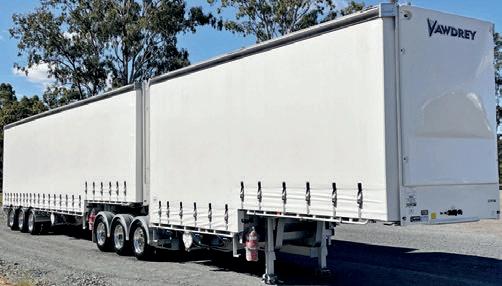


























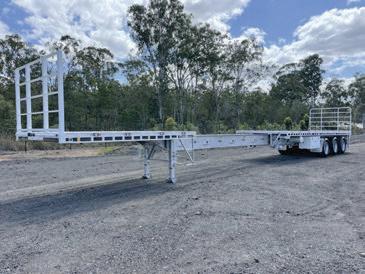



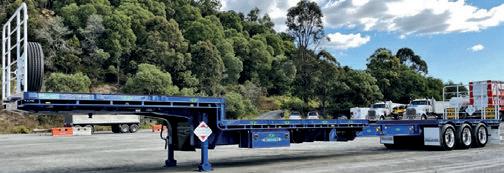






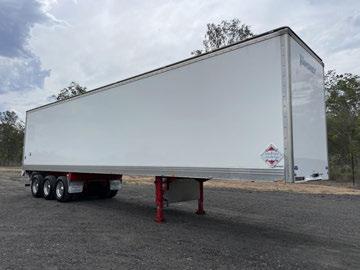



WHEN you’re clocking kilometres and making deadlines, you need a set of tyres that can handle the rigours of the long haul.
Giti Tires has stepped up to the plate, o ering up a robust Triple Guarantee that provides truckies with the assurance they need to so they can keep rolling with condence.
Let’s dive into why Giti Tires has become the go-to mate for truckies on the Australian roads.
Unmatched quality assurance
Giti Tire doesn’t just promise quality; they back it up with action. eir Free Replacement Guarantee is a standout feature that provides truckies with a free tyre replacement or a full refund in case of any manufacturing defects. is coverage lasts until the tyre’s usable tread dips to 2mm or within the rst 50 per cent of the tread wear. It’s a clear signal that Giti Tire stands behind their product and values

your peace of mind on the open road.
Your pocket’s best friend e road to savings is paved with Giti Tire’s Industry Standard Pro-Rata Replacement. After you’ve worn through the rst half of your tyre’s life, this guarantee steps in, o ering a credit towards your next Giti tyre purchase. is pro-rata system ensures that the value of the tyre you’ve already used is recognised and that you’re never left out of pocket as you maintain your rig’s rubber.
Casing Guarantee: The backbone of your tyre
An often-overlooked aspect of a tyre’s value is its casing.
Giti Tire’s Casing Guarantee o ers truckies a credit towards a new tyre if a casing defect is found. is re ects the brand’s commitment to durability and acknowledges that a tyre’s life doesn’t end with the rst tread. For truckies, it means the potential for retreads and extended service life, o ering signi cant cost bene ts down the line.

Service that goes the extra mile Giti Tire isn’t just about selling tyres; they’re about ensuring each tyre lives up to your expectations. When you need a check-up, an authorised Giti Tire dealer will be there to provide expert inspection and support. is level of service is part of the package, ensuring that when you invest in Giti tyres, you’re also investing in a network of professionals dedicated to keeping you on the road.
Exclusions and owner obligations: Keeping it transparent Transparency is key in any part-
nership, and Giti Tire makes all exclusions clear from the get-go. e guarantee is applicable to tyres manufactured after October 1, 1999, and valid for ve years from the date of manufacture, giving you a clear timeframe of coverage. And while it doesn’t cover damages from road hazards or accidents, knowing the boundaries of the guarantee allows you to take the wheel with your eyes wide open.
The road ahead
As the trucking industry continues to be the lifeline of Australia’s economy, the importance of reliable, cost-e ective tyre solutions cannot be over-

stated. Giti Tires, with their Triple Guarantee, has proven to be a formidable ally to truckies. It’s not just about the journey; it’s about making each kilometre as worry-free as possible. With Giti, you’re not just buying tyres; you’re equipping your rig with a partner that understands the long haul’s demands and stands ready to meet them head-on.
In the end, Giti Tires isn’t just another tyre company; they are a truckie’s mate, ensuring that as you do the hard yards, your tyres are doing them with you, backed by guarantees that keep you moving forward, no matter the distance.











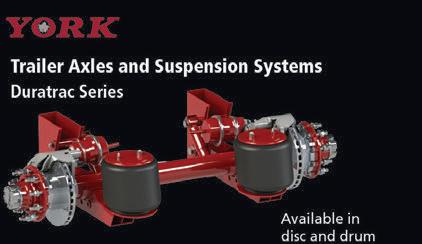





IF you work in a truck or trailer workshop, chances are Trucktools will be able to supply you with all the tools you need to get the job done.
Whether it be truck engine tools, truck lter tools, truck injector/fuel line tools, truck brake/steering/suspension tools, truck hub pullers and axle tools, truck workshop equipment, truck axle sockets, truck wheel service tools, gear/ bearing pullers/seal drivers, hand tools, torque wrenchers, or truck diagnostic tools –Trucktools has you covered.
Australian owned and operated, Trucktools has been going strong for almost 25 years.
“We provide the best service in the industry by sourcing trade quality global products, manufactured for the heavy vehicle and truck service industry,” said a company representative.
“At Trucktools, we specialise solely in supplying tools and equipment to service trucks and heavy duty equipment –that’s our main purpose and what we specialise in – and that’s why our customers keep on coming back to us, time and time again.”
Trucktools is a valued supplier to heavy duty diesel mechanics along with eet service workshops right across the country, providing a quality range of specialty tools and
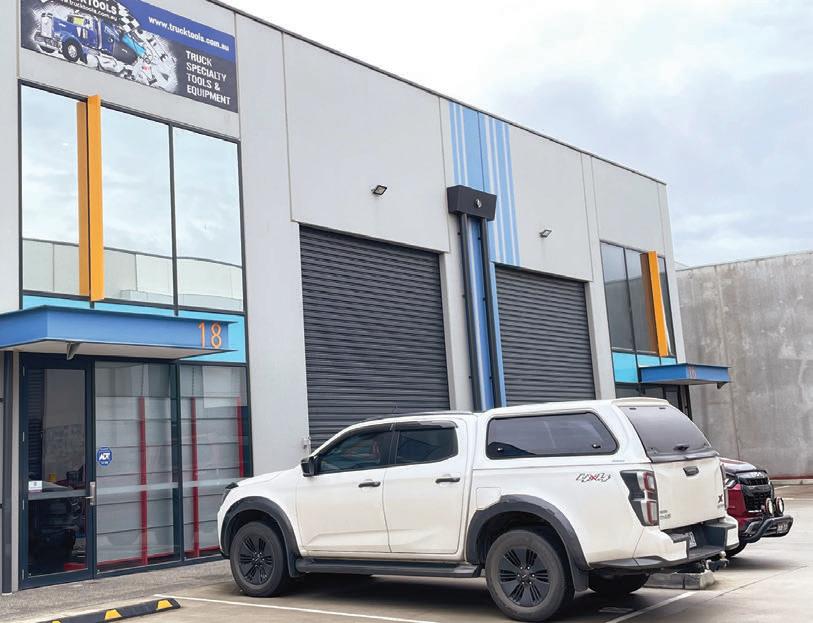
equipment. Its customer base extends Australia wide, as well as overseas to countries that include New Zealand, Fiji and Papua New Guinea.
To save its customers time, the easy-to-use online store means workshops and mechanics can order whatever it is that they need, for timely dispatch, so they can get the job done.
But at the same time, trucktools recognises that not everyone wants to order online, so they also look after customers over the phone and they can come in and visit the fully stocked warehouse.
e Trucktools warehouse is located in Pakenham, one of the fastest growing suburbs in Melbourne’s south-east. It is strategically located just 1km
the Princes Highway, with truck access available.
Pakenham is a growing transport hub and the site is easily accessible to many other transport hubs, being so close to a major freeway. Due to growth, Trucktools has actually just taken over the adjacent factory warehouse next door, which double its footprint – and mean that

it can stock even more great products. “We’re carrying more equipment and more tools, as the variety available continues to expand.
“Due to the wide variety of products we carry – and the extensive stock we keep on hand, ready for purchase and dispatch – we had run out of space in our existing warehouse.
“So, we had to take on another one – and we were very fortunate that it’s located right next door!”
Trucktools also has major carriers picking up orders from the warehouse daily.

At Trucktools, the extensive range just keeps growing, ensuring its customers have access to all the latest equipment and technology for the truck and trailer workshop space.
“We stock a huge variety of specialised truck tooling. At Trucktools, we are the one stop truck tool shop, along with being a National Preferred Supplier to Capricorn members across Australia,” the company added.
For more information, please visit the Trucktools website at trucktools.com.au, or call 1800 000 561 (Monday to Friday).


















IT’S tough to know where to start when a simple and cost-e ective product reduces waste and cost in every part of your truck – even in the driver’s body!
Earlier this year, Atlas Balance Company carried out an extensive trucking industry survey to seek quanti able evidence on the bene ts the Atlas Balance Company invention provides to drivers, industry, and the Australian and New Zealand environment.
Visit atlasbalance.com. au/atlas-balance-rings-survey-on-client-experience to view the report, which summarises the bene ts.
Since the report was collated in March 2024, we have had hundreds more drivers and operators report on the cost savings they are experiencing with fuel costs, which is extremely relevant given the current cost of living and business expense pressures.
In all areas, waste is reduced: the rings never wear out, fuel consumption, tyres, driveline
elements, bearings, and oils from reduced friction from moving parts, reduced carbon footprint, fewer piles of waste tyres and so on and on. See the research from the Kangan Institute by visiting atlasbalance.com.au/?s=ka gan+institute. It shows results in reduced friction, driver control and comfort and reduced fatigue, resulting in greater safety for everyone.
Atlas Balance Company also uses recycled components in all possible areas, and most certainly with the contained recycled liquid metal.
Fleets seeing the benefits
Nationally well-known and progressive truck eets like Collins Adelaide and MRT in Victoria and others are tting Atlas Balance Rings to drives, steers and trailers.
ey recognise the bene ts of tting out their eets for tyre and diesel savings and operator fatigue.
And how about the other heavy vehicles –buses?
Coach and bus operators have an even greater interest in rider comfort and safety. With ever skinnier margins on reg-

ular and longer routes, the need has never been greater to add a low-cost accessory to reduce tyre, fuel and running gear costs. After clearly demonstrating better mileage, Gold Coast Coaches and
Fallon Buses, among other large bus eets, are big supporters and ambassadors for the balance rings. Industry gures too, like Rod Hannifey (Past President – NRFA) and Glenn ‘Yogi’ Kendall (owner of Kendall Trucking & Co, star on Outback Truckers, and host of On e Road podcast) have personal experience and enthusiastic support of the Atlas Balance Rings product. ankfully, it’s not rocket science to gure out the cost bene ts (a pair of balance
rings typically cost $550, plus GST. But sometimes they don’t get the same attention as a shiny chrome extender or smoke stack widener, because they are quietly getting on with business – saving you and the environment. After many years of absorbing extra manufacturing costs, a small 5 per cent cost increase needs to be passed on to purchasers on June 1, 2024, so please contact Simon McQuillan quickly to take advantage of May pricing. Call 1300 228 527, or visit atlasbalance.com.au.

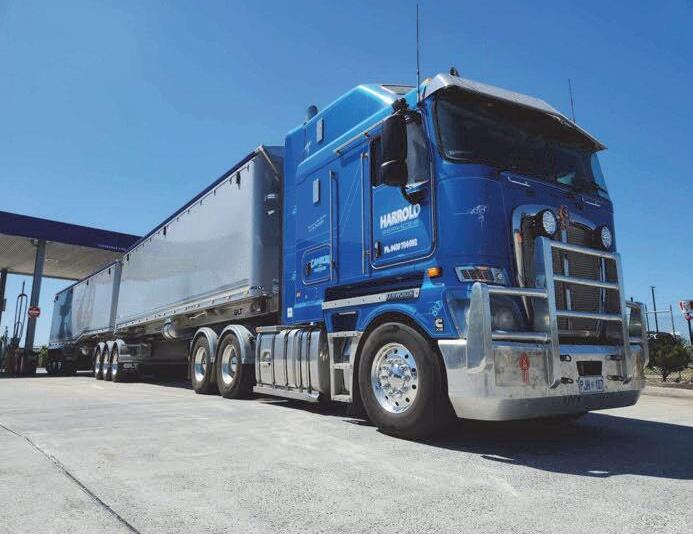

 Fallon Buses is a big supporter of Atlas balance rings.
Atlas Balance Company’s Euro and Asian steer rings.
The Atlas Balance Company recently put its Balance Rings through testing at the Kangan Institute TAFE in Melbourne. Images: Atlas Balance Company
Fallon Buses is a big supporter of Atlas balance rings.
Atlas Balance Company’s Euro and Asian steer rings.
The Atlas Balance Company recently put its Balance Rings through testing at the Kangan Institute TAFE in Melbourne. Images: Atlas Balance Company








Fuel costs gobble up truckies’ tax cuts
A majority of truckies Spy has spoken to welcome the federal government tax cuts from the start of the new nancial year on July 1.
But they have reservations about how they will improve personal weekly nances.
ey also think they won’t really have an impact on the weekly budget due to cost-ofliving increases.
“ e rising cost of fuel will add the most expense for us owner-operators than what we will bene t by from the tax cuts,” was a common response.
ese tax cuts are: Earn up to $18,200 – pay no tax; pay a 16 per cent tax rate on each dollar earned between $18,201$45,000 (now 19 cents); pay a 30 per cent tax rate on each dollar earned between $45,001-$135,000 (now 32.5 cents); pay a 37 per cent tax rate on each dollar earned between $135,001-$190,000; and pay a 45 per cent tax rate on each dollar earned above $190,000.
A lot of truck drivers who are employed by companies often tell me they earn around $100,000 a year.
ese will save $2179 a year which after all the extra costs won’t leave much for other things.
ere are also expected to be three interest rate rises according to nancial experts, which could start before the end of the year.
Not good news for those with a mortgage.
Over the decades Spy has collected thousands of contacts for truck drivers from around this vast country.
Each time I yarn to one they are given a contact card which most keep in their wallets. Often out of the blue I will get a call or email from a driver who o ers some industry info or just wants a chat.
Lately a lot of the callers have told me they are leaving the industry for a variety of reasons.
Only a minority are getting out because of illness.
e most common reasons they o er are stringent laws,

and rising costs for fuel, tyres, registration etc.
Many of them have been in the industry for long periods and have gained so much experience.
Is the grass greener?
One former long-haul truckie who decided to exit the industry has set up his own mowing business in his home town.
Aged in his forties and very t, the gent purchased a ride on mower and several push mowers plus a couple of high-powered whipper snippers.
He wanted to spend more time at home with his family rather than being away on the highways and missing important events.
With a lot of rain falling in his area, the mower man got plenty of business and is making a nice earner.
But he realises that business will slow down in the dry months when lawns don’t have to be cut so regularly.
With that in mind he intends on trying to get a job driving a truck but just doing local deliveries.
Only time will tell if the grass is greener on the nancial side for him.
Toll fees hit small operators
For truckies, paying toll fees can be less popular than “being struck in a lift with someone who passes wind,” as one truckie put it.
Small eet and owner-operators are especially a ected -
nancially as these can add a lot to their weekly costs.
Most drivers who are employees will tell they don’t care so much because the company or boss pays the toll.
One driver sent Spy a picture of trucks heading along the Logan motorway where tolls are in place.
e Gateway Motorway and Logan Motorway are state toll roads, operated by Transurban Queensland (formerly Queensland Motorways Limited) under a Road Franchise Agreement.
Rest area concerns
A majority of drivers Spy speaks to reckon that rest areas in NSW and Victoria are generally superior to those in Queensland.
However, a long haul driver from South Australia said another couple are urgently required along Kidman Way between Bourke and Cobar.
“ ere is only one on the northbound side along a distance of about 160 kilometres. Whilst there are some pull o sections, more are needed, especially southbound,” he said.
e rest area does have toilets and is a welcome stop for drivers who can access it.
When a truck collides with a roo, the mess left on the front is a problem. Some truckies advised Spy that a large kangaroo had been killed while hopping through tra c lights in a big country town.
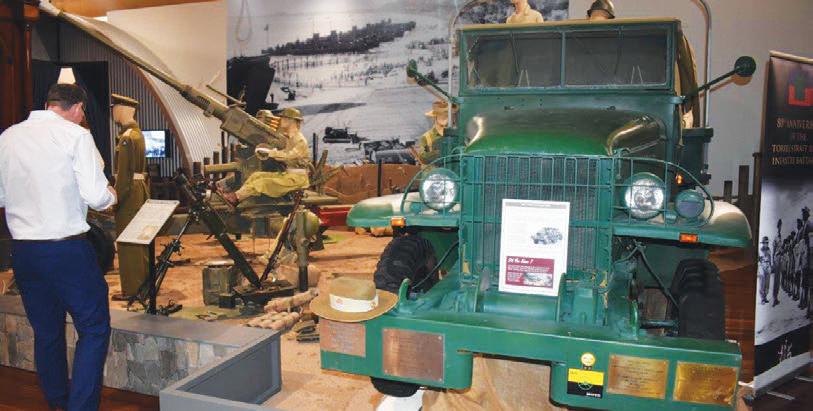
“I think it must have hopped on a red light and got hit by an unknown vehicle,” one told me.
Being a curious type, Spy checked it out and saw the roo carcass up against the pole at a set of lights at a busy intersection.
It seemed as though it had been there for several days.
To make matters worse it was across from a childcare centre, a car wash and KFC.
Spy went along the next day and saw it gone and had to feel sympathy for the local council workers who picked it up to dispose of it.
ere has been a spate of reports from truckies around Oz that kangaroos crossing highways have been more active than normal recently.
On the subject of kangaroos, Spy hears that a tra c cop at Deniliquin in NSW has been removing dead roos from the highways during his regular patrols.
“He has one of those hooks and pulls them o the road which makes it much safer for motorists,” a driver said.
ere have been many roos around the area and Spy knows of some truckies who have even removed some from roads in other parts the country.
Many cops are not popular with our champion drivers, but this lad has been acknowledged for an action which would not be part of his normal duties.


e Royal Hotel located at Mount Hope in NSW has been popular with truckies wanting a meal at a reasonable price.
Mount Hope is situated 95km north of Hillston and 160km south of Cobar and with the surrounding area had a population of less than 30 residents.
Numerous drivers have told Spy it is a great place to stop in a country town.
“I stopped there yesterday and had steak and eggs for breakfast and it was cooked to perfection and nice,” one driver said.
Spy contacted the publican Chris Frankel who runs the pub with his partner Leanne. ey’ve been there for 30 months.
“We get lots of trucks stopping here and there is plenty of parking nearby and just up the street.
eir favourite food is rump steak. e trucks come from many places,” Chris said, adding that they open at 8am.
It has clean showers and toilets – and as a bonus, drivers can read Big Rigs which is delivered there.
e historic hotel was established in 1883.
A GMC CCKW military truck is a genuine celebrity, having been used in the Baz Luhrmann lm ‘Australia’ starring Hugh Jackman and Ni-
cole Kidman. Both stars sat in the trucks during lming. Spy came across the restored green truck when visiting the Military Museum located at the Jezzine Barracks Precinct in Townsville. Plenty of pics get snapped of the truck by visitors at the popular museum.
It is a 2.5 tonne 6x6 cargo truck built in the US and was stationed at Charters Towers during World War II and left there.
I covered the part of the movie which was lmed at Bowen in 2007 when war scenes were shot across from the Grand Hotel; and was also lucky enough to meet Jackman and have a photo taken with him outside a Bowen gym at 6am. Similar trucks were used during the Korean war.
Big winner won’t shout
A truckie who enjoys a utter on the punt was overcome with joy when he backed a 100-1 winner.
He was with some other o -duty drivers and the horse he backed at a Gold Coast meeting paid $118 for the win and $15 for a place.
So, his mates put the “snip” on him and requested that he shout a drink or two for them at the bar.
But the lad refused, which had a couple of them referring to him as a miser.
ey all had a good laugh though when he disclosed why he wouldn’t.
“I only had a $1 each way on it,” he said.
















SMALL eet owner Chris Woolford was driving a Kenworth T650 and had transported caravans from Melbourne to Townsville when I caught up for a chat.
“It has been a 2400km trip and I have to take caravans on to Cairns for a big show,” he said.
Based at Lowood in southern Queensland, Chris said he would be spending 10 days in the far north before bringing the vans back to Townsville.
Chris has been a truckie for 17 years and an owner-operator for 14.



His company is Woolford Haulage and Chris has two others Kenworths – a 604 and 104.
But he doesn’t have any employees, preferring to park the other two up and drive himself when required.
Chris says the worst highways he travels on are between Belyando and Toowoomba.
He also said there are not enough rest areas for drivers.
“We need more with facilities and many have none. Even one of those hole-in-theground toilets are better than nothing,” he said.

Chris’ favourite roadhouse is the Goondiwindi BP which he said provides well for truckies. “ ere is plenty of parking, clean showers and the food is good. I like steak and salad,” said the friendly driver, who was happy to have his pic snapped for Big Rigs near his trusty truck.
ough he added, “I wish you had come along tomorrow after I had it washed!”
Although he doesn’t get much time outside work, Chris said when he does he enjoys old cars such as Kingswoods and Commodores.











ROCKHAMPTON based driver Paul Dobbs, 50, had delivered sh to Townsville, which had come from far away in Tasmania when Big Rigs saw him recently.
He says the BP Roadhouse at Caboolture was a good place to stop. “It has clean facilities and good food.”

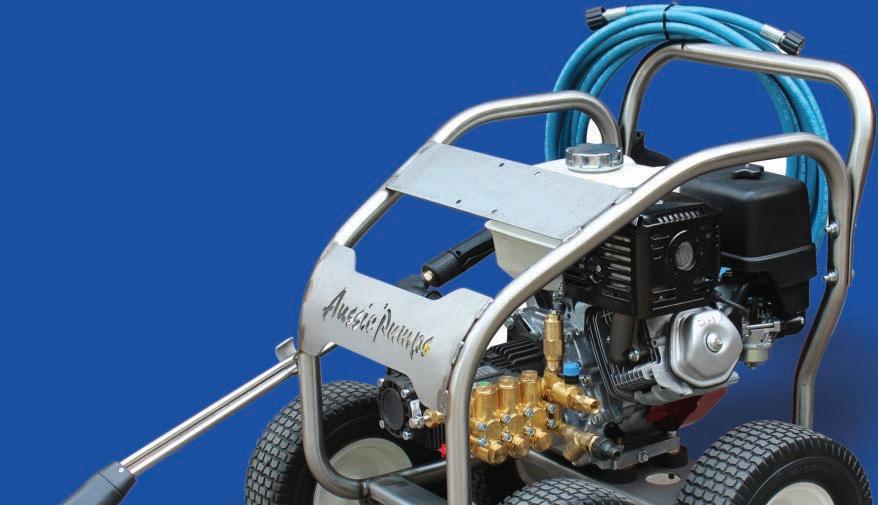
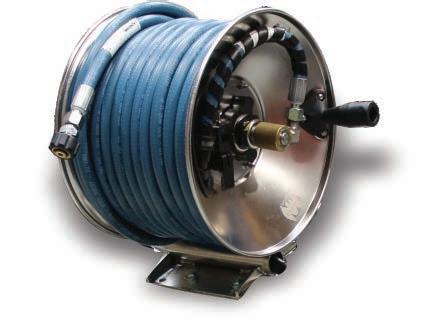

He was driving a Kenworth K200 for Centurion and had stopped at the Townsville Port Access Road hook up pad.
“ e truck carrying the sh came across from Tasmania by ship and a Melbourne driver brought it up to Rockhampton where I took over,” he said.
A truckie for 24 years, Paul has worked for Centurion for the past ve and a half.

However most of the time whilst on trips Paul brings his own food prepared by his wife.
“I have a 12-volt oven and a microwave with me,” he said.
e worst road he gets along is between Condamine and Moonie in Queensland.
Regarding rest areas, he doesn’t think there are enough especially in Queensland.
“ ere are more suitable for big trucks in NSW. In Queensland there are lots of


pull o areas but not so many rest areas with facilities for us drivers,” he said. Ironically Paul was born in the Townsville suburb of Wulguru which is a few kilometres from where I saw him. I noticed a lot of dead insects on the front of his truck and asked where they were most prevalent.
“In many places but there can be a lot especially on the Fitzroy Development Road between Dingo and Nebo. ey seem to come out more after rain,” he said. His favourite hobby outside work is riding his trusty 2012 Harley motorbike.

 Chris Woolford has been an owner-operator for the past 14 years. Image: Alf Wilson
Chris Woolford has been an owner-operator for the past 14 years. Image: Alf Wilson




WHEN I saw owner-operator Terrence Kruger, 43, parked at Townsville’s Port Access Road hook up pad, I asked if he’d mind having his picture snapped.
“I am not used to being a model,” he said, but he obliged.
Based at Richmond beside the Flinders Highway, Terrence was driving a Western Star Constellation 6900 triple with a 620hp Cummins engine and an 18 speed gearbox.
He has been a truckie since he was 18 and purchased a Western Star two years ago.
“I came down empty and am transporting material for the Catholic School at Cloncurry,” he said.
e truck he was driving wasn’t his – it’s is owned by another outback company called Hintz Livestock.
“I have my own Western Star 6964 which is in getting panel beating after I hit some cattle near Julia Creek. I expect to have it back within a month,” Terrence explained.
Terrence rates the worst roads he travels on as the Gregory Development Highway between Charters Towers and Clermont, and the stretch of the Flinders from Hughenden to Cloncurry.
I asked Terrence what hobbies he enjoyed. “I don’t get much time o work as I am mostly on the road,” he said. So what are the things Ter-
rence most loves about his life on the road.
“It really is a good life and I am my own boss so that is really great,” he said.
When he does get some time o , Terrence likes tending to 100 head of cattle he has on rural acreage.
Terrence said that since a good friend of his from Richmond, Ryan Friend, had appeared in Big Rigs, he had been getting lots of positive comments.
“Drivers are referring to Ryan as a celebrity,” Terrence said.
Like most outback drivers, I found Terrence to be a friendly driver who is enjoying life to the fullest.
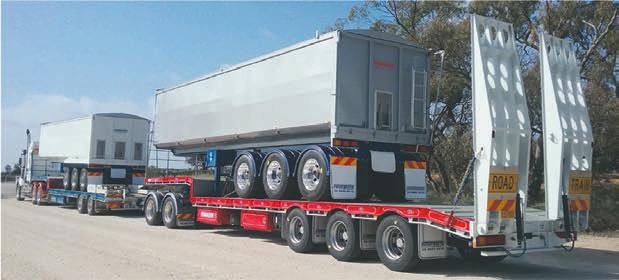

Ogilvie oozes knowledge about the road transport industry – which isn’t surprising considering his decades of experience.
Super t for his age of 71, I recently saw Ron checking out his load of scrap at the BP Cluden roadhouse parking area. “ e scrap is going back to Brisbane,” he said.
Based in Brisbane, Ron was driving a Kenworth T610 and
had brought up garages from the state capital to Townsville.
He’s been a truck driver for 52 years and looks set to continue for some time.
When asked about his favourite roadhouses, Ron was swift to answer. “I do like it here at the BP Cluden as the facilities are clean and the parking is good,” he said.
Regarding hobbies outside work, Ron enjoys watching golf
but says he doesn’t have a handicap these days.
Ron believes the biggest challenge faced by small operators is the rising cost of fuel.
But he did also nominate wages for drivers who are employed by smaller operators.
“I used to employ some drivers but these days just have one truck which I operate myself. My son now runs the Brisbane part doing local work,” he said.





































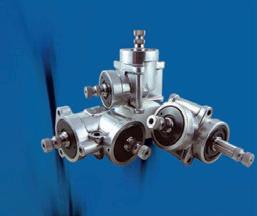





AS the backbone of Victoria’s and the nation’s economy, the transport industry plays a pivotal role in facilitating trade, connecting communities, and driving economic growth.
However, to sustain this vital role and meet the evolving needs of our state, significant investment in transport infrastructure is imperative.
The Victorian Transport Association (VTA) staunchly advocated for robust funding allocations in both the 202425 Victorian and federal budgets to address the pressing infrastructure challenges faced by our transport network and supports allocations from both jurisdictions.
In the face of burgeoning population growth and increasing urbanisation, congestion has become a major bottleneck hampering productivity and hindering the efficient movement of goods and people.
The North East Link project stands as a beacon of hope to alleviate congestion woes in Melbourne’s north-eastern corridor, one of the most congested and economically vital areas in the state.
With the Commonwealth’s allocation of $3.2 billion for this transformative project, the VTA applauds federal
commitment to enhancing connectivity and unlocking economic potential.
The North East Link is not merely a road project; it is a catalyst for economic prosperity, job creation, and improved liveability. By seamlessly linking the Eastern Freeway to the M80 Ring Road, this project will significantly reduce travel times, enhance freight efficiency, and alleviate pressure on existing arterial routes.
The associated direct and indirect job creation during construction and the longterm economic benefits stemming from improved connectivity underscore the project’s significance in driving Victoria’s post-pandemic recovery.
Beyond the North East Link, the VTA advocated for a comprehensive approach to transport infrastructure investment that addresses both road and rail networks. Rail freight plays a crucial role in transporting goods across Victoria and beyond, yet aging infrastructure and capacity constraints pose significant challenges.
Therefore, investments in rail freight infrastructure are paramount to unlocking the full potential of Victoria’s freight industry, enhancing supply chain efficiency, and reducing road congestion.
This needn’t be to the detriment of road freight operators because as I’ve stated many times, trains and ships carry freight but only trucks deliver.
Furthermore, the VTA urges the prioritisation of regional transport infrastructure projects to support economic development outside metropol-
itan areas. Adequate funding for regional road upgrades, rail connectivity, and freight hubs is essential to bolster regional economies, connect regional communities, and foster social inclusion.
Neglecting regional infrastructure investment not only stifles growth in these areas but also exacerbates disparities between urban and regional areas.
In addition to addressing immediate infrastructure needs, the VTA emphasises the importance of future-proofing our transport network against emerging challenges such as climate change and technological advancements.
Sustainable transport solutions, including investment in hydrogen and electric vehicle charging infrastructure and public transport, are essential to reducing emissions, mitigating environmental impact, and enhancing the resilience of our transport system.
Embracing innovation and leveraging emerging technologies such as autonomous vehicles and smart traffic management systems can revolutionise the efficiency and safety of our transport network. However, realising the full potential of these technologies requires strategic investments in research, development, and infrastructure deployment.
Critics may argue against increased infrastructure spending, citing budgetary constraints or competing priorities. However, the VTA firmly believes that investment in transport infrastructure is not a mere expenditure but rather





a strategic investment in the nation’s future prosperity.
The returns on these investments, in terms of economic growth, job creation, and improved quality of life, far outweigh the upfront costs.
The VTA urges both the Victorian and federal govern-
ments to prioritise transport and infrastructure investments in their delivery of these and future budgets.

The allocation of $3.2 billion for the North East Link is a commendable step in the right direction, but more needs to be done to address the multifaceted challenges facing our transport network. By investing in strategic transport infrastructure projects, we can unlock economic potential, improve connectivity, and drive Victoria and Australia towards a brighter and more prosperous future.

ON Sunday, May 12, we marked the end of the 11th year of National Road Safety Week.
This year, the National Heavy Vehicle Regulator (NHVR) partnered with Safer Australian Roads and Highways (SARAH) to remind drivers to prioritise safety behind the wheel.
During National Road Safety week, we saw communities come together to raise awareness about the importance of safe driving practices. I would like to commend everyone who got involved in these initiatives, your efforts are key to driving down road trauma and saving lives. However, our work is far

from
commitment
As you all know, heavy vehicles, due to their size and weight, pose unique challenges on the road. They are difficult to maneuver and require more space, and longer stopping distances. With 70% of serious incidents involving both heavy and light vehicles the fault of the light vehicle driver, it is crucial that general motorists know how to drive safely around heavy vehicles.
This National Road Safety Week, the NHVR reminded light vehicle drivers to:
• Leave two lanes for trucks when they are turning.
• Give trucks extra space.
• Avoid lingering in a truck’s blind spot.
As part of our We All Need Space and Don’t #uck With A Truck road safety campaigns, the NHVR aims to address the biggest risks on the roads and ultimately reduce serious truck-related incidents and fatalities. Our campaigns boost awareness of the key problems caus-
ing accidents and positively shifting understanding and behaviours.
We are continuing to build on these campaigns, so we can communicate the most important road safety messages and ensure everyone makes it to their destination safely.
National Road Safety Week was also a timely reminder for truck drivers to make certain that their movements are safe and efficient.
Ensuring a heavy vehicle is being operated safely requires regular maintenance and inspections, comprehensive training, and adherence to safety protocols. However, it isn’t just about the vehicles themselves, it is about the behaviour of those behind the wheel.
It is critically important we educate drivers about the risks associated with fatigue, distraction and speeding. I encourage any heavy vehicle driver with a question regarding their compliance, to chat to the NHVR’s on-road offi-
cers, who are always out and about and ready to support them. The NHVR’s commitment to road safety extends far beyond compliance with regulations; it is about establishing a culture of vigilance and responsibility amongst all road users.
From heavy vehicle drivers to fleet operators, from government agencies to the general public, we all have a role to play in road safety.
As we reflect on the events that were held across the country earlier this month, let’s recommit to ensuring we ‘drive so others survive.’
I encourage everyone to honour the memory of those we have lost on our roads, by taking concrete steps to prevent future tragedy.
Together, we can make our roads a safer place. Read more about the NHVR’s campaigns at nhvr. gov.au/weallneedspace and nhvr.gov.au/dontmuckwithatruck.
over. The 187 lives lost on our roads last year is a sobering reminder of why we all must remain steadfast in our




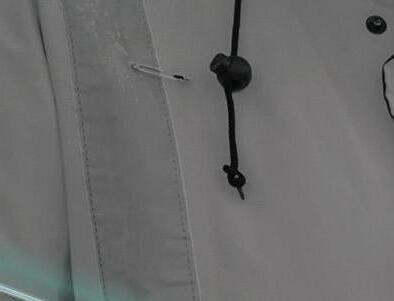









I READ with great interest and even greater incredulity, the glowing story on the views of the NHVR’s former director of prosecutions in which she claims the NHVR strikes the right balance between education and enforcement.
I cannot sit here and just let the claims made by Belinda Hughes in that story stand without responding, based on my long and detailed knowledge of the NHVR’s actual practices.
First, I stress that SARTA has always been a strong supporter of the NHVR and the need for it to be e ective in its di cult role. at said, we have been and will continue to be constructively critical where necessary to secure improvements and address errors and unfair action in speci c cases, in the best interests of the industry, which includes having an effective NHVR and fair and consistent enforcement of the Heavy Vehicle National Law.
Yes, it is true that on the road the NHVR has generally achieved a far better, more e ective and fairer approach to enforcement and ensuring safety and compliance by the industry, including applying a preference for inform and educate.
ere are, and always will be, exceptions but my experience has been that we can generally reach out to the right people within the NHVR and resolve such cases successfully, because we have a good and professional working relationship with the NHVR.
I take great exception, however, to Belinda Hughes’ gilding of the prosecution lily. I am aware of numerous cases, some of which have been substantial matters, where the NHVR has utterly failed to apply its much lauded “inform and educate before prosecute” policy. I have even written to
the CEO and chairman of the NHVR about those failings.
e NHVR prosecutions unit obviously has a di cult job and its unreasonable to expect zero errors. My comments here are not about occasional oversights or errors but rather about fundamental failures of the NHVR prosecutions unit to comply with its own published Prosecution Policy and Procedures, which can be found on their website.
e Prosecutions Procedures document sets out the ve steps they (supposedly) follow, namely:
1. We receive briefs of evidence from the investigator and representations from customers and/or collection agencies from the di erent jurisdictions.
2. We consider the evidence within the brief to determine if there is su cient evidence to lay charges or proceed with the ne.
3. We consider the evidence within the brief against the criteria in the Prosecution Policy.
4. We draft appropriate charges and arrange for those charges to be led in court.
5. Once charges have been led, we arrange for service of those charges on the defendant including a covering letter explaining the process and the prosecutor’s contact details.
6. We appear as an advocate in court on behalf of the NHVR and prosecute the o ence. at all seems fair enough and it would be, if they adhered to it. e reality however, particularly over the last three years, has been that too often the NHVR prosecutions unit has utterly failed to follow Steps 1 and 2 and seemingly Step 3. e NHVR makes a strong point, at every opportunity, that the industry is their customer. I know their senior management are committed to that concept and endeavour to ensure all NHVR sta understand and apply it in their dealings with the industry.
Yet the NHVR prosecutions unit, and even some of their
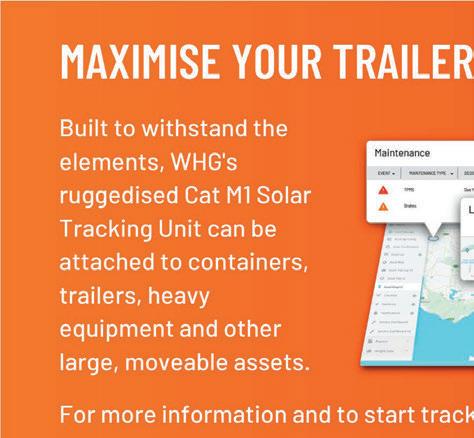

investigations team, have all too frequently failed to even engage with the “customer” including the HV operator. It’s also been clear that before leaping to the prosecution stage they have failed to review and consider the evidence at all, let alone to determine if there is su cient evidence to lay charges and/or if there is a reasonable prospect of conviction; all of which is required under their Prosecution Policy and Procedures.
e NHVR Prosecutions
Unit has at times simply accepted the allegations raised by a police force and taken for granted that Steps 1 to 3 have been met. It is a very serious and unacceptable, let alone unfair, failure to comply with their own policy and procedures when they just accept what they are handed at face value and without undertaking their own details assessment of the ‘evidence’.
e use of enforceable undertakings (EUs) is a sensible and reasonable approach that can
have substantial bene ts for the operator involved and even for the industry, if it genuinely leads to improved safety.
I am aware of cases where operators with a sound and proven good safety record, have been encouraged to take an EU rather than the expensive and stressful process of slugging it out in court. Sometimes that makes sense and is reasonable but more often than should be the case the use of an EU becomes a chest-beating PR prop for the NHVR and speci cally for the prosecutions unit.
I am aware of some cases where the EU itself was absurd and/or the way in which the prosecutions unit insisted the operator manage certain aspects of it was unreasonable and unjusti able.
If the NHVR and its prosecutions unit were truly serious about improvements to safety, they could and I suggest should, inform the industry about a given safety or compliance issue and how to avoid/
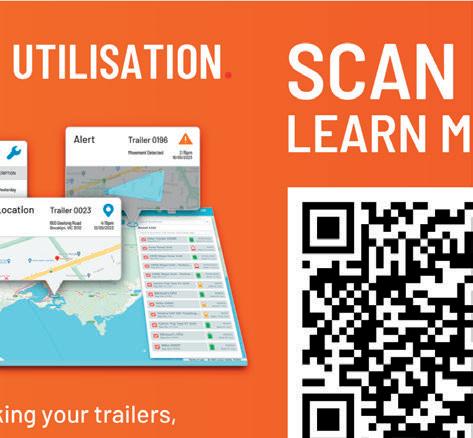
address it, without shouting from the rooftops about having managed to impose yet another EU, as if that is the priority and the desired outcome.
Each time they do, this they are in fact engendering a growing negativity within the industry and adding to a sense of an adversarial environment, rather than building a truly collaborative and constructive relationship with the industry.
Used properly EUs are a good tool for improvement but they must not be treated by the NHVR as a feather in their cap or something to be bragged about.
NHVR should, in my view, adhere to its published procedures and policies and focus on its challenging work and not seek out awards and gongs for the trophy cabinet.
e best test of their e ectiveness and fairness is the level of support they enjoy from the broader industry based upon their actual performance as we work together to ensure the best safety outcomes.
e NHVR and police agencies need to realise the enormous stress and harm to drivers’ and operators’ mental health that they cause when they unnecessarily engage unreasonably and unfairly with drivers and HV operators.
Yes, drivers and operators must deal reasonably and professionally with NHVR o cers and police who are going about their job, but those o cers are equally obliged to act reasonably and professionally in the performance of their duty and so too are the NHVR’s investigative teams and the prosecutions unit. is is a work in progress, and I believe that it is only by mature and professional dialogue between the industry and the NHVR and, if they would listen, the police, that we will actually achieve the right balance between education and enforcement to the same degree of compliance with which the industry is held to account in meeting our obligations.


what (6)
12 What do we call a soldier who runs away from duty (8)
13 What are puddings known as (8)
15 Name a short firearm (6)
16 Which contrivance is used for calculating (6)
17 Possessing a sharp mind (6)
20 Which













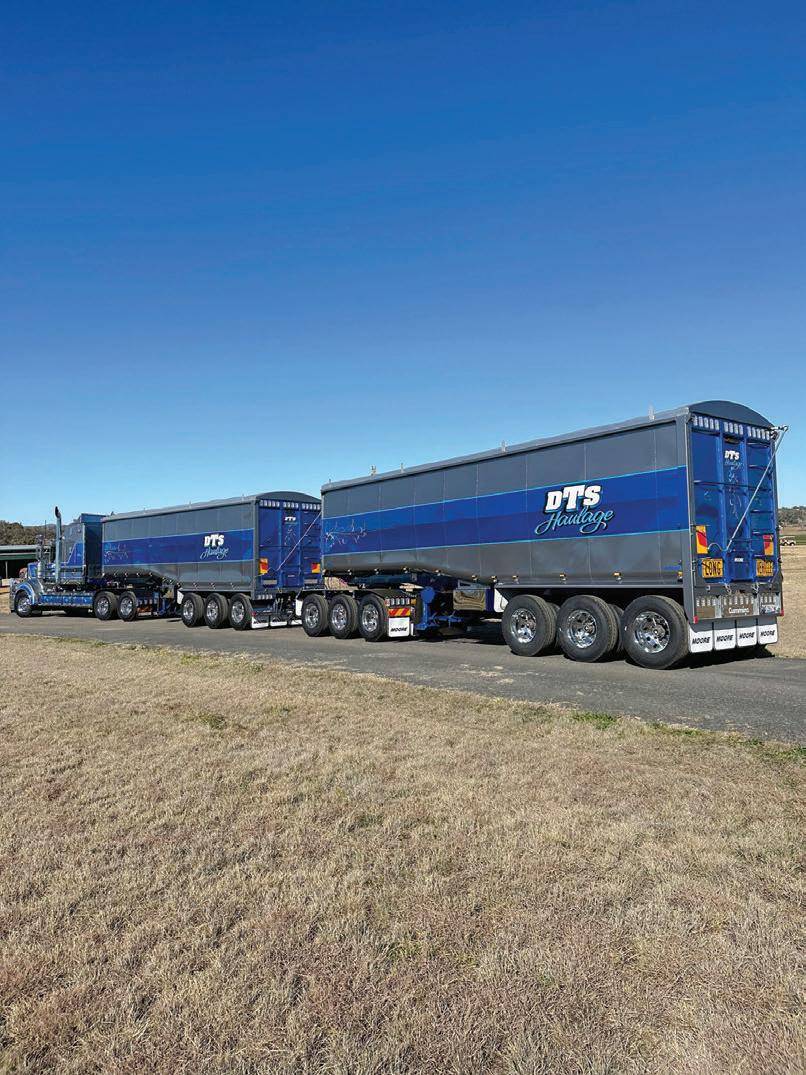
After applying for countless jobs without success, this go-getter is thankful that
South East Queensland Hauliers
BY DANIELLE GULLACIORIGINALLY from Colombia, Carolina Bayona Pineros – now 44 – moved to Queensland in 2016 in search of a better life for her family.
Back home, Carolina had studied and worked hard to develop a successful career in human resources – but unable to speak English, when she arrived here, she had to start from scratch.
She committed herself to learning the language and spent three years working in hospitality, before she was confident enough to take the next step and begin applying for jobs within her field of expertise.
Carolina says she lost count of the amount of jobs she applied for before one company decided to give her a chance to prove she had what it takes.
That company was South East Queensland Hauliers (SEQH), where she now heads up the human resources department, with six people working within her team.
(SEQH) gave her a chance.

“In the beginning, I thought I’d never see the light of being able to get back into my field. I felt like I was just applying for so many jobs without any success,” she revealed. “I really had to prove myself, but I feel blessed that someone gave me the opportunity to work here, put my skills to use and show that I am capable of many things.”

Started in the 1960s and still family owned and operated, SEQH operates from depots in Brisbane and Toowoomba. The company works closely with its customers, in particular freight forwarders and customs brokers, to import and
3 steps to getting new employees


ALL YOU NEED IS ONE PERSON TO BELIEVE IN YOU AND GIVE YOU THAT OPPORTUNITY.”
CAROLINA BAYONA PINEROS
export shipping containers and break-bulk freight.
SEQH currently employs approximately 230 people, including around 120 drivers; and runs a fleet of about 90 trucks, operated as semis, B-doubles, A-doubles and road trains, along with side-loaders.
Brett Plummer is the managing director and owner of SEQH and Nathan Craner serves as deputy managing director.
Carolina joined the company in November 2019. She went through five interviews before being offered an admin role, working part time for three days a week. “Brett and Nathan weren’t sure about my English at first which wasn’t great at that point. It took me about three years to really learn the language and even now, I still make mistakes! After the interviews, I kept pushing and
they gave me an opportunity,” Carolina explained.
“At first I was working in fleet compliance and then an opportunity came up to work in HR, which is my area of expertise and where my passion lies. That was about two and a half years ago.”
Though she admits, “When SEQH gave me the opportunity to apply for this role, I wasn’t sure I’d get the job, not so much for the skills but for the language – but I’ve had a lot of support from management.”
Carolina says she’s so grateful to her leaders – Brett and Nathan – for giving her a shot.
“Because all you need is one person to believe in you and give you that opportunity.”
And now Carolina is also helping others in the business develop and further their skills.
“Brett and Nathan are both very passionate about staff training, so that’s where we came up with our driver training program to help upskill our drivers.”
Originally created in response to driver shortages, SEQH’s driver training program is called Road Masters, and
includes assessments for new drivers, upskill training, incident training and upgrading employees’ licences from HR and HC to MC.
To date, 12 drivers have upgraded their licence to MC through the program, with SEQH paying half the cost of the licence test.
Just recently this training program was recognised at the National Trucking Industry Awards in Canberra, taking out the National Training Excellence Award.
Carolina says this was the first time SEQH had been nominated for such a prestigious national accolade, and she was honoured to accept the award on the company’s behalf.
According to Carolina, SEQH continues to grow and develop its culture and values and she continues to work closely with Brett and Nathan to achieve the company’s goals.
“Nathan and Brett are also really big believers that bringing in the right leaders is critical to business success. Leadership has a huge impact on our culture, so we’ve introduced


a monthly program for the leadership team that focuses on effective communication,” Carolina said.
As well as that, the business has introduced a new mentor program, where experienced company drivers are able to go through the necessary accreditation to become driver trainers.
As Carolina revealed, SEQH has also found it difficult to find skilled side loader operators in recent times, so there are plans for mentors to help upskill drivers to take on these roles.
In her almost five years with SEQH, Carolina says she has championed the level of diversity within its workforce, which has increased greatly.
“There wasn’t a lot of diversity when I first came here. Now we have people from all different backgrounds including
from the Philippines, New Zealand, Papua New Guinea, China, Brazil and Colombia.
“We have also set some aggressive targets to improve female participation in our
business with a particular emphasis on training female operators in non-traditional roles, such as drivers, forklift operators and workshop mechanics.”

A NEW $19.4 million training facility for industries developing, operating and maintaining EVs and related technology is to be established at the Canberra Institute of Technology (CIT).
The Electric Vehicle (EV) Centre of Excellence will develop training for mechanics, technicians and developers of light and heavy vehicles and mobile plant technology, hydrogen vehicles and associated fields such as charging infrastructure installation and maintenance, and diploma and degree apprenticeship pathways.
The centre will network with TAFEs in other states and leverage partnerships with universities, jobs and skills councils and industry to build up Australia’s skills base to support increased EV uptake and the transition to net zero, said a media statement announcing the news.
A launch date for the opening of the facilty, however, has not been released.
Tesla, Komatsu and the Australian Mining and Automotive Skills Alliance are three key industry partners who have already committed to be involved with the centre and will support the design and delivery of industry relevant training products, apprenticeship pathways and job pathways for graduates.
CIT will also receive $3.2 million to update automotive facilities for EV training at its
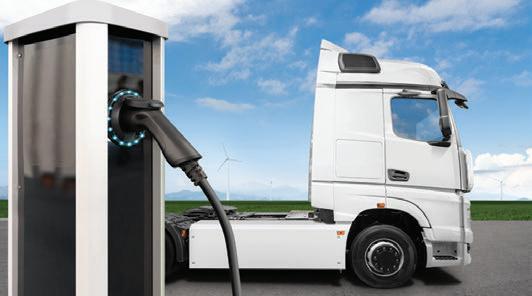
Fyshwick campus.
To ensure the workshop is fit for purpose, the grant will also be used to purchase new equipment for students to train with cars and medium and heavy electric vehicles.
These facilities will help upskill the Canberra region and the Australian automotive and transport workforce with the skills required to support the transition to net zero.
The project is part of the $50 million TAFE Technology Fund, which is upgrading and expanding TAFE facilities, including laboratories, workshops, new equipment, and simulated learning environments.
“This Centre of Excellence in Canberra will help boost collaboration between CIT, other TAFEs across Australia and the university sector,” said Federal Minister for Skills and Training, Brendan O’Connor.
“It will deliver the EV skills and knowledge our labour market requires and strengthen our net zero capability.”
The Albanese government is investing $9.7 million in the CIT facility, a total matched by the ACT Government.
Earlier this month, the federal government also announced it would be expanding the New Energy Apprenticeships Program which provides incentives to encourage more people into sectors that are playing a critical role in transitioning Australia to a net-zero economy.
From June 1, 2024, the program – which gives apprentices up to $10,000 in support over the duration of their apprenticeship – will be broadened to include sectors with exposure to clean energy, including designing and constructing hydroelectricity, solar and battery installations, electric vehicle maintenance and more.





Easter Group, located in Wacol, provides time sensitive road transporting solutions to many companies throughout Queensland, New South Wales, South Australia and Victoria. We are a family owned business, operating since 1976. We currently have the following positions available: OPERATIONS ALLOCATORS (Brisbane based only) You will be required to work on a rotating roster including Days-Nights-Weekends Previous Operations experience preferred.












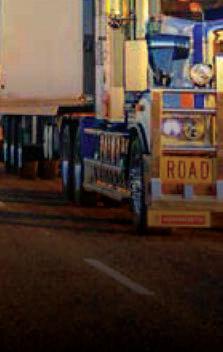
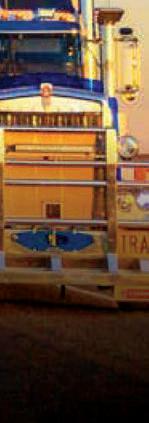
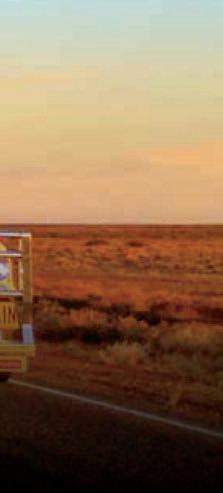


Come and work for us as we are committed to:
• Training and further education • Your safety
• Maintaining an impressive Fleet On offer arepermanent full time and roster positions including paid leave entitlements and public holidays. Drivers will need to be available to be scheduled for work falling across the 7 days of the week.
The successful Applicant will:
• Hold a current MC licence (minimum two years) • Have knowledge of the HVNL and Load Restraint • Be professional • Be reliable
To apply for the Operations/Driver positions please contact Operations Manager or by emailing your resume to


To apply for Mechanic positions please forward your resume to Workshop Manager via email to employment@kseaster.com.au






















